Publikationen
Link zu Blogbeiträgen, Kommentaren, und kommentierten, zitierbaren Abbildungen
Link zu Konferenzbeiträgen, Postern, Vorträgen, Workshops
Link zu archivierten Daten
| Diese Liste wird sehr unregelmäßig aktualisiert werden, da ich nicht mehr für's Wissen-Schaffen und Publizieren
bezahlt werde,
letzteres also weitgehend eingestellt habe (Altlasten gibt es jedoch noch einige und besondere Fälle). Für Neueres siehe Sektion
Blogbeiträge, Kommentare, und kommentierte, zitierbaren Abbildungen unten, siehe auch
TIT Section for Improbable Research auf ResearchGate und Mastodon
(Google+, Twitter, und RGs Projektseiten sind ja tot). |
Preprint/freigegeben zur öffentlichen Diskussion/eingereicht |
Cardoni, S., R. Piredda, G. W. Grimm, M. Santorsola, T. Denk,
E.-D. Schulze, D. De Luca & M. C. Simeone (2024).
Pruning the tree: comparing OTUs and ASVs for processing High-Throughput Sequencing 5S-IGS nuclear ribosomal DNA
in phylogenetic studies.
Authorea, doi: 10.6084/m9.figshare.28000349.
— Daten @ figshare
|  |
Worth, J.R.P., G. W. Grimm, T. Ihara-Udino, P. Li, A. Papageorgiou,
M. C. Simeone, P. Shanjani, J. López-Sáez, Y.-C. Chiang, K. Kitamura, N. Tomaru &
T. Denk (2025).
Whole chloroplast genomes reveal a complex genetic legacy of lost lineages, past radiations and secondary
contacts in the dominant temperate deciduous tree genus Fagus.
bioRxiv, doi: 10.1101/2025.06.03.653586.
— Supplement-Dateien gesammelt im figshare Projekt
„Supplement to Worth et al. (2025) Reticulate history of beech“ (J. R. P. Worth, G. W. Grimm & T. Denk, 2025).
|  |
Gedruckt |
Denk, T., G. W. Grimm, S. Cardoni, K. Csilléry, M. Kurz, E.-D. Schulze,
M. C. Simeone & J. R. P. Worth (2021).
A subgeneric classification of Fagus (Fagaceae) and revised taxonomy of western Eurasian beeches.
Willdenowia, 54, S. 151-181.
»Freier Zugang«
— Daten @ figshare
|  |
Denk, T., G. W. Grimm, A. Hipp, J. M. Bouchal, E.-D. Schulze &
M. C. Simeone (2024).
Niche evolution in a northern temperate tree lineage: biogeographic legacies in cork oaks (Quercus sect. Cerris).
Annals of Botany, 131, S. 769-787.
»Freier Zugang«
— Daten, Skripte etc. auf A. Hipps GitHub-Seite
— stabiles Daten- und Supplement-Repositorium für die Publikation selbst auf zenodo
|  |
Cardoni, S., R. Piredda, T. Denk, G. W. Grimm, A. C. Papageorgiou,
E.-D. Schulze, A. Scoppola, P. S. Shanjani, Y. Suyama, N. Tomaru, J. R. P. Worth &
M. C. Simeone (2021).
5S-IGS rDNA in wind-pollinated trees (Fagus L.) encapsulates 55 million years of reticulate evolution
and hybrid origins of modern species.
The Plant Journal, DOI: 10.1111/tpj.15601.
»Freier Zugang«
— Wiley Sharing Link
— Daten @ figshare
[urspr. Version]
— Preprint @ bioRxiv
| 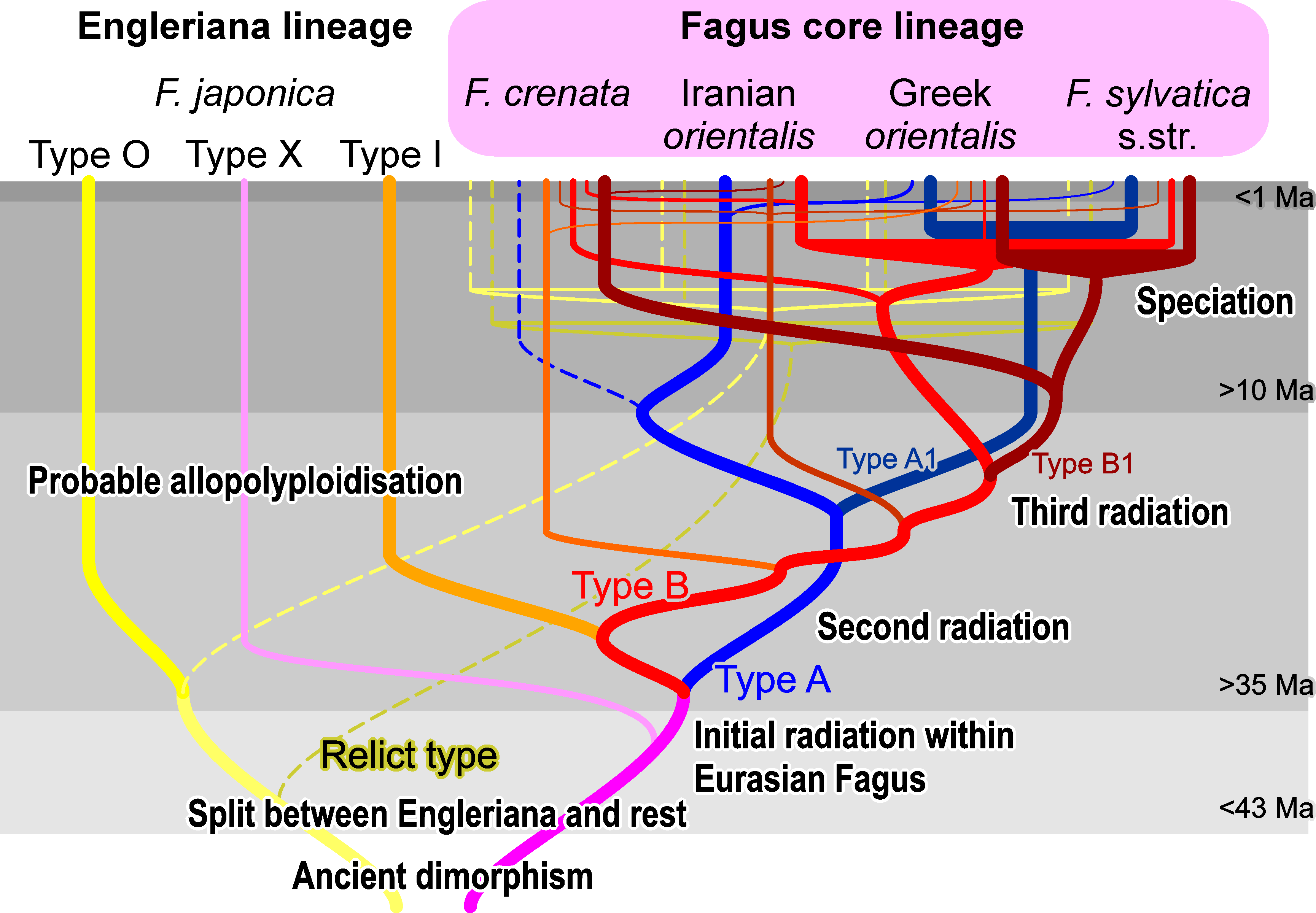 |
Piredda, R., G. W. Grimm, E.-D. Schulze, T. Denk &
M. Simeone (2021).
High-throughput sequencing of 5S-IGS in oaks - exploring intragenomic variation and algorithms to recognize
target species in pure and mixed samples.
Molecular Ecology Resources, 21, S. 495-510.
— Daten @ figshare
— Preprint @ Authorea, DOI: 10.22541/au.158696014.43811940.
| 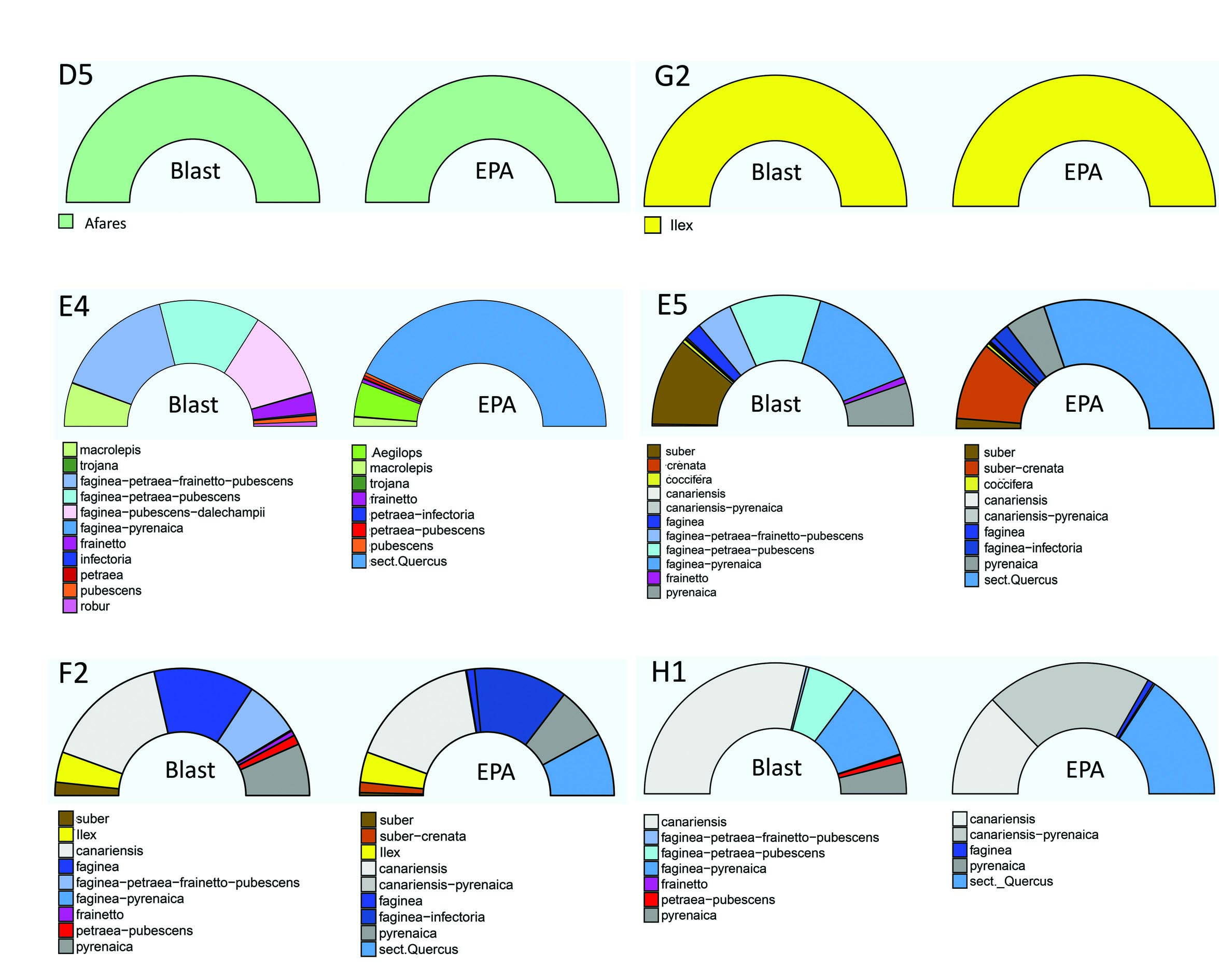 |
Liede-Schumann, S., G. W. Grimm, N. M. Nürk, A. J. Potts, U. Meve &
H. E. K. Hartmann(†) (2020).
Phylogenetic relationships in the southern African genus Drosanthemum (Ruschioideae, Aizoaceae).
PeerJ, 8: e8999.
»Freier Zugang«
— Daten etc. deponiert bei Datadryad
— Preprint @ bioRxiv
—
Trees informing networks explaining trees @ Genealogical World of Phylogenetic Networks gibt eine
Einleitung in die gezeigten, in dieser Form bisher noch nie verwendeten, phylogenetischen Netzwerke.
| 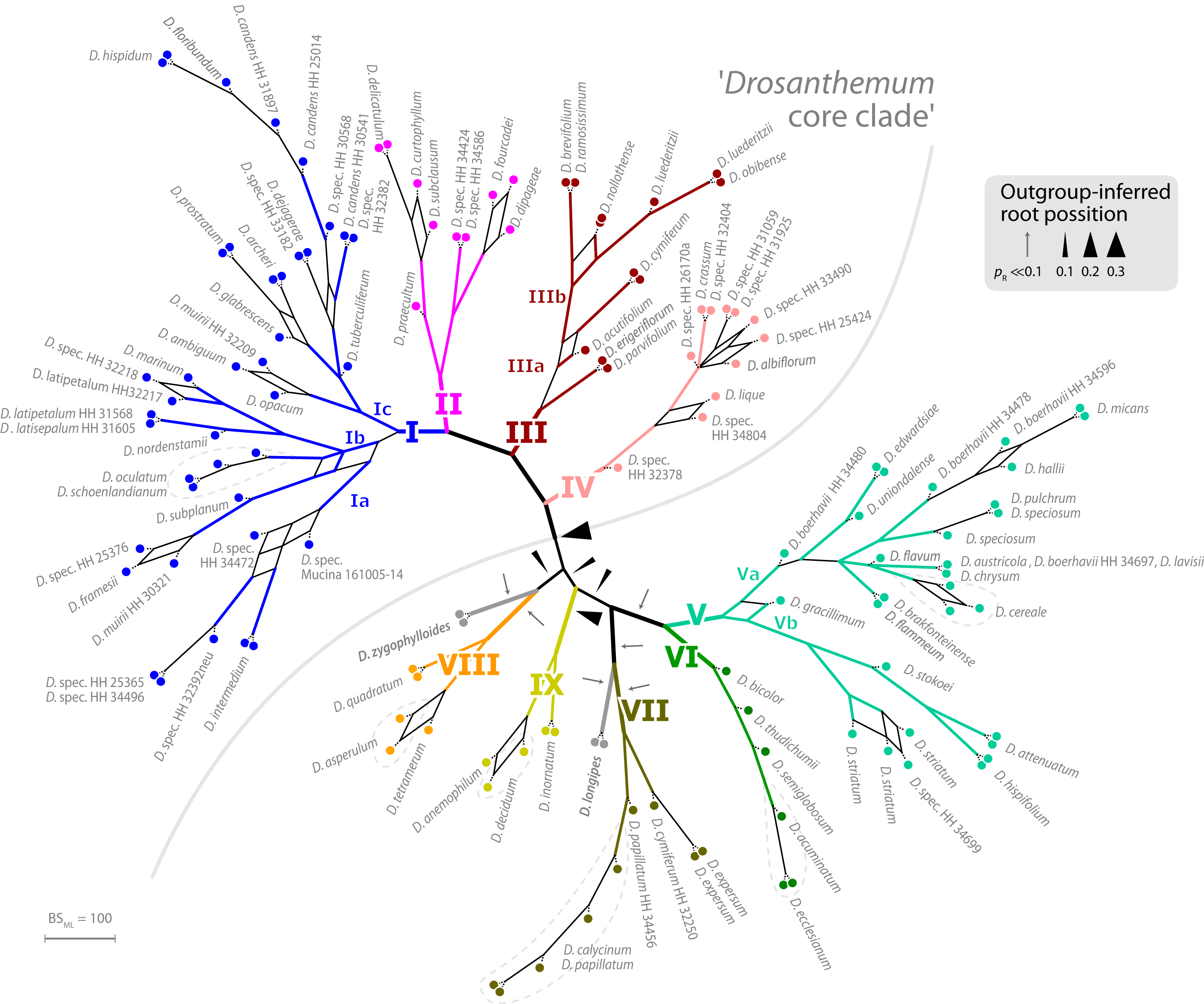 |
Powers, J. M., G. W. Grimm &
J.-M. List (2020).
Evolutionary dynamics in the dispersal of sign languages.
Royal Society Open Science, 7: 191100 [E-Pub].
»Freier Zugang«
- Preprint @ Humanities Commons,
DOI: 10.17613/0smt-j414
- — Blog-Miniserie @ Genealogical World of Phylogenetic Networks:
-
[Teil 1] Stacking networks based on sign language manual alphabets
-
[Teil 2] Character cliques and networks – mapping haplotypes of manual alphabets
-
[Teil 3] Untangling vertical and horizontal processes in the evolution of handshapes
- Presse (deutschsprachig):
[APA]
[Damals]
[DLF]
[ORF]
[Standard]
[Spektrum.de]
[SZ]
[]
| 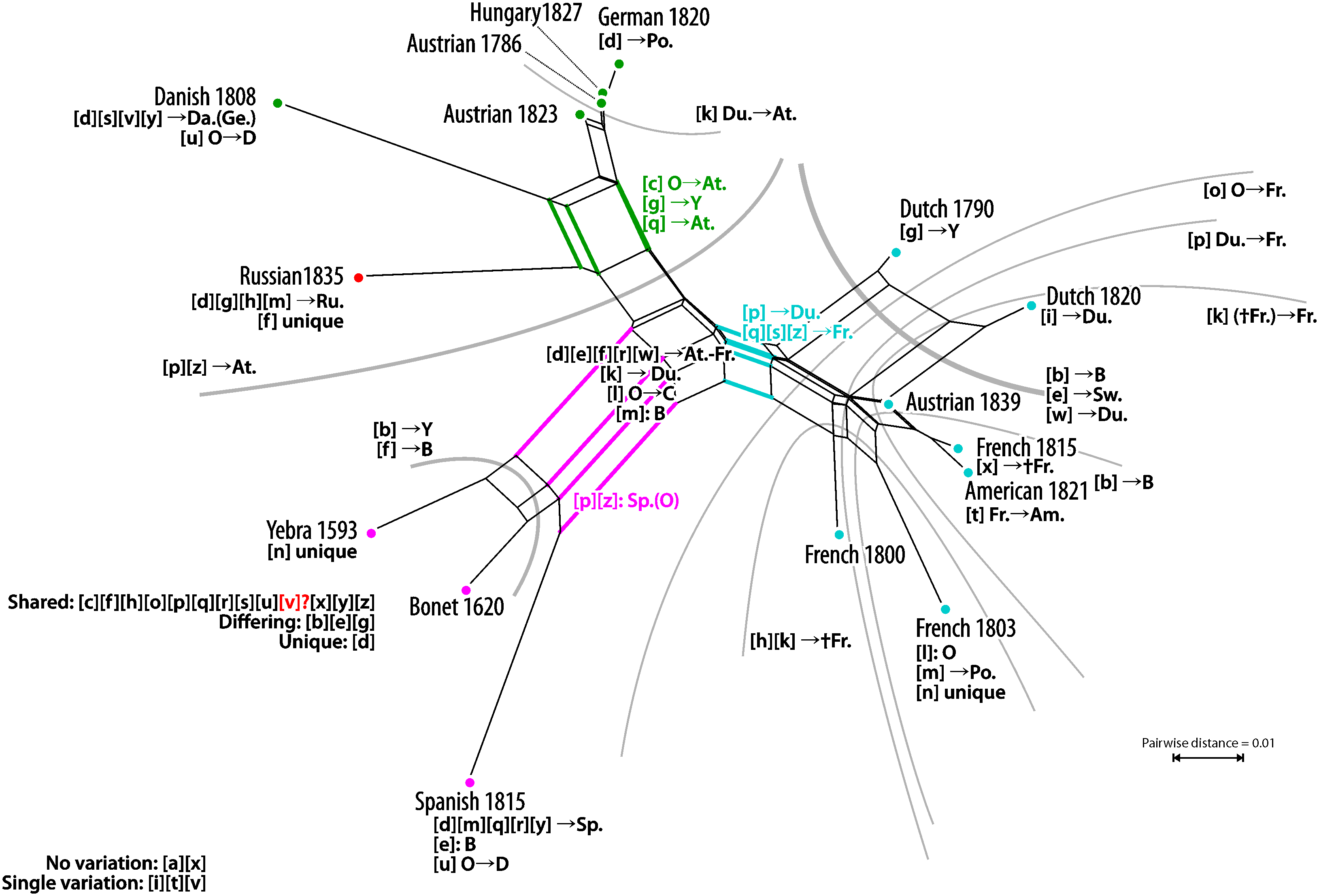 |
Hipp, A. L., P. Manos, M. Hahn + 21 Autoren inkl. mir (2019).
Genomic landscape of the global oak phylogeny. New Phytologist, DOI: 10.1111/nph.16162.
»Freier Zugang«
— Preprint @ bioRxiv, DOI: 10.1101/587253.
— Siehe auch diesen Blogbeitrag @ Genealogical
World of Phylogenetic Networks: Next-generation neighbor-nets
— Pressemitteilung des Morton Arboretums, verfügbar über phys.org
| 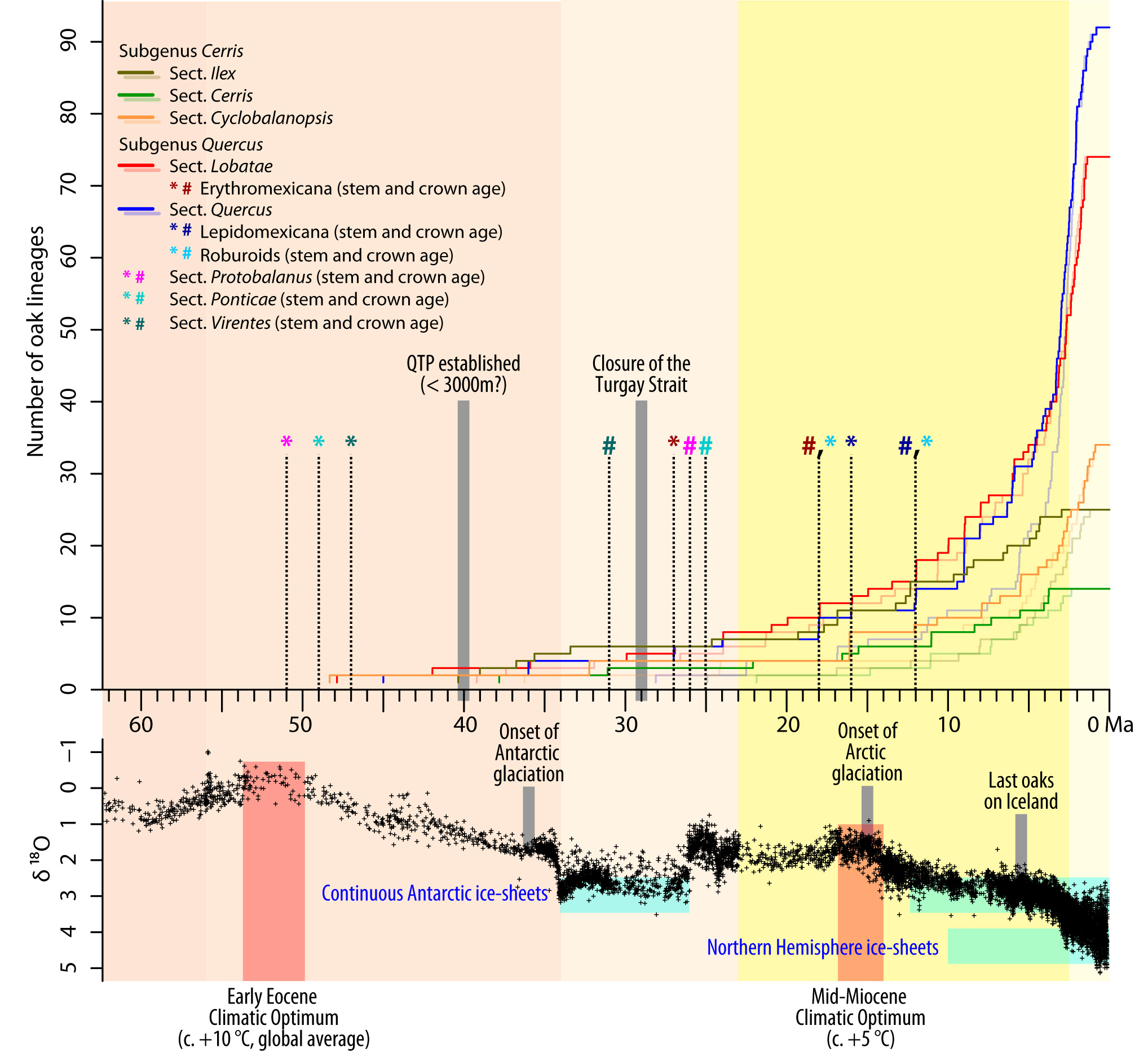 |
|
Liede-Schumann, S., U. Meve, &
G. W. Grimm (2019).
New species in Drosanthemum (Aizoaceae: Ruschioideae).
Bradleya, 2019, S. 226-239.
| 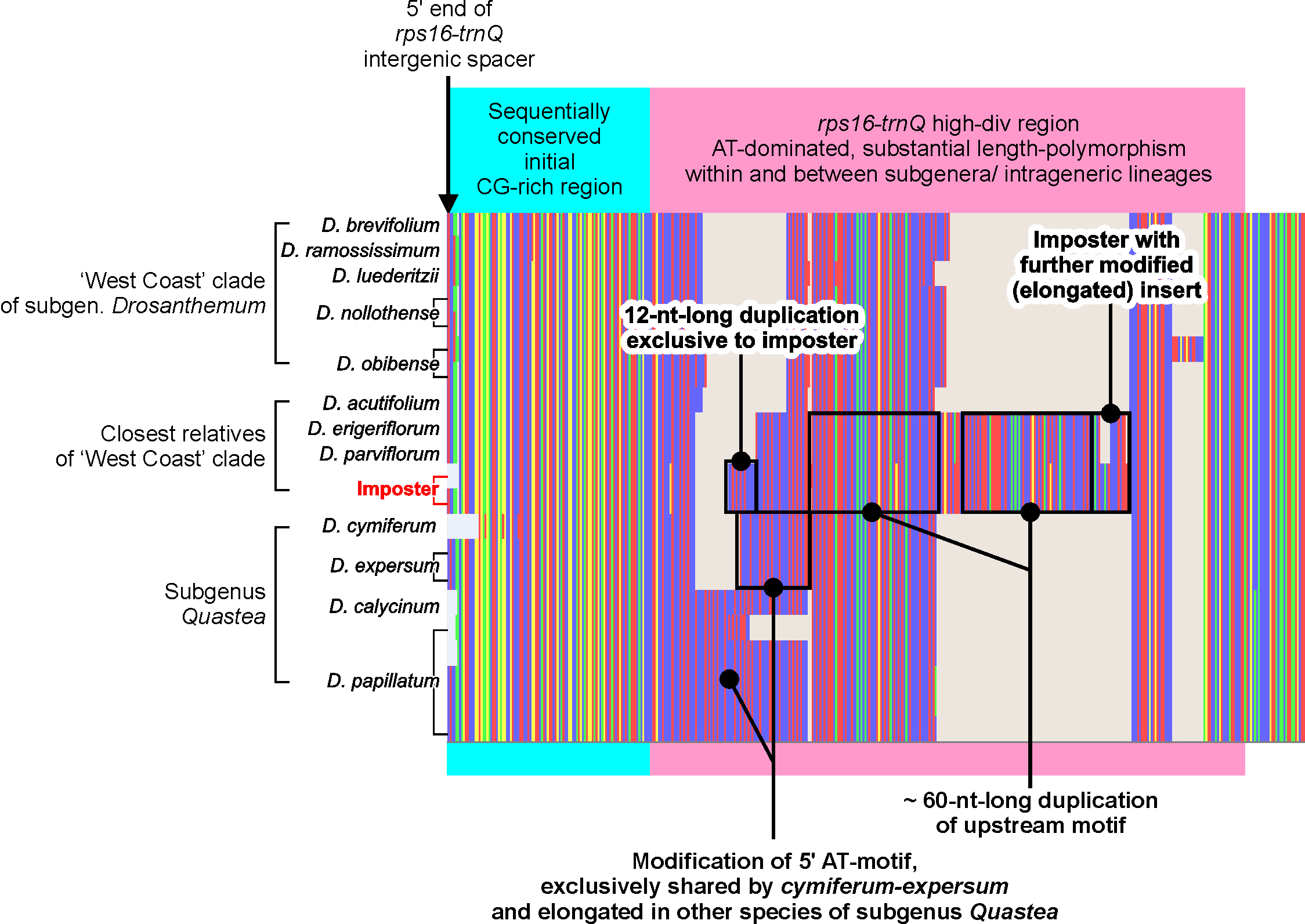 |
|
Denk, T., C. M. Zohner, G. W. Grimm &
S. S. Renner (2018).
Plant fossils reveal major biomes occupied by the late Miocene Old-World Pikermian fauna.
Nature Ecology & Evolution, DOI: 10.1038/s41559-018-0695-z
| 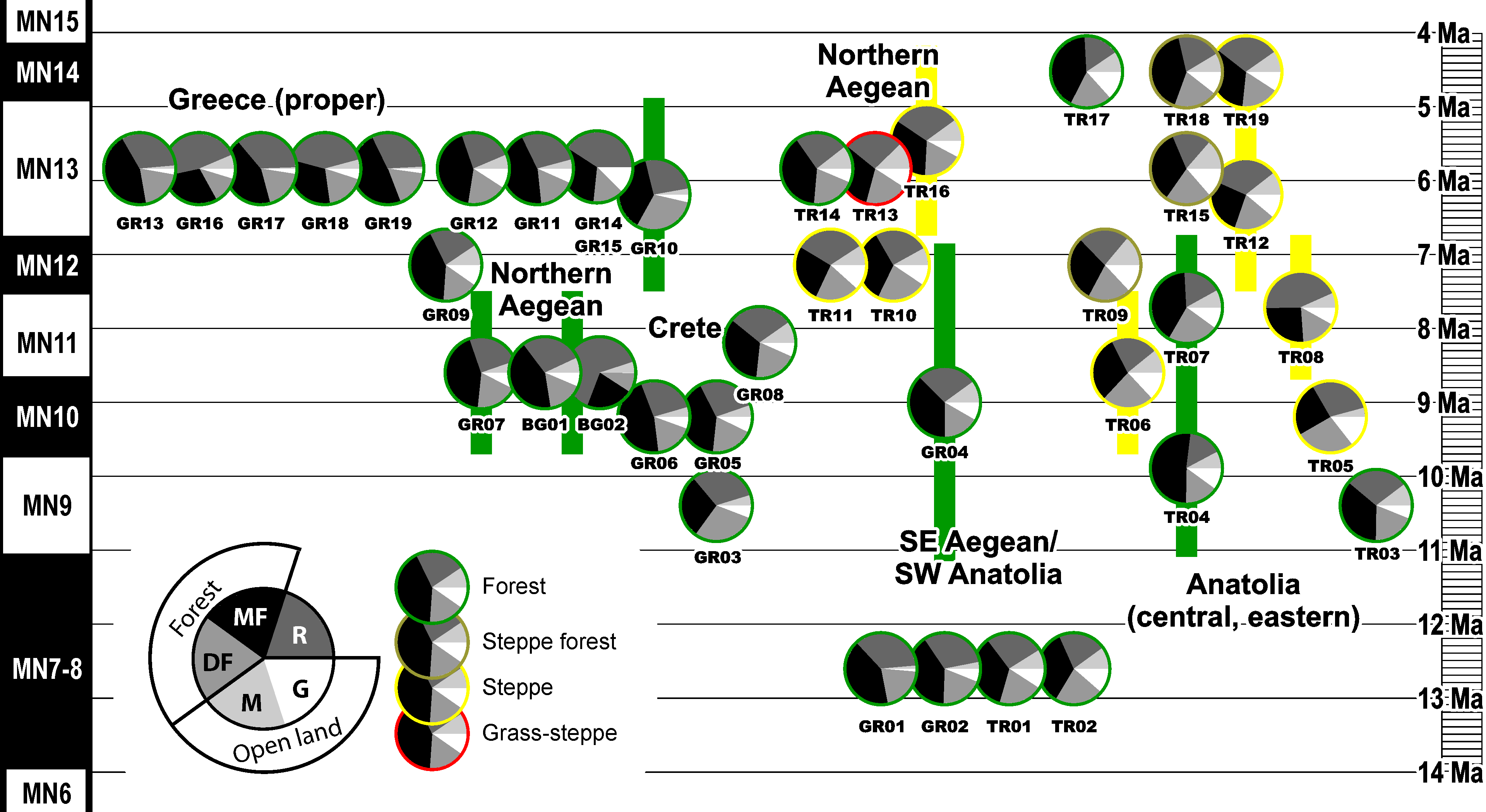 |
Grímsson, F., G. W. Grimm, A. J. Potts, R. Zetter &
S. S. Renner (2018).
A Winteraceae pollen tetrad from the early Paleocene of western Greenland, and the fossil record of Winteraceae
in Laurasia and Gondwana.
Journal of Biogeography, 45, S. 567-581.
»Halb-Freier Zugang (nur lesen)«
— SDA (Supplementary Data Archive) inkludierend gespiegelte
appendices (Originalformate anstelle PDF) und Dateien zur ML Analyse, dem character mapping
(Potts & Grimm, 2017), und zur Etablierung von semi-quantitativen Köppen signatures
— Zitierung für character mapping R-script:
Potts, A. J., G. W. Grimm (2017). Ancestral state reconstruction
of seven continuous and 20 categorical pollen traits scored for extant Winteraceae. Supplement to Grímsson et al.
"A Winteraceae pollen tetrad from the early Paleocene of western Greenland, and the fossil record of Winteraceae
in Laurasia and Gondwana". http://rpubs.com/AlastairPotts/WinterIsComing
| 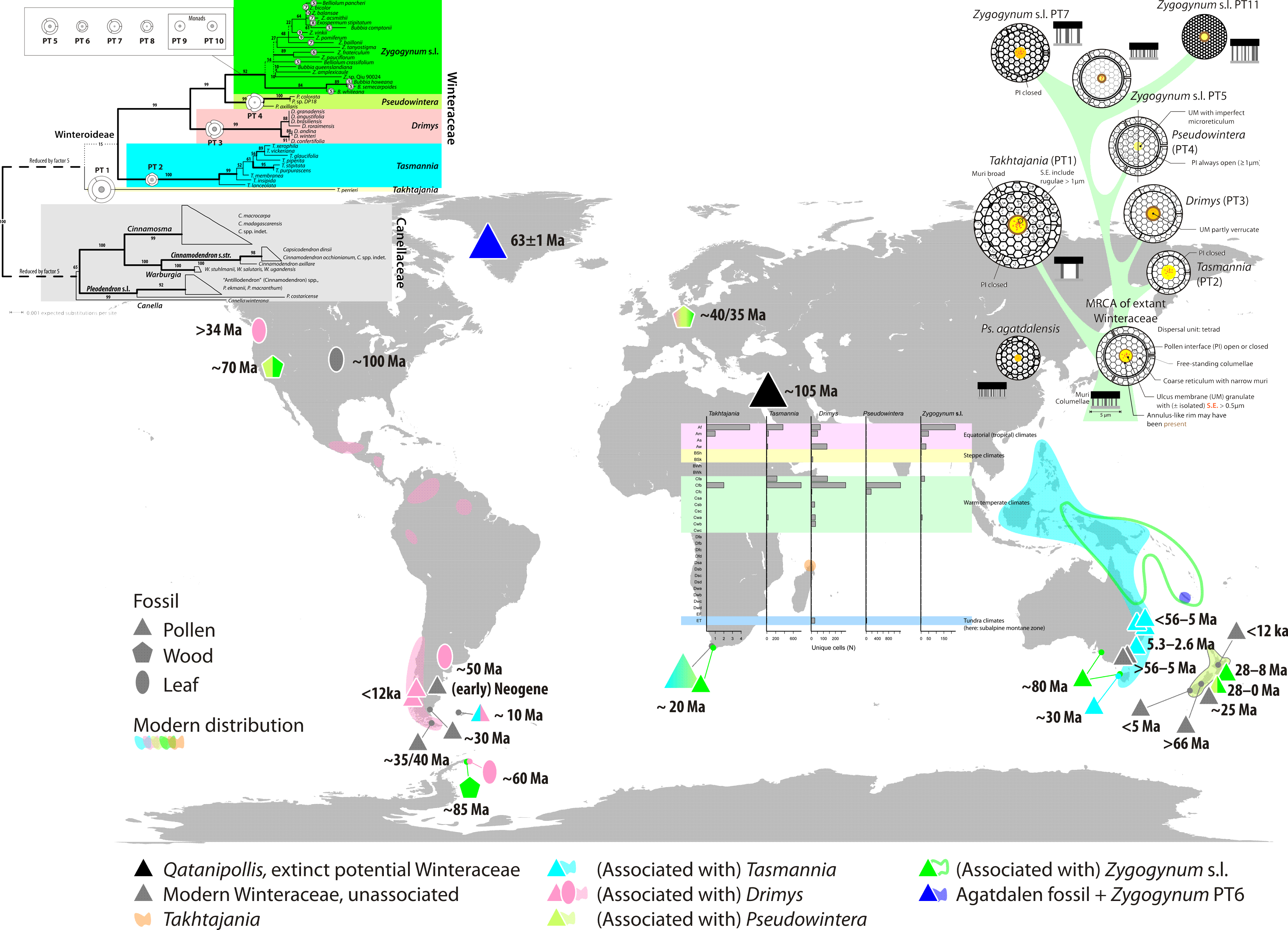 |
Grímsson, F., G. W. Grimm &
R. Zetter (2018). Evolution of pollen morphology in Loranthaceae.
Grana, 57, S. 16-116.
»Freier Zugang«
— Gespiegeltes OSA (Online Supplementary Archive) inkludierend
Supplement-Dateien (Files S1–S7) und Analysedateien. Inkludiert auch eine kritische Analyse
(File S6; [PDF])
des Loranthaceae und Schwestergruppen-Subsets der Studie von Su et al. (Taxon, 2015). Siehe dazu auch:
Using consensus networks to understand poor roots, Post vom 12.12.2017 @ Genealogical World of Networks
Erklärung: Die Reanalyse des Su et al. Subsets hat kaum Relevanz für unsere Studie,
wurde jedoch auf Grund der uninformierten Kommentare von zwei der drei Reviewer (inklusive eines vom Editor
extra bestellten Phylogenieexperten für die 2. Reviewrunde) hinsichtlich der genetischen Datenlage notwendig.
| 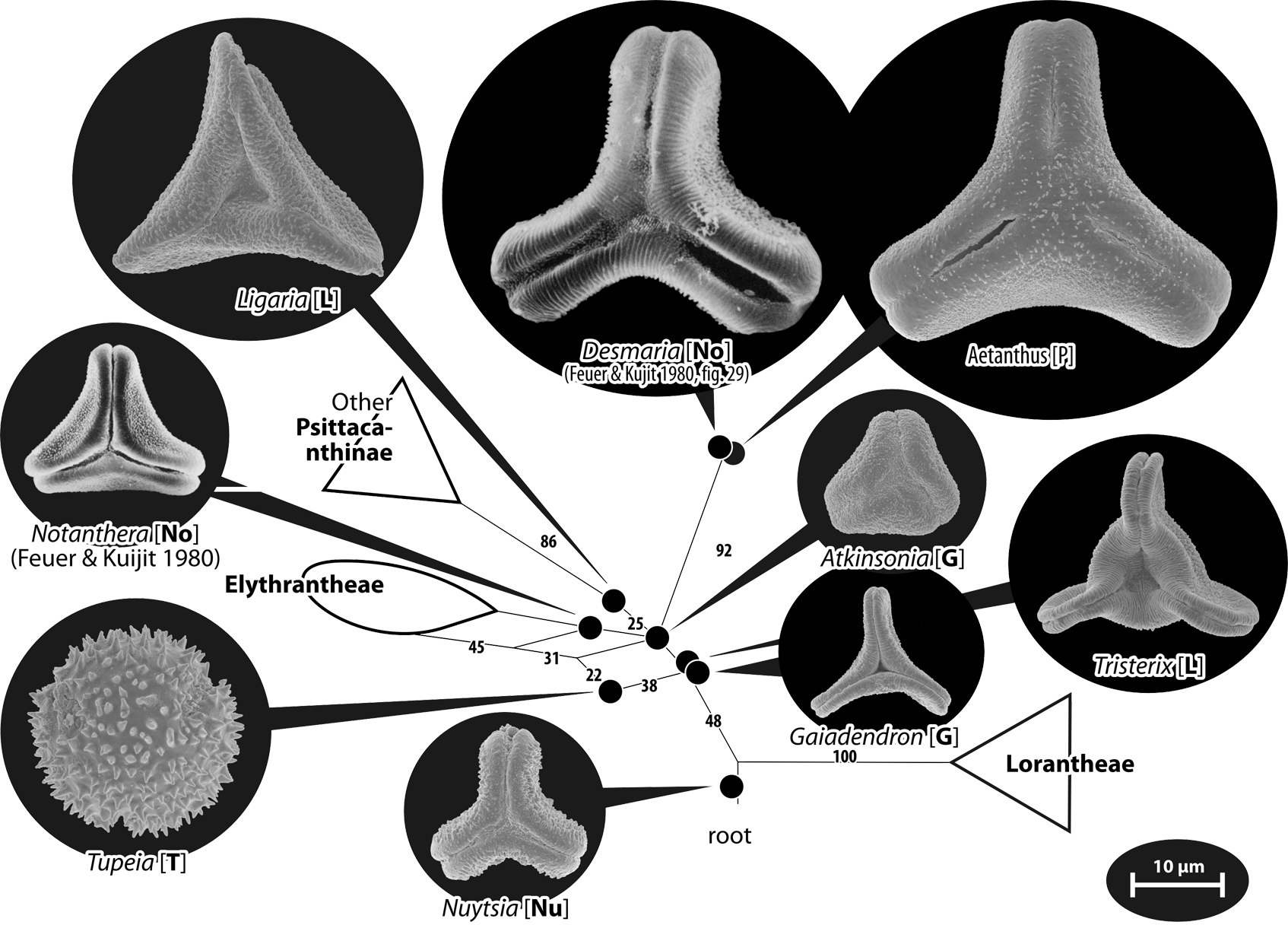 |
Simeone, M. C., S. Cardoni, R. Piredda, F. Imperatori, M. Avishai,
G. W. Grimm & T. Denk (2018).
Comparative systematics and phylogeography of Quercus Section Cerris in western Eurasia: inferences from
plastid and nuclear DNA variation.
PeerJ, 6: e5793 [E-Pub].
»Freier Zugang«
— Link zum Preprint @ PeerJ Preprints
— OSA (Online Supplementary Archive)
inkludierend Primärdaten und Analysedateien. Simeone et al. (2018), DOI: 10.7717/peerj.5793/supp-6.
— Siehe auch diesen Blogbeitrag @ Genealogical
World of Phylogenetic Networks: Reticulation at its best
| 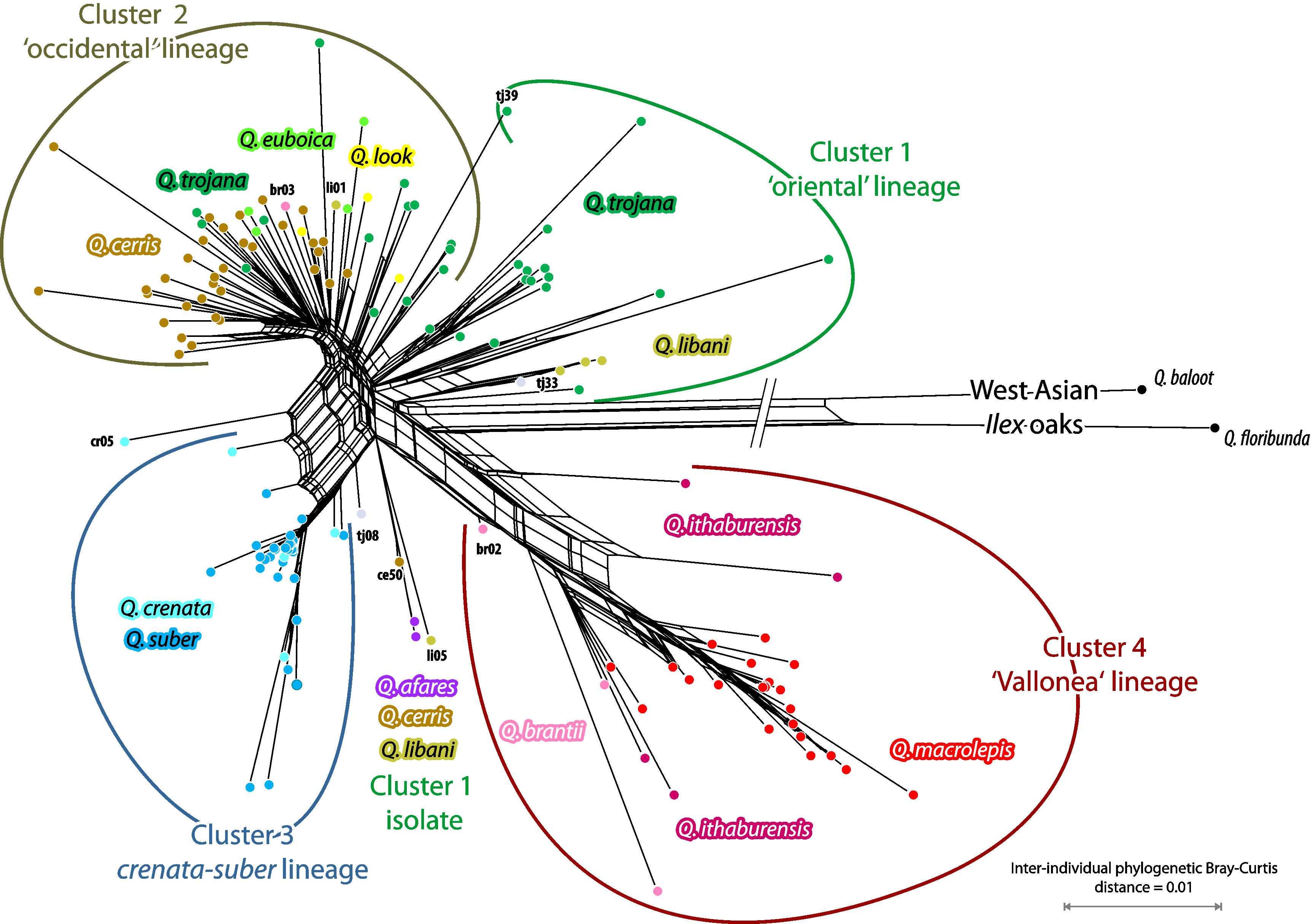 |
Banag, C. I., A. Mouly, G. J. D. Alejandro, B. Bremer, U. Meve,
G. W. Grimm & S. Liede-Schumann (2017). Ixora
(Rubiaceae) on the Philippines - crossroad or cradle?
BMC Evolutionary Biology, 17, 131 [E-Pub].
»Freier Zugang«
— ESA (electronic supplementary data archive) mit allen Primärdaten-
und Analysedateien (Matrizen, Bäume, Netzwerke).
— TreeBase-Spiegel der Datenmatrix und
der Primärbäume.
—
Post @ Genealogical World of Networks über Median Networks auf Gattungsebene.
| 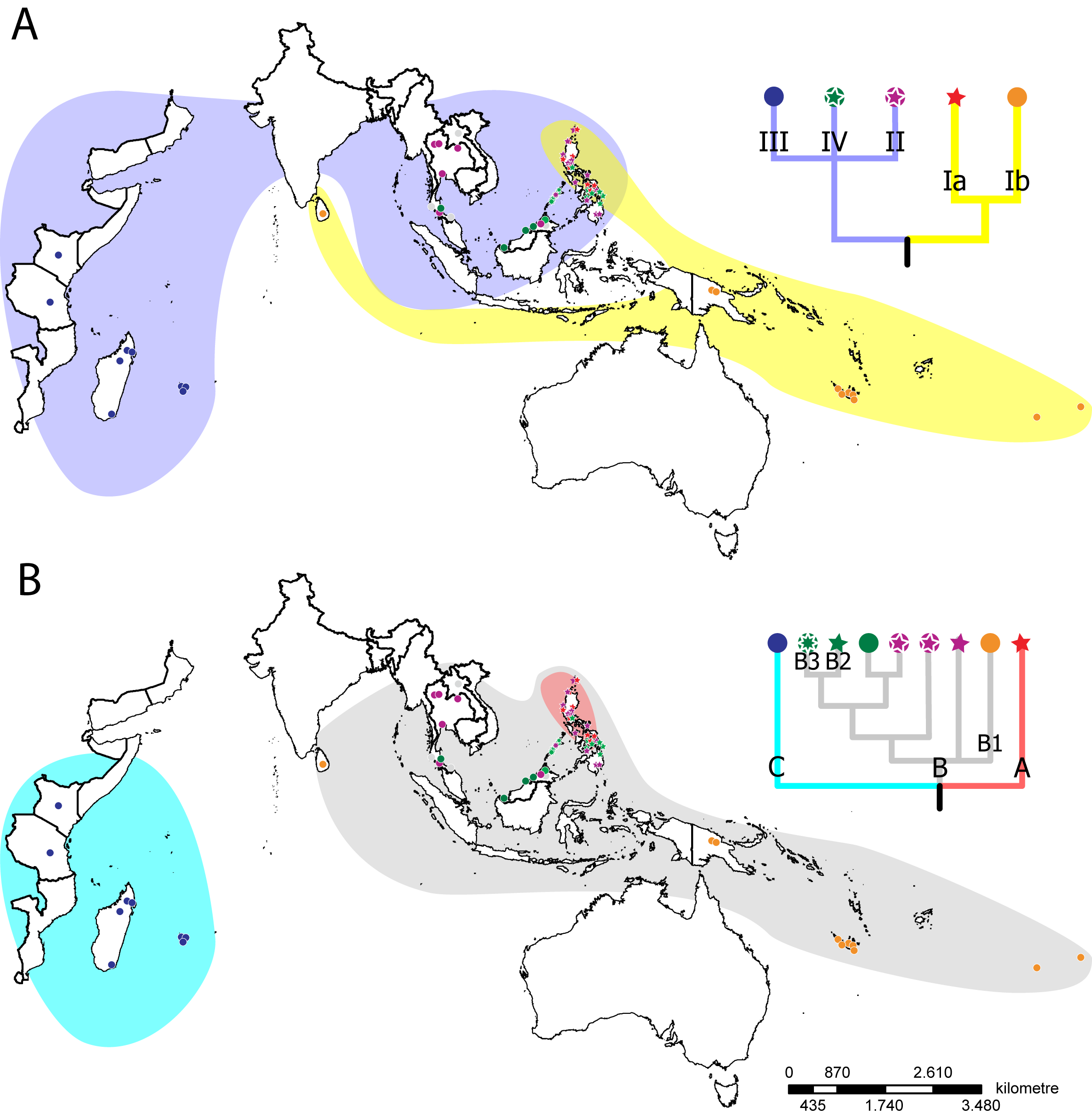 |
Bomfleur, B., G. W. Grimm &
S. McLoughlin (2017).
The fossil Osmundales (Royal Ferns)—a phylogenetic network analysis, revised taxonomy, and evolutionary
classification of anatomically preserved trunks and rhizomes.
PeerJ, 5, e3433 [E-Publ].
»Freier Zugang«
— Datenreferenz für die phylogenetischen Analysen: Dryad Digital Repository
(Anm.: andere Autorenreihenfolge als im Paper, geschuldet einer gewissen Ehrenkäsigkeit meines Erstautors)
— Anschließender Post @ Genealogical World of Networks:
Stacking neighbour-nets: A real-world example
| 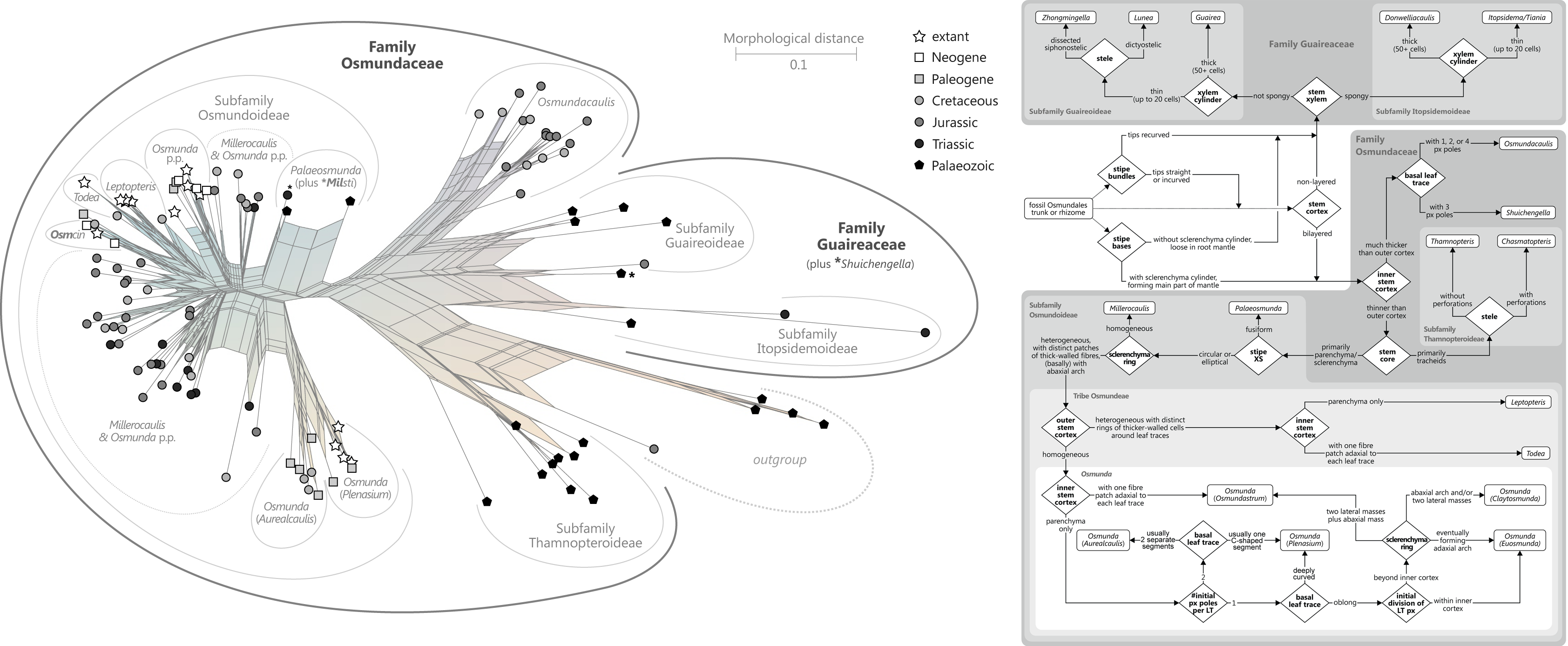 |
Denk, T., G. W. Grimm, P. S. Manos, M. Deng &
A. L. Hipp (2017).
An updated infrageneric classification of the oaks: review of previous taxonomic schemes and synthesis of
evolutionary patterns.
In:E. Gil-Pelegrín, J. J. Peguero-Pina &
D. Sancho-Knapik (Ed.): Oaks Physiological Ecology. Tree Physiology, Band 7. Springer, Cham, S. 13-38.
— ursprüngliche Version als Preprint@bioRxiv »Freier Zugang«
— taxonomische Tabelle (Appendix) als OpenData@figshare »Freier Zugang«
(zitierbar mit eigener DOI). Änderungswünsche, Anmerkungen willkommen, bitte dazu den Erstautor kontaktieren.
| 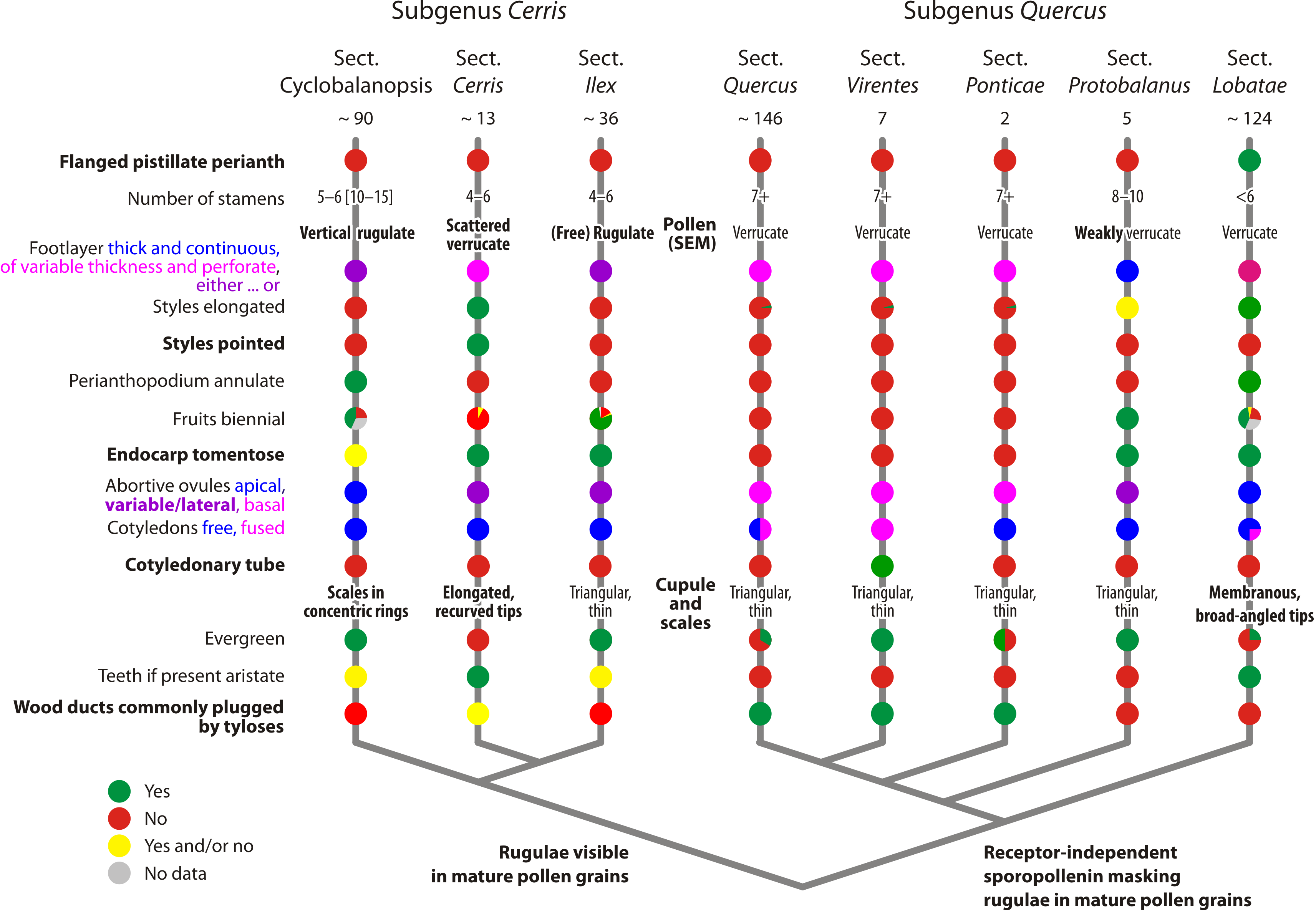 |
Denk, T., D. Velitzelos, H. T. Güner, J. M. Bouchal, F. Grímsson
& G. W. Grimm (2017). Taxonomy and
palaeoecology of two widespread western Eurasian Neogene sclerophyllous oak species: Quercus drymeja Unger
and Q. mediterranea Unger.
Review of Palaoebotany & Palynology, 241, S. 98–128.
*Warnung: Falsche Links und ähnliche Fehler sind dem ausgesprochen
stümperhaften Proof-editing seitens Elseviers zuzuschreiben, das in seiner Fähigkeit besticht bei
jedem Versuch eines Proofs neue Fehler einzubauen. Es ist viel besser RELX Aktionär zu sein als Elsevier-Autor.
|  |
Grímsson, F., G. W. Grimm &
R. Zetter (2017). Tiny pollen grains: first evidence of
Saururaceae from the Late Cretaceous of western North America.
PeerJ, 5, e3434 [E-Publ].
»Freier Zugang«
| 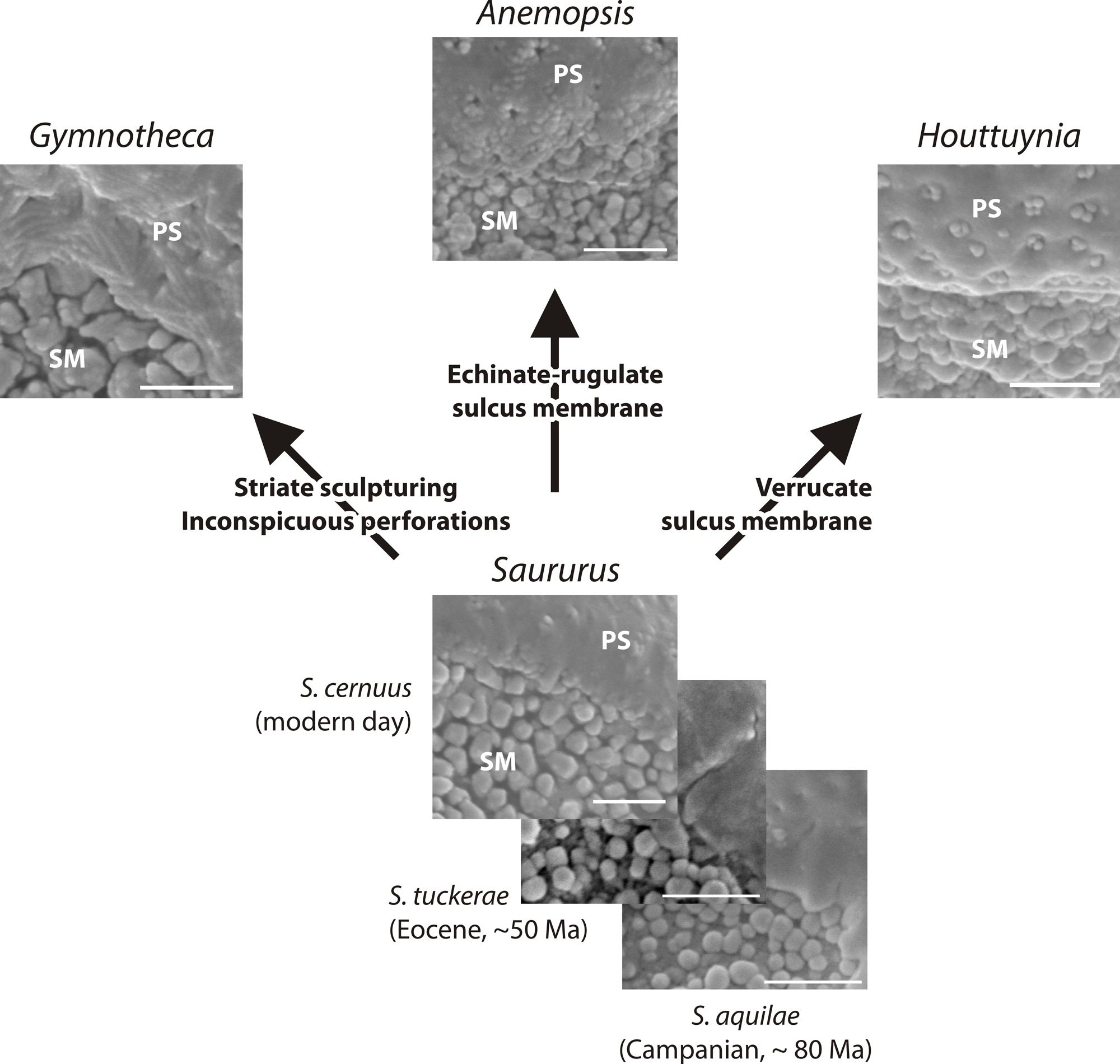 |
Grímsson, F., P. Kapli, C.-C. Hofmann, R. Zetter &
G. W. Grimm (2017). Eocene Loranthaceae pollen pushes back
divergence ages for major splits in the family.
PeerJ, 5, e3373 [E-Publ].
»Freier Zugang«
— Daten/Analysedateien im online supporting archive der supplemental information auf der Seite
des Journals (zitierbare DOI: 10.7717/peerj.3373/supp-8).
| 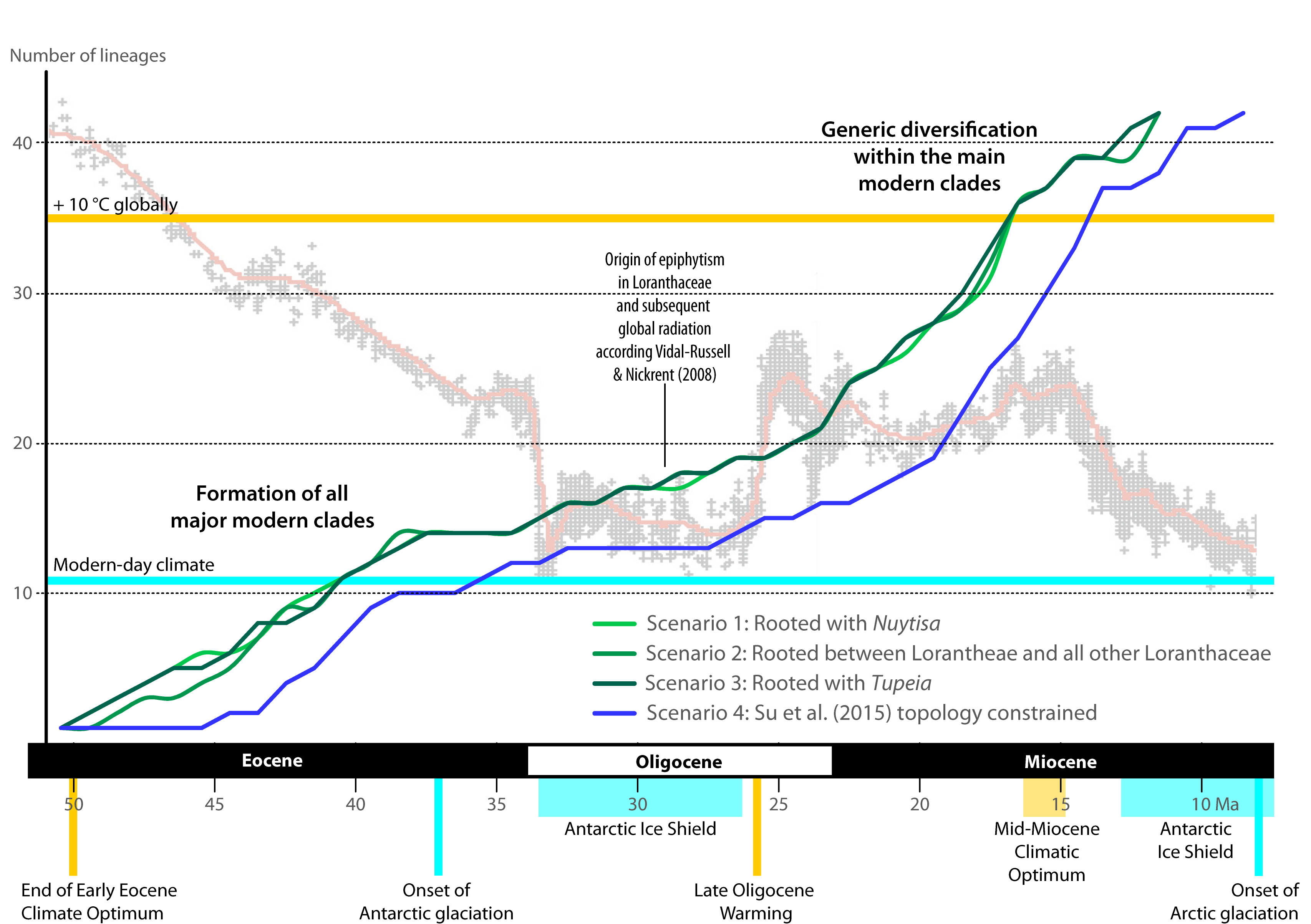 |
Schliep, K., A. J. Potts, D. A. Morrison &
G. W. Grimm (2017). Intertwining phylogenetic trees and
networks.
Methods in Ecology & Evolution, 8, S. 1212-1220.
»Freier Zugang«
— Diese Vignette gibt eine Übersicht über
die neu-implementierten Funktionen und Beispielcodes für den Vergleich von Netzwerken und Bäumen
mittels der
phangorn Bibliothek für R. Falls nützlich, bitte
die beiden Publikationen zitieren: Schliep (2011) und Schliep et al. (2017).
— phangorn Bibliothek @
github.
— Archiv mit Analysedateien der Bärendaten, die in der
Studie als Beispiel für die neuen Funktionen herangenommen wurden.
—
Davids Blogpost (als kleine Eigenwerbung).
— Kurzversion (2016) als Preprint bei PeerJ Preprints.
| 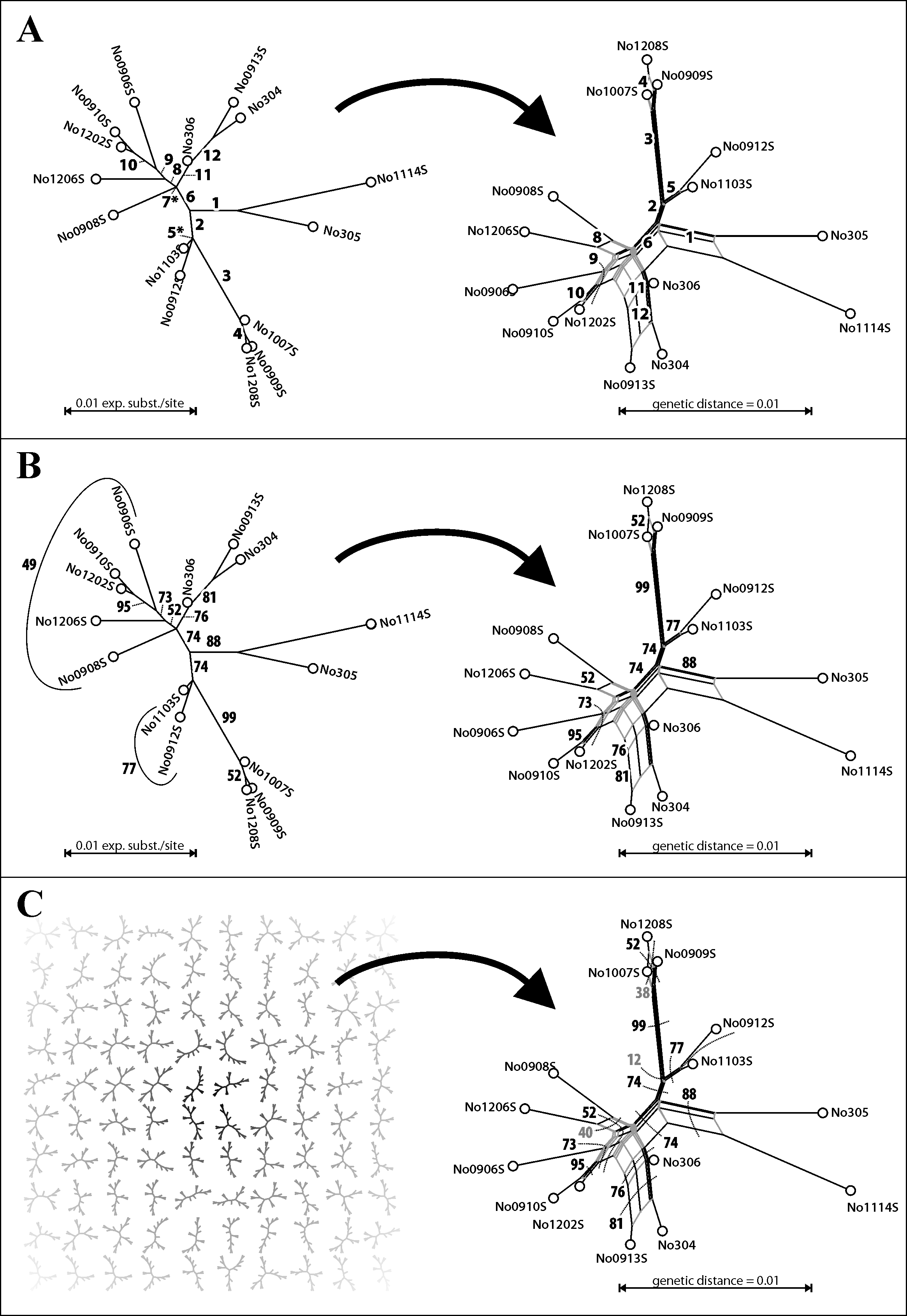 |
|
Vitelli, M., F. Vessella, S. Cardoni, P. Pollegioni, T. Denk,
G. W. Grimm & M. C. Simeone (2017). Phylogeographic
structuring of plastome diversity in Mediterranean oaks (Quercus Group Ilex, Fagaceae).
Tree Genetics & Genomes, 13: 3 [E-Publ].
| 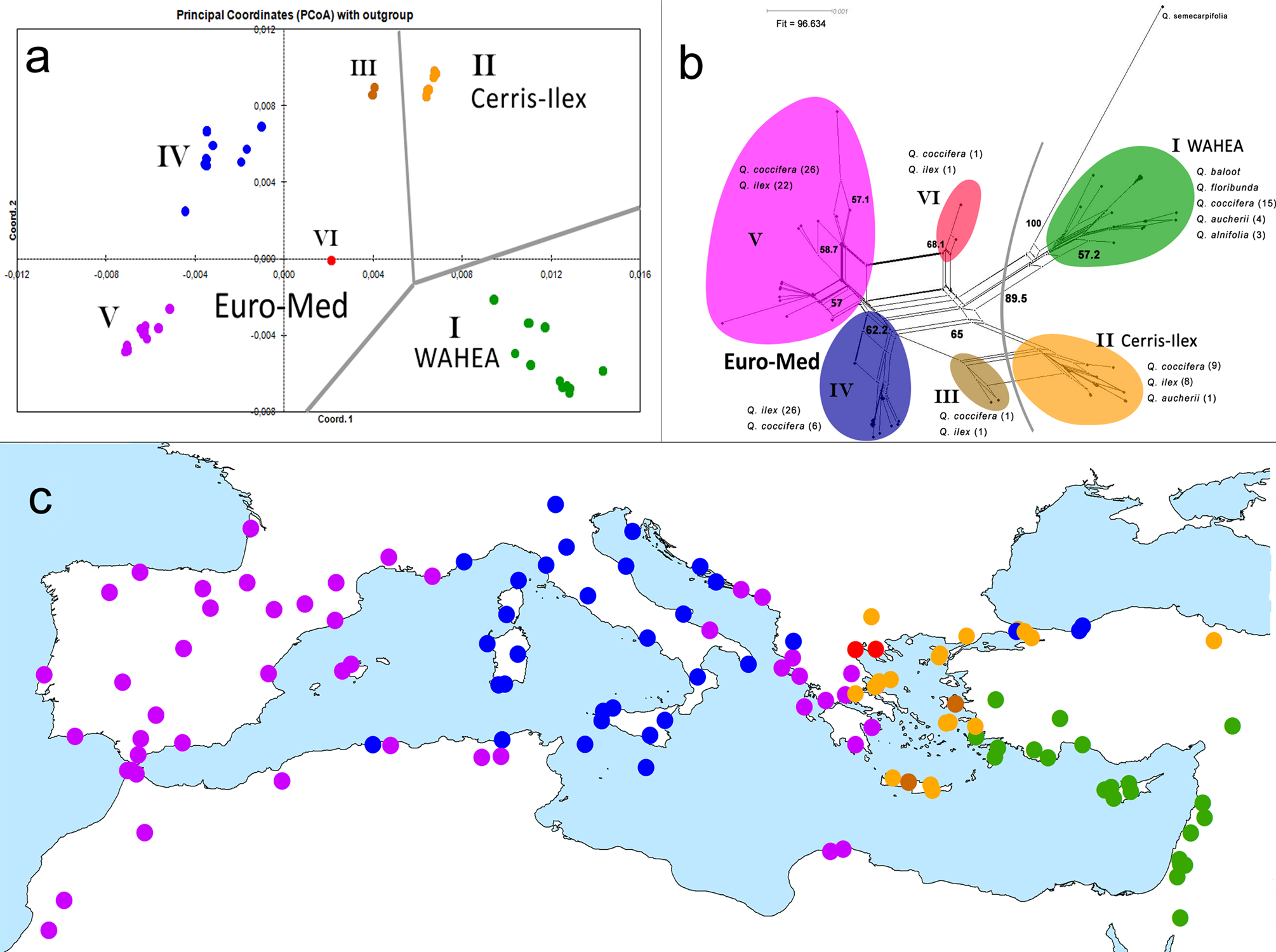 |
Grimm, G. W. &
A. J. Potts (2016).
Fallacies and fantasies: the theoretical underpinnings of the Coexistence Approach for palaeoclimate
reconstruction.
Climates of the Past, 12, S. 611-622.
»Freier Zugang«, finanziert vom FWF
— Offenes Review:
Climates of the Past Discussion, 11, S. 5727-5754.
Bemerkung: Dies ist das Folgepaper zu dem folgenden, eingereicht neun Monate später. Kein
Vertreter des Coexistence Approach fühlte sich imstande, die Möglichkeit des 2-monatigen offenen Reviews für
Kritik zu nutzen, obwohl ich per mail alle Autoren des Utescher et al. (2014) Papers darauf hingewiesen habe.
| 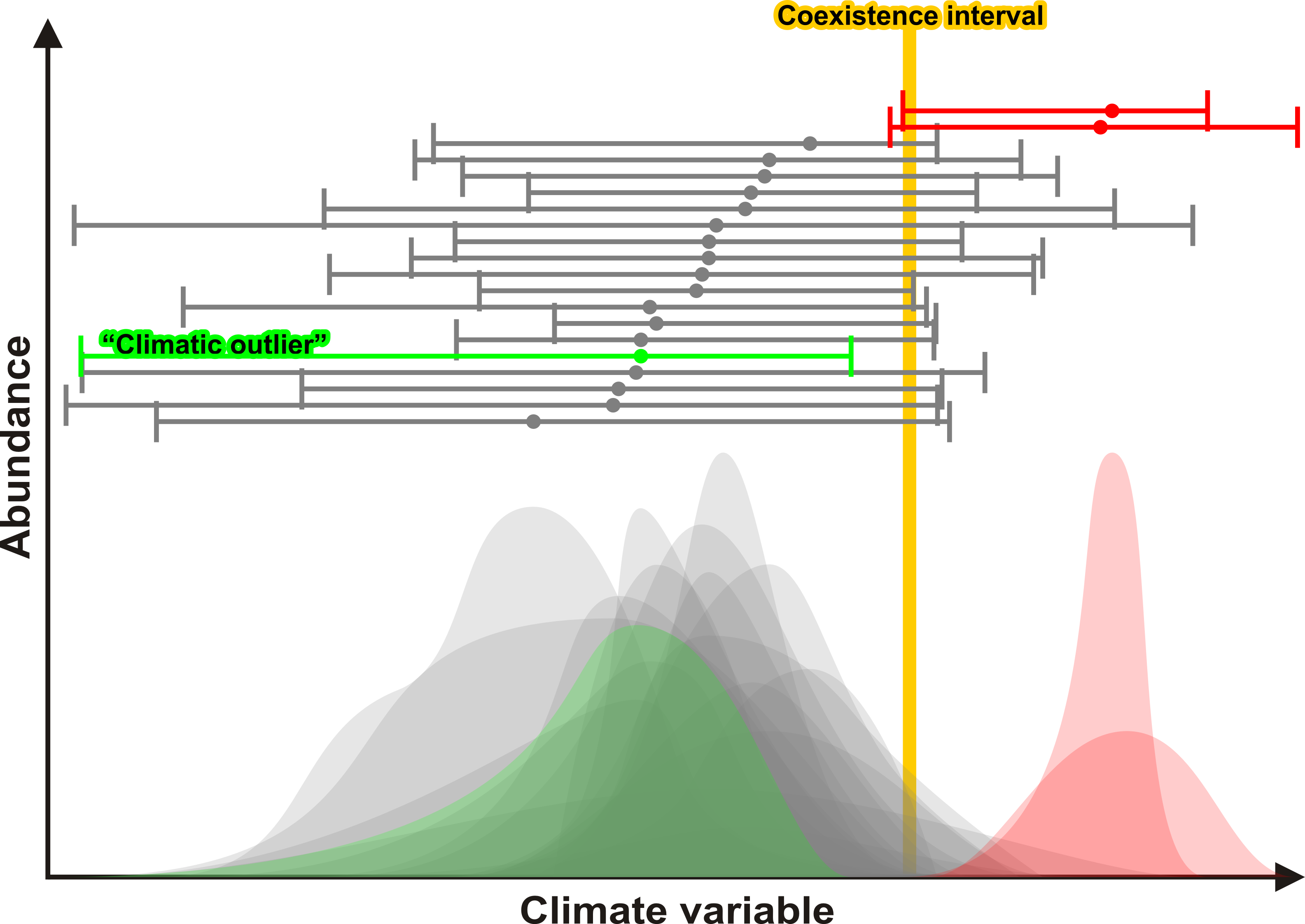 |
Grimm, G. W., J. M. Bouchal, T. Denk &
A. J. Potts (2016).
Fables and foibles: a critical analysis of the Palaeoflora database and the Coexistence approach for
palaeoclimate reconstruction.
Review of Palaeobotany & Palynology, 233, S. 216-235.
— OSA (Online Supplementary Archive) inkludierend Hintergrunddaten
(Files S1–S6) und Supplement-Tabellen (Tables S1–S4).
— Preprint@bioRxiv »Freier Zugang«
Hintergrundinfo: Diese Arbeit war 450 Tage unter Begutachtung (minor revision, Entscheidung v. 1.6.2016), da es
den Editoren auf Grund der "Komplexität" des Stoffes lange unmöglich war, ein 2. Review zu bekommen. Die Komplexität
besteht darin, daß gezeigt wird inwieweit der Anspruch des Coexistence Approach (CA) von seiner Wirklichkeit entfernt
ist an Hand der bisher einzigen CA/Palaeoflora Studie (Quan et al., Palaegeogr. Palaeoclim. Palaeoecol. [P^3], 2012)
die sämtliche Daten offengelegt hat. Angesichts der massiven Probleme und Schwächen, die sich hier offenbaren,
ist es nicht verwunderlich, daß sich kaum eine CA/Palaeoflora Studie an die Dokumentationsrichtlinien hält, die
von Utescher et al. (2014) in P^3 gefordert wurden. Wenn die Quan et al. Studie repräsentativ ist, beruhen
CA/Palaeflora Ergebnisse auf der Kombination aus schlechten Klimatoleranzdaten, dubiosen Fossil-NLR Zuordnungen
und subjektiver Daten-Filterung im Hintergrund. Die meisten Klimaintervalle, insbesondere die gut aufgelösten,
werden von Fossil-NLR-Paaren definiert, bei denen mindestens eine, oder auch alle vier, Grundannahmen des
Coexistence Approach verletzt werden.
| 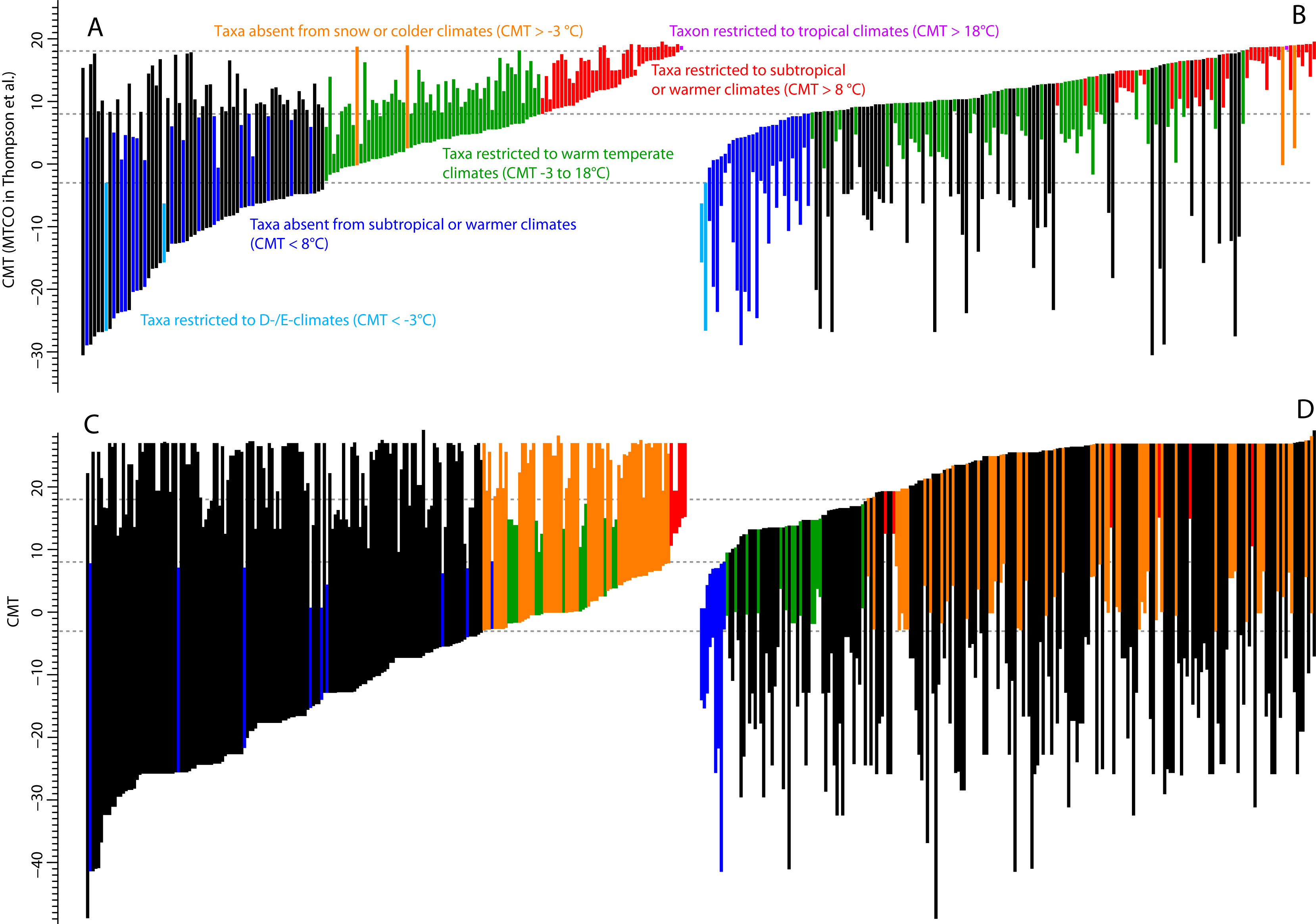 |
Grímsson F., G. W. Grimm, B. Meller, J. M. Bouchal &
R. Zetter (2016). Combined LM and SEM study of the middle
Miocene (Sarmatian) palynoflora from the Lavanttal Basin, Austria: Part IV. Magnoliophyta 2 – Fagales
to Rosales.
Grana, 55, S. 101-163.
»Freier Zugang«, finanziert vom FWF
— Electronic Supplementary File S1 mit Köppensignaturen
potentieller moderner Analoge der beschriebenen fossilen Taxa.
| 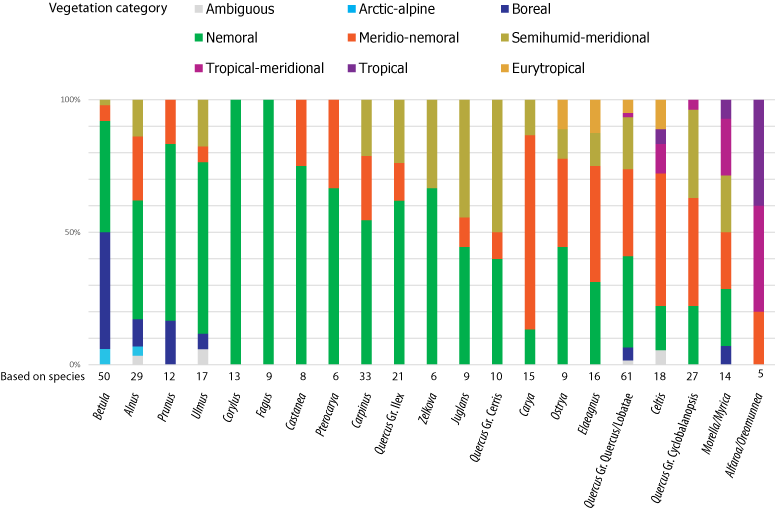 |
Grímsson, F., G. W. Grimm, R. Zetter &
T. Denk (2016). Cretaceous and Paleogene Fagaceae from North
America and Greenland: evidence for a Late Cretaceous split between Fagus and the remaining Fagaceae.
Acta Palaeobotanica, 56, S. 247-305.
»Freier Zugang«
— Archiv mit Supplement-Dateien (Files S1–S4).
| 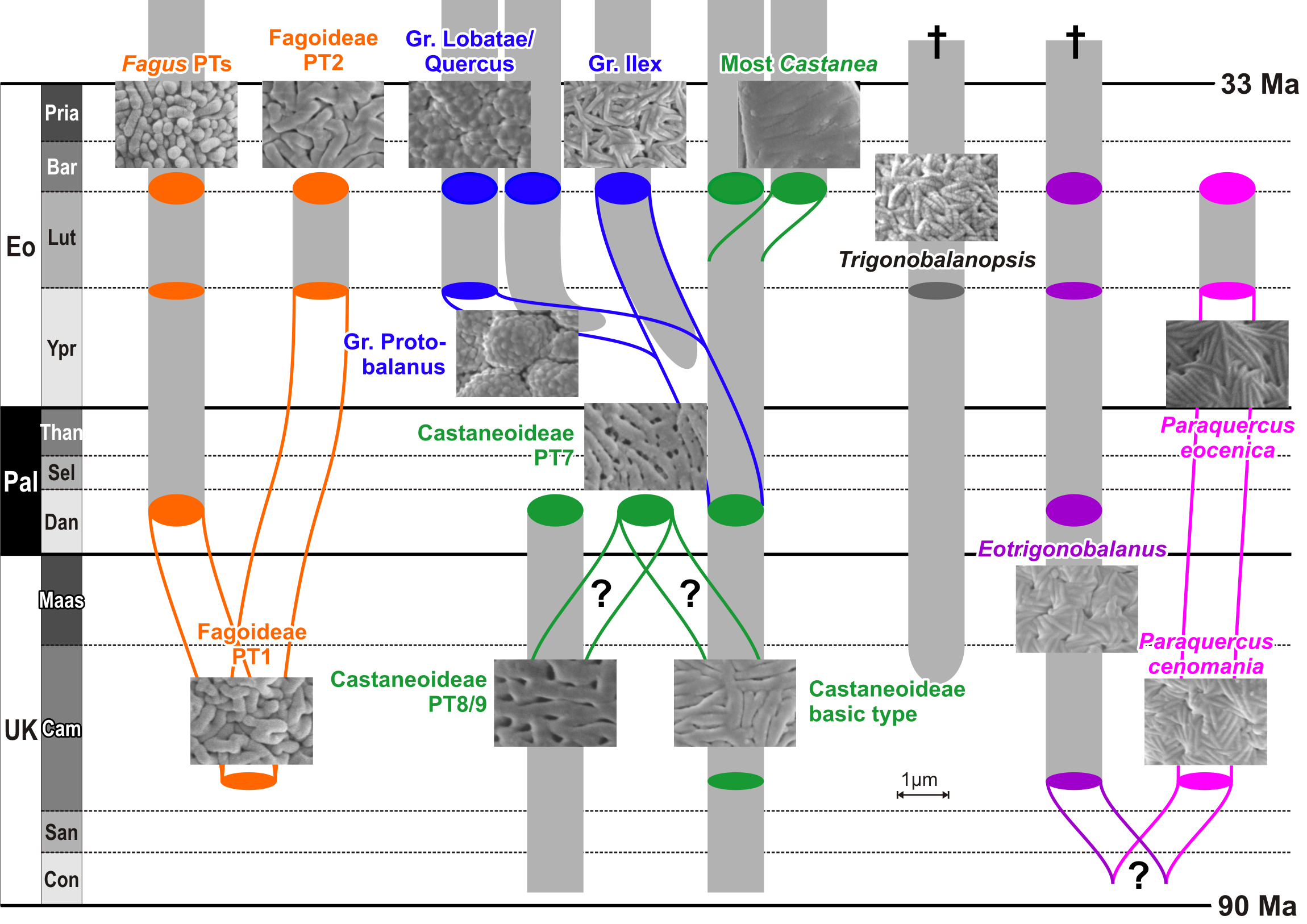 |
Grímsson, F., G. Krarup Pedersen, G. W. Grimm &
R. Zetter (2016). A revised stratigraphy for the Paleocene
Agatdalen flora (Nuussuaq Peninsula, western Greenland): correlating fossiliferous outcrops, macrofossils
and palynological samples from phosphoritic nodules.
Acta Palaeobotanica, 56, S. 307-327.
»Freier Zugang«
| 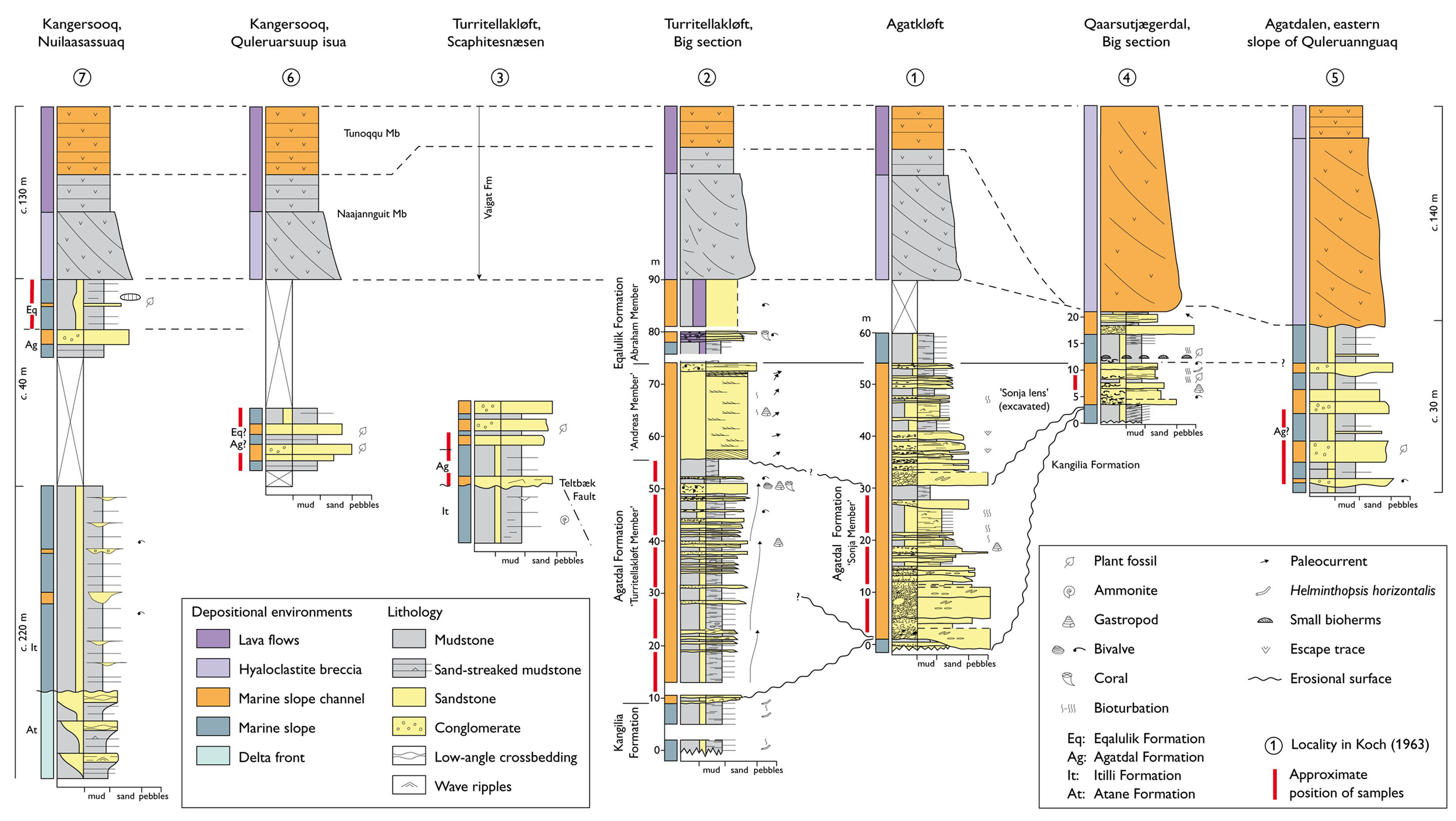 |
Khanum, R., S. Surveswaran, U. Meve &
S. Liede-Schumann (2016). Cynanchum
(Apocynaceae: Asclepiadoideae): A pantropical Asclepiadoid genus revisited.
Taxon, 65, S. 467-486.
Zurückgetreten als Koautor in Protest gegen den editorialen Entscheidungsprozeß.
Siehe hier für die Vorgeschichte
— OSA (Online Supplementary Archive) inkludierend Supplementdateien,
Datenmatrizen und Analysedateien (Maximum Likelihood, Bayesian Inference).
Dieses Archiv begleitete die originale und ersten beiden Revisionen der Arbeit, siehe final-publiziertes
Paper für Referenz zum finalen OSA.
| 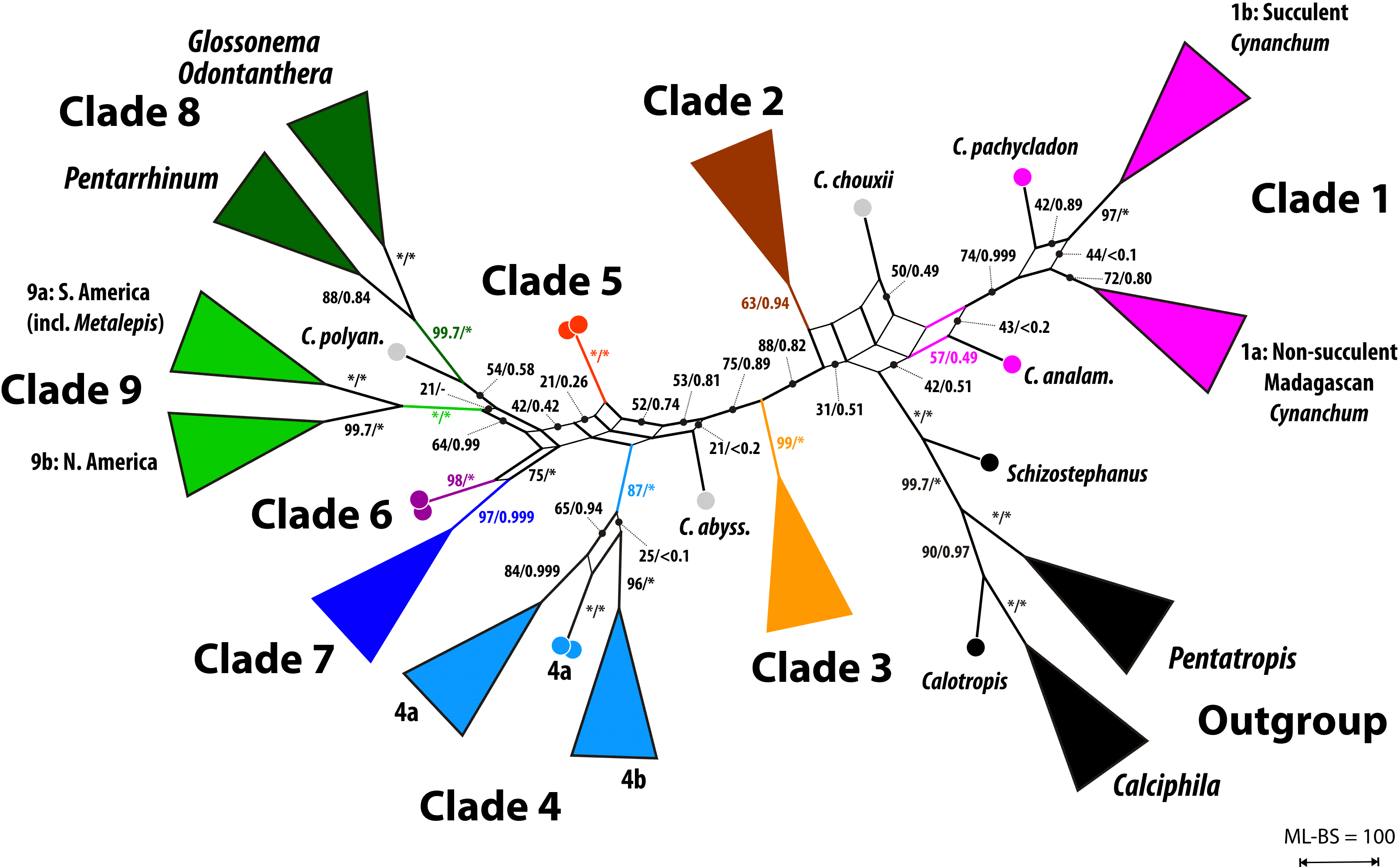 |
Renner, S. S., G. W. Grimm, P. Kapli &
T. Denk (2016). Species relationships and divergence times
in beeches: new insights from the inclusion of 53 young and old fossils in a birth-death clock model.
Philosophical Transactions of the Royal Society B, 371, Dok.-Nr. 20150135. DOI: 10.1098/rstb.2015.0135
— Related post @ Res.I.P.
The challenging and puzzling ordinary beech – a (hi)story
| 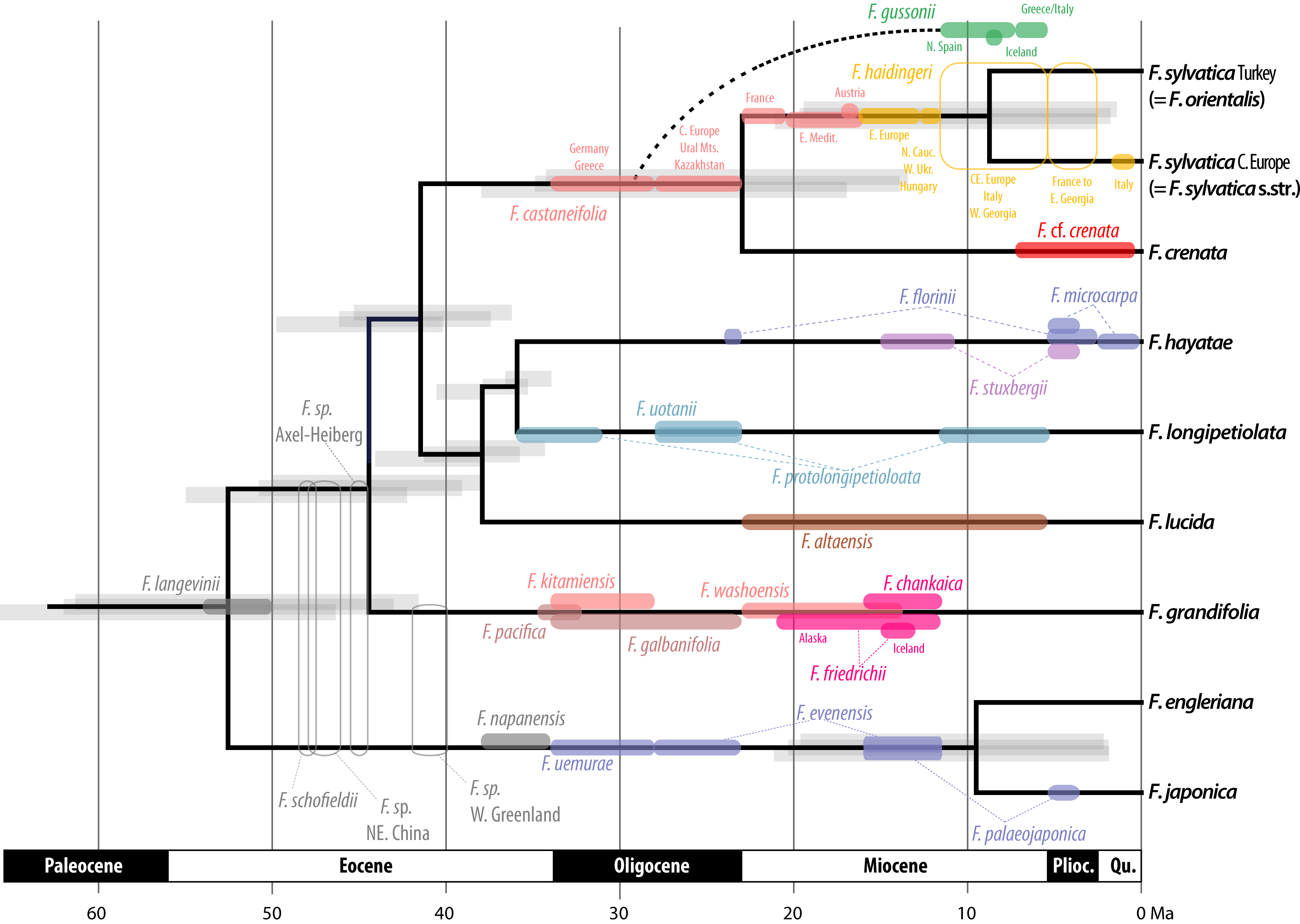 |
|
Schulze, E. D., G. Aas, G. W. Grimm, M. M. Gossner, H. Walentowski,
C. Ammer, I. Kühn, O. Bouriaud &
K. von Gadow (2016). A review on plant diversity and forest
management of European beech forests European Journal of Forest Research,
135, S. 51-67.
|  |
Simeone, M., G. W. Grimm, A. Papini, F. Vessella, S. Cardoni, E. Tordoni
R. Piredda, A. Franc & T. Denk (2016).
Plastome data reveal multiple geographic origins of Quercus Group Ilex.
PeerJ, 4: e1897.
»Freier Zugang«
— OSA (Online Supplementary Archive) inkludierend Hintergrunddaten
(Files S1–S3, Datenmatrix, Distanztabellen) und Analysedateien (Maximum Likelihood: GARLI, RAxML;
Median networks: NETWORK).
| 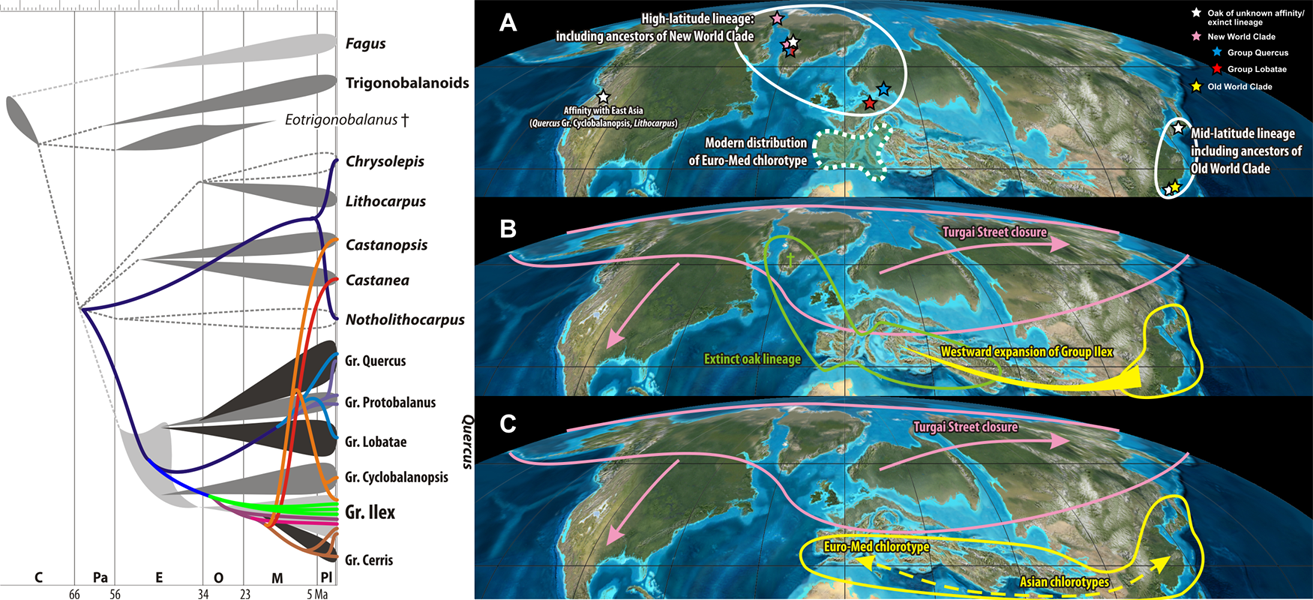 |
Bomfleur, B., G. W. Grimm & S. McLoughlin (2015).
Osmunda pulchella sp. nov. from the Jurassic of Sweden—reconciling molecular and fossil
evidence in the phylogeny of modern royal ferns (Osmundaceae).
BMC Evolutionary Biology, 15: Nr. 126 [e-Publikation].
»Freier Zugang«
— ESA (Electronic Supplementary Archive) inkludierend Supplementdateien
(File S1, S2; Figs S1–S3) und mehrere Datenverzeichnisse mit den genetischen und morphologische Datenmatrizen,
und alle Dateien der gezeigten phylogenetischen Analysen.
— Preprint-Version [bioRxiv.org]
| 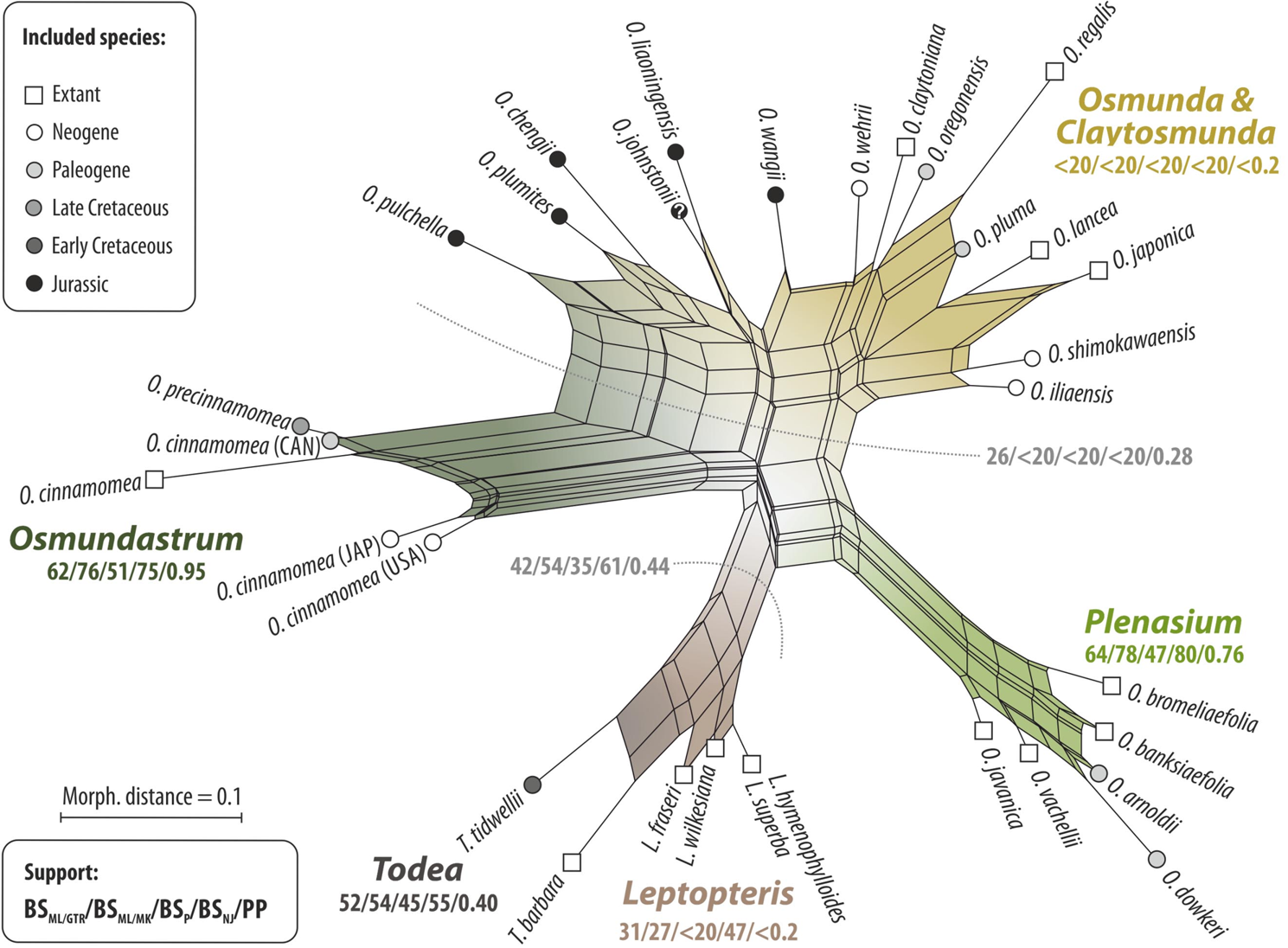 |
Chen, L.-Y., G. W. Grimm, Q.-F. Wang &
S. S. Renner (2015).
A phylogeny and biogeographic analysis for the cape-pondweed family Aponogetonaceae (Alismatales).
Molecular Phylogenetics & Evolution, 82, S. 111-117.
— ESA (Electronic Supplementary Archive) inkludierend
Supplementfiles S1-S3, Datenmatrices 1-3, und ML Analysefolder.
| 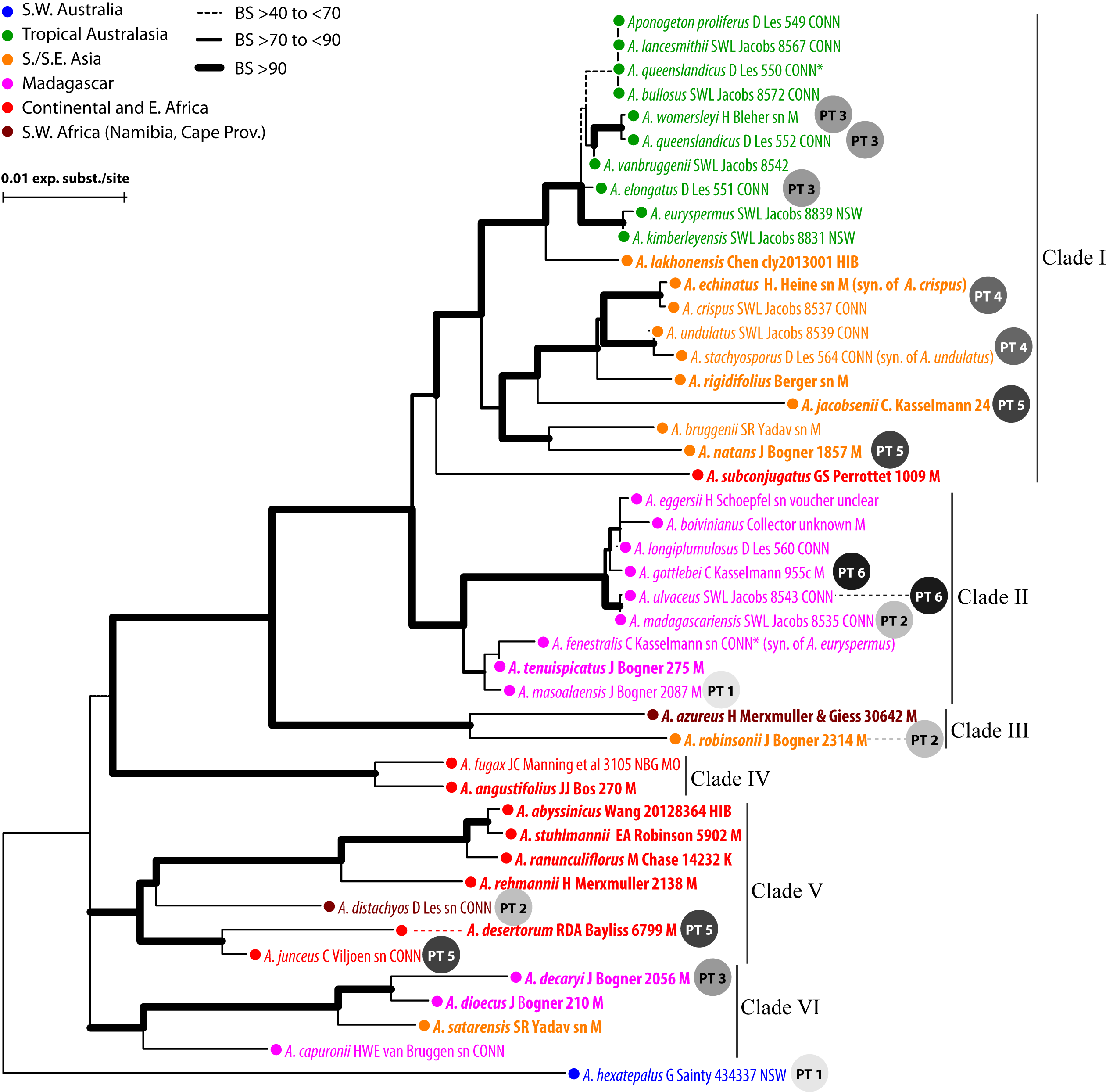 |
Friis, E. M., G. W. Grimm, M. M. Mendes &
K. R. Pedersen (2015).
Canrightiopsis, a new Early Cretaceous fossil with Clavatipollenites type pollen
bridge the gap between extinct Canrightia and extant Chloranthaceae.
Grana, 54 S. 184-212.
»Freier Zugang«
— Archiv mit Supplement-Dateien S1–S3 (genetische und morphologische
Datenmatrizen; Merkmalsplot) und Analyseresultaten.
| 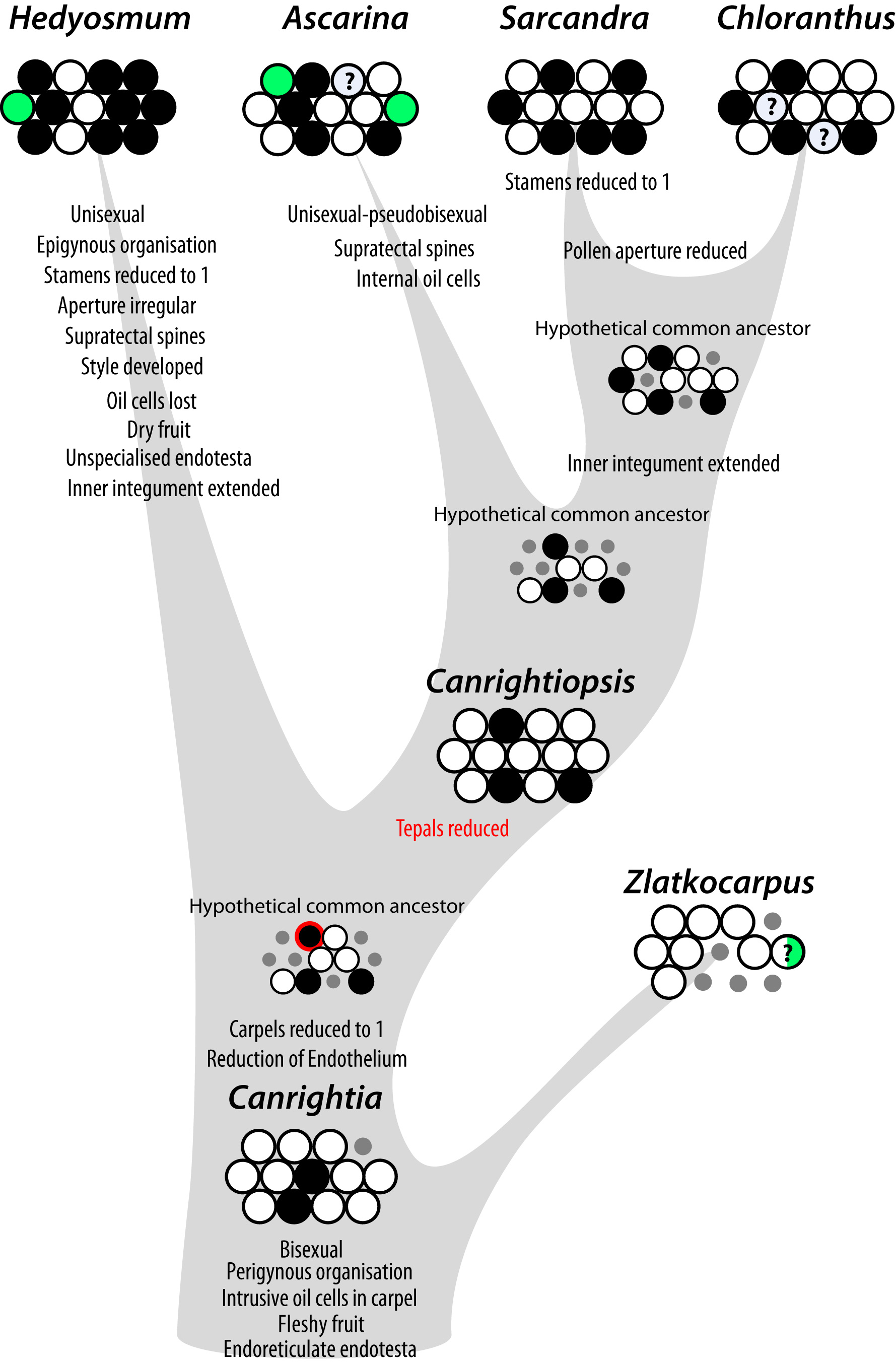 |
Grimm, G. W., P. Kapli, B. Bomfleur, S. McLoughlin &
S. S. Renner (2015). Using more than the oldest fossils:
Dating Osmundaceae by three Bayesian clock approaches.
Systematic Biology, 64, S. 396-405.
»Freier Zugang«
[PDF]
[Daten, Supplement]
[Preprint@bioRxiv]
| 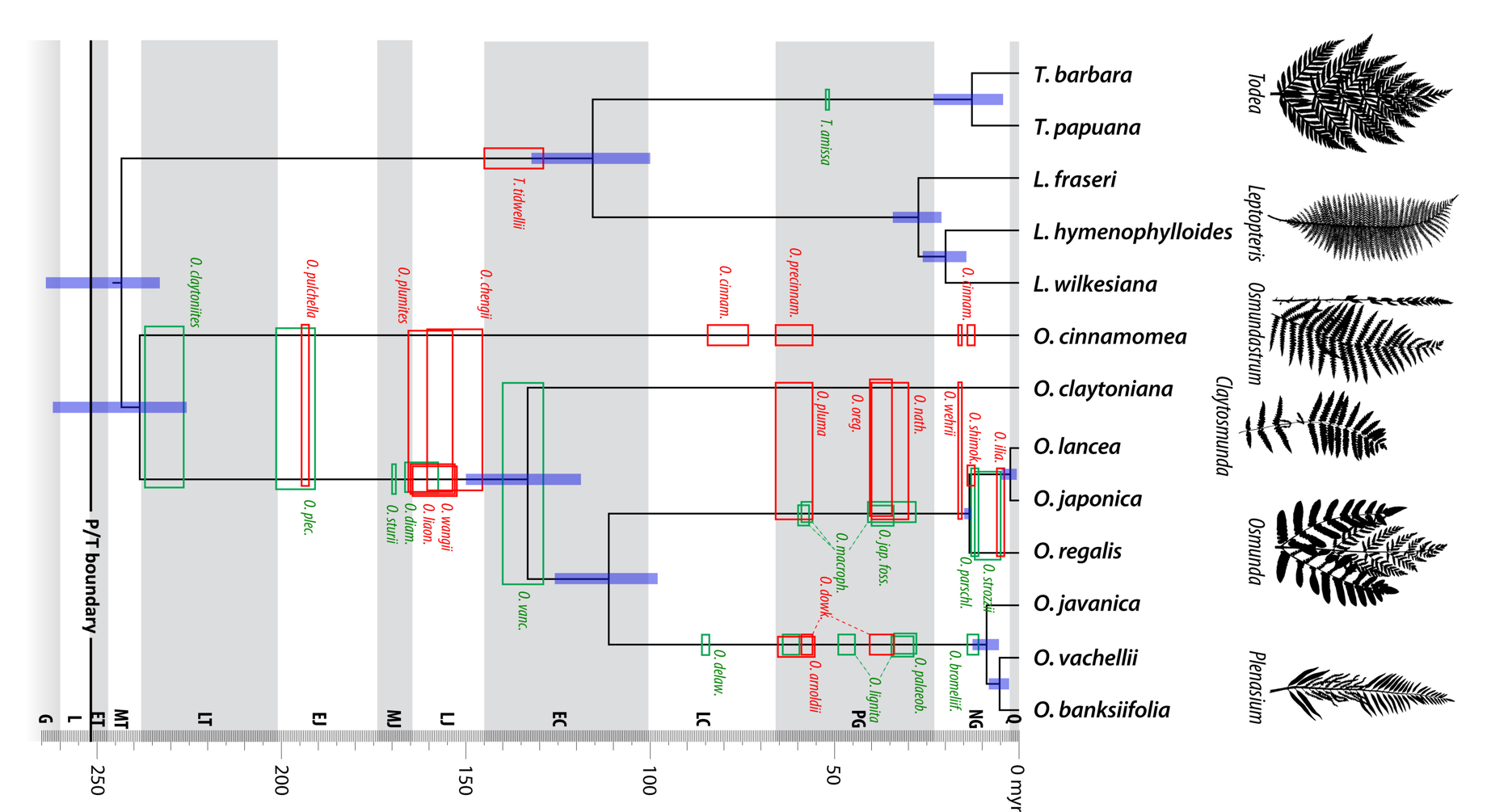 |
Grímsson, F., R. Zetter, G. W. Grimm, G. Krarup Pedersen, A. K.
Pedersen & T. Denk (2015).
Fagaceae pollen from the early Cenozoic of West Greenland: revisiting Engler's and Chaney's
Arcto-Tertiary hypotheses.
Plant Systematics & Evolution, 301, S. 809–832.
»Freier Zugang«
|  |
|
Denk, T., H. T. Güner &
G. W. Grimm (2014). From mesic to arid: Leaf epidermal
features suggest preadaptation in Miocene dragon trees (Dracaena).
Review of Palaeobotany & Palynology, 200, S. 211-228.
| 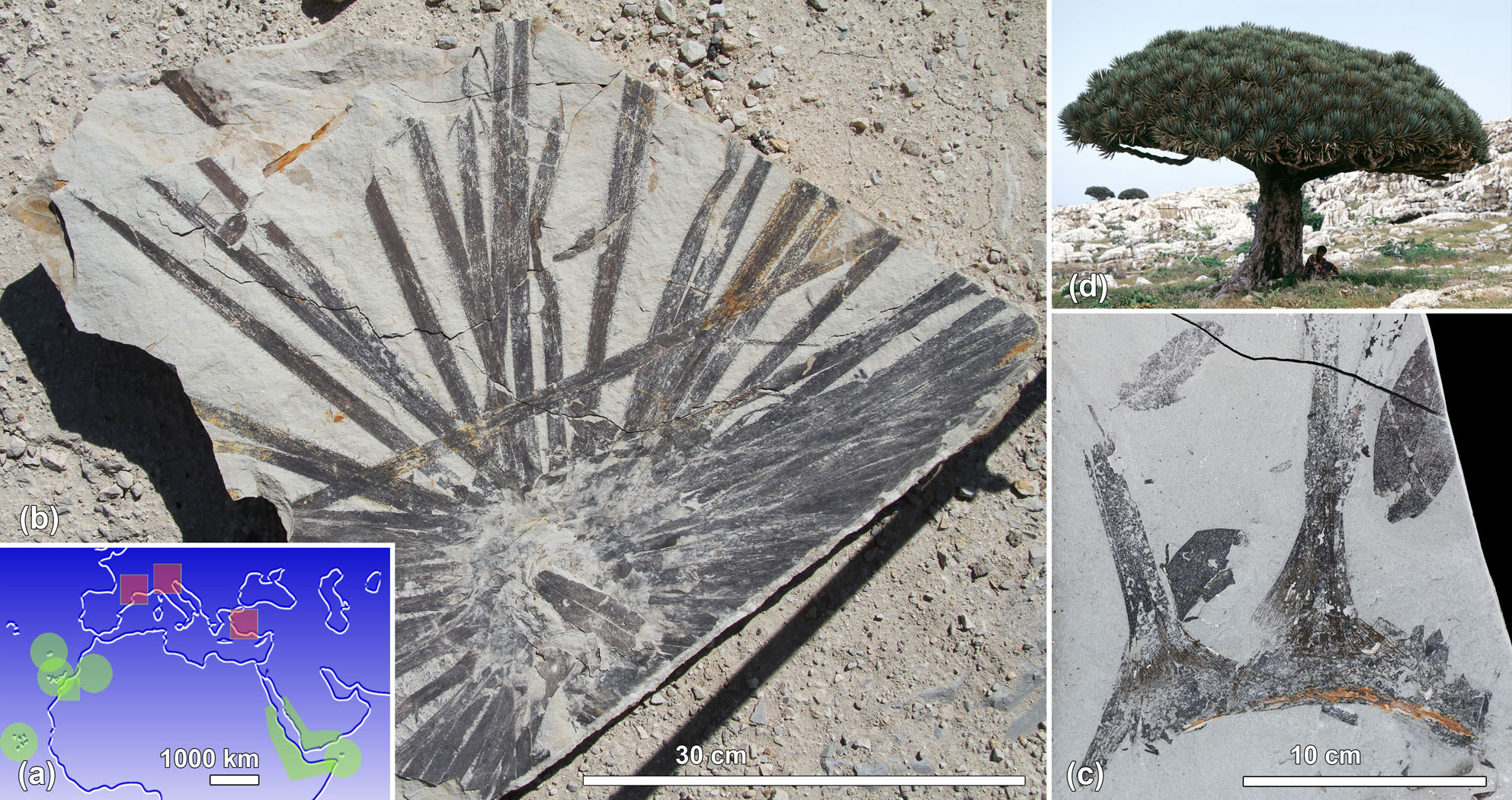 |
Grimm, G. W. &
T. Denk (2014).
The Colchic region as refuge for relict tree lineages: cryptic speciation in field maples.
Turkish Journal of Botany, 38, S. 1050-1066.
»Freier Zugang«
— Archiv mit Supplement-Dateien, Datenmatrizen (ITS) und
Analyseresultaten.
| 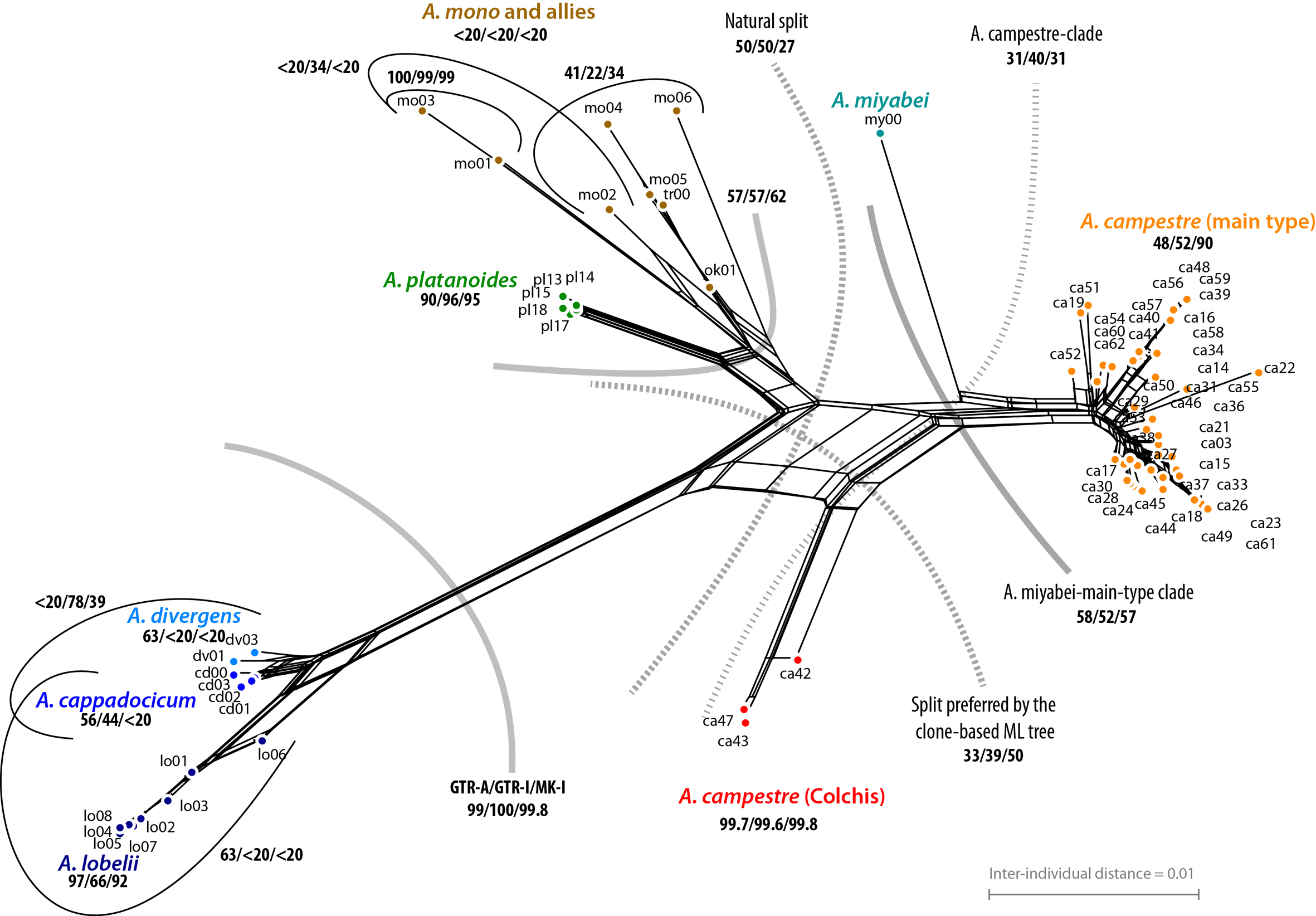 |
Grímsson, F., R. Zetter, H. Halbritter, &
G. W. Grimm (2014).
Aponogeton pollen from the Cretaceous and Paleogene of North America and West Greenland:
implications for the origin and palaeobiogeography of the genus.
Review of Palaeobotany & Palynology, 200, S. 161-187.
»Freier Zugang«
— Archiv mit SI (Supplementary Information) Dateien,
Datenmatrizen (genetisch & morphologisch) und Analyseresultaten.
| 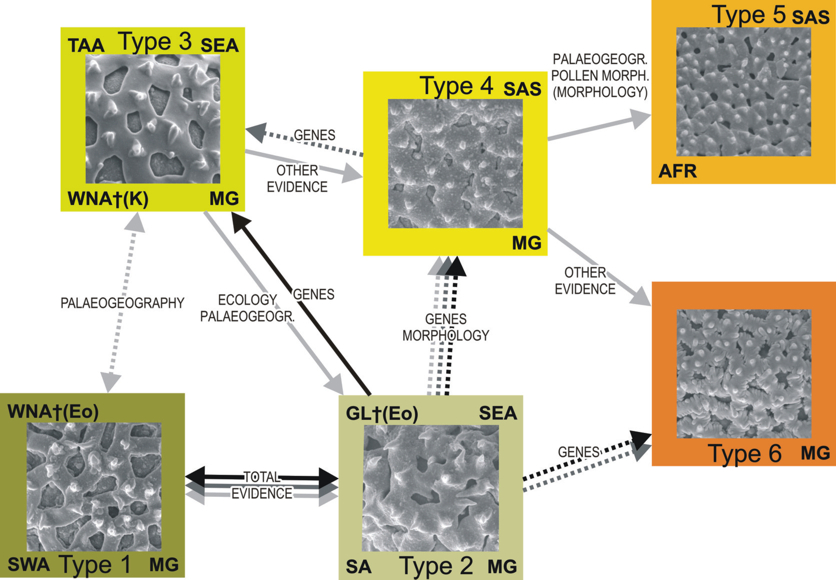 |
|
Hubert, F., G. W. Grimm, E. Jousselin, V. Berry, A. Franc
& A. Kremer (2014). Multiple nuclear genes stabilize the phylogenetic backbone of the
genus Quercus.
Systematics & Biodiversity, 12, S. 405-423.
| 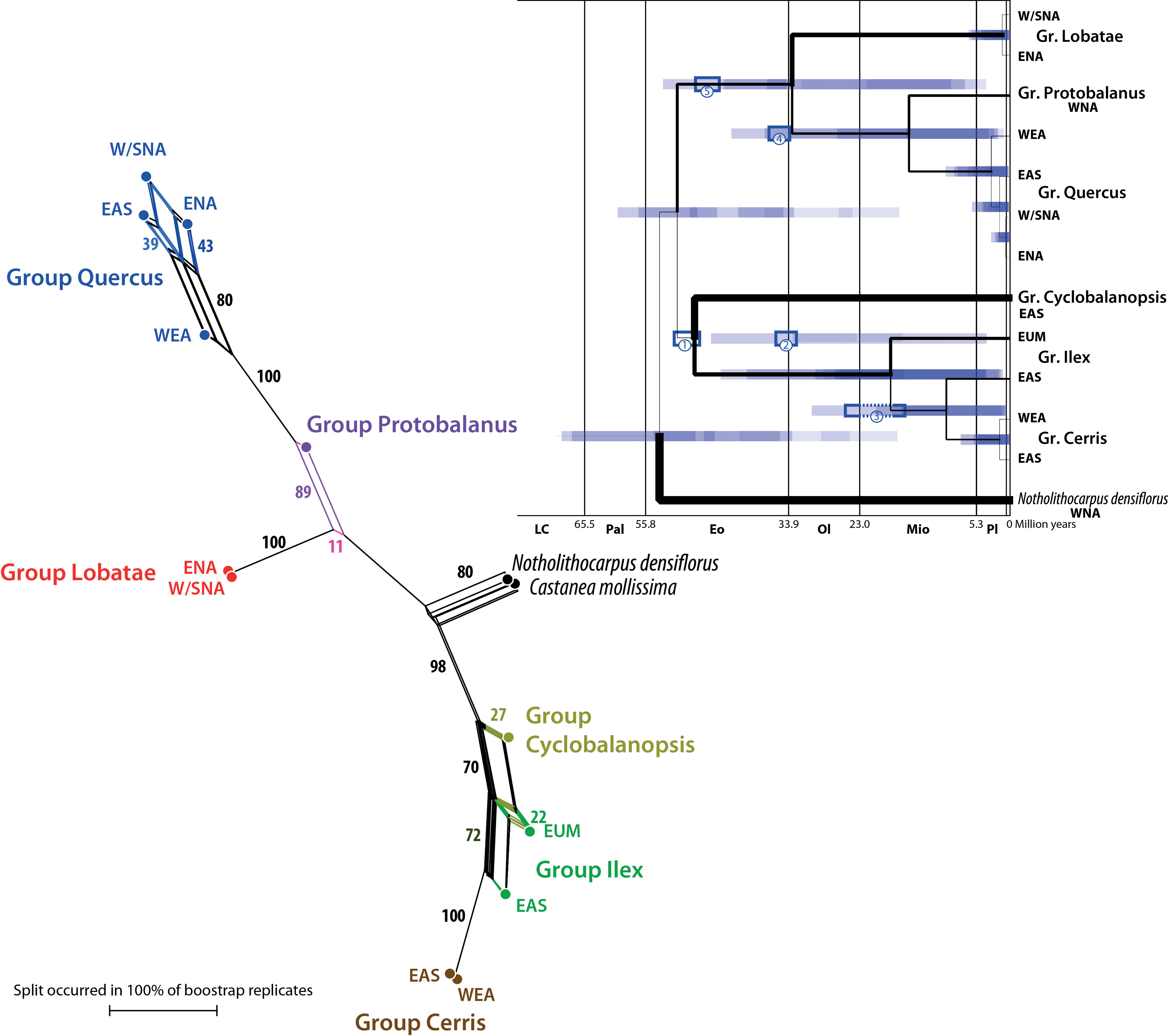 |
Mendes, M. M., G. W. Grimm, J. Pais & E. M. Friis (2014).
Fossil Kajanthus lusitanicus gen. et sp. nov. from Portugal: Floral evidence for Early Cretaceous
Lardizabalaceae (Ranunculales, basal eudicot).
Grana, 53, S. 283-301.
»Freier Zugang«
— Archiv mit SI (Supplementary Information) Dateien,
Datenmatrizen (genetisch & morphologisch) und Analyseresultaten.
| 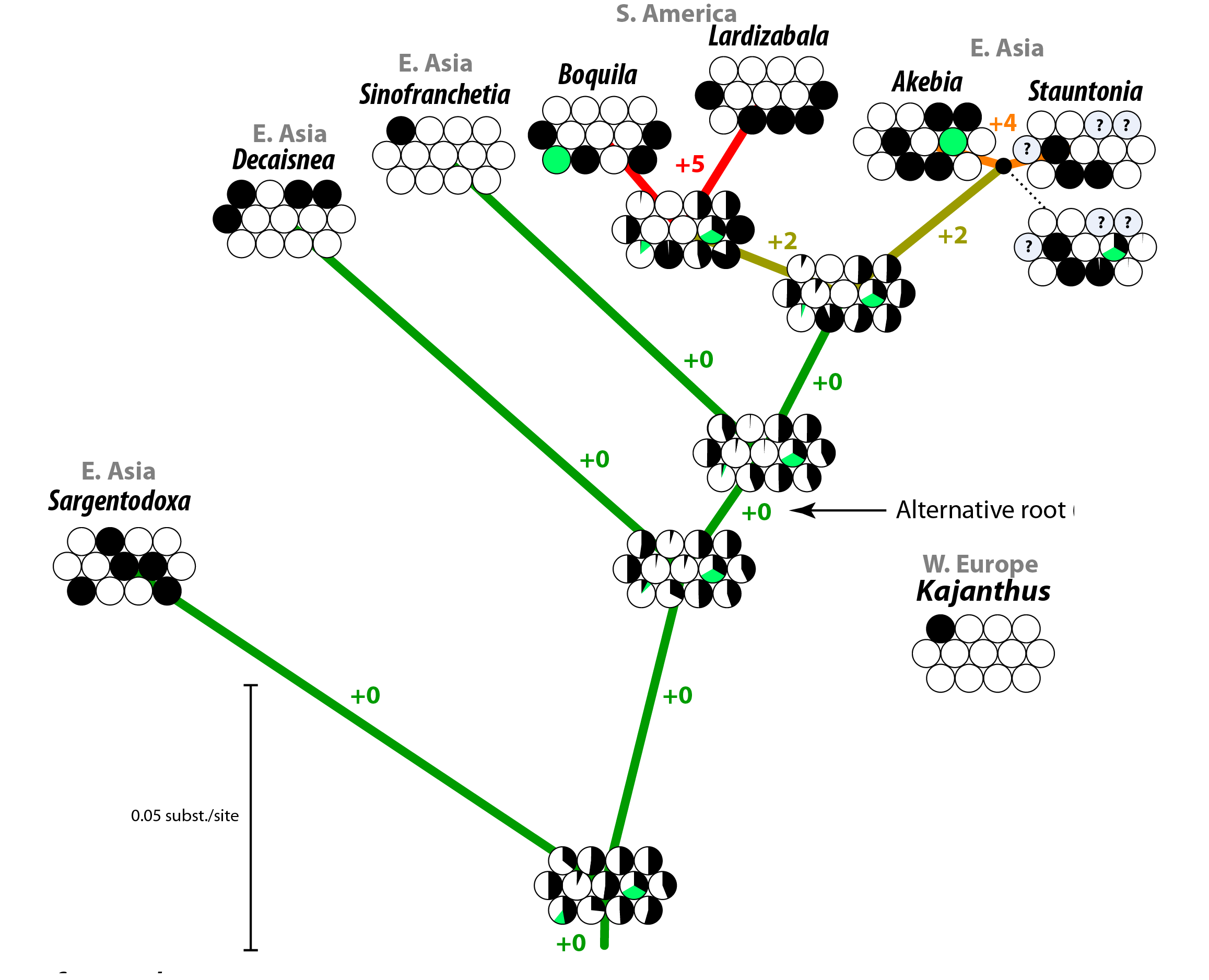 |
|
Potts, A. J., T. A. Hedderson & G. W. Grimm
(2014). Constructing phylogenies in the presence of intra-individual site polymorphisms (2ISPs) with
a focus on the nuclear ribosomal cistron.
Systematic Biology, 63, S. 1-16.
[Abstract]
[PDF]
[Daten, Supplement]
| 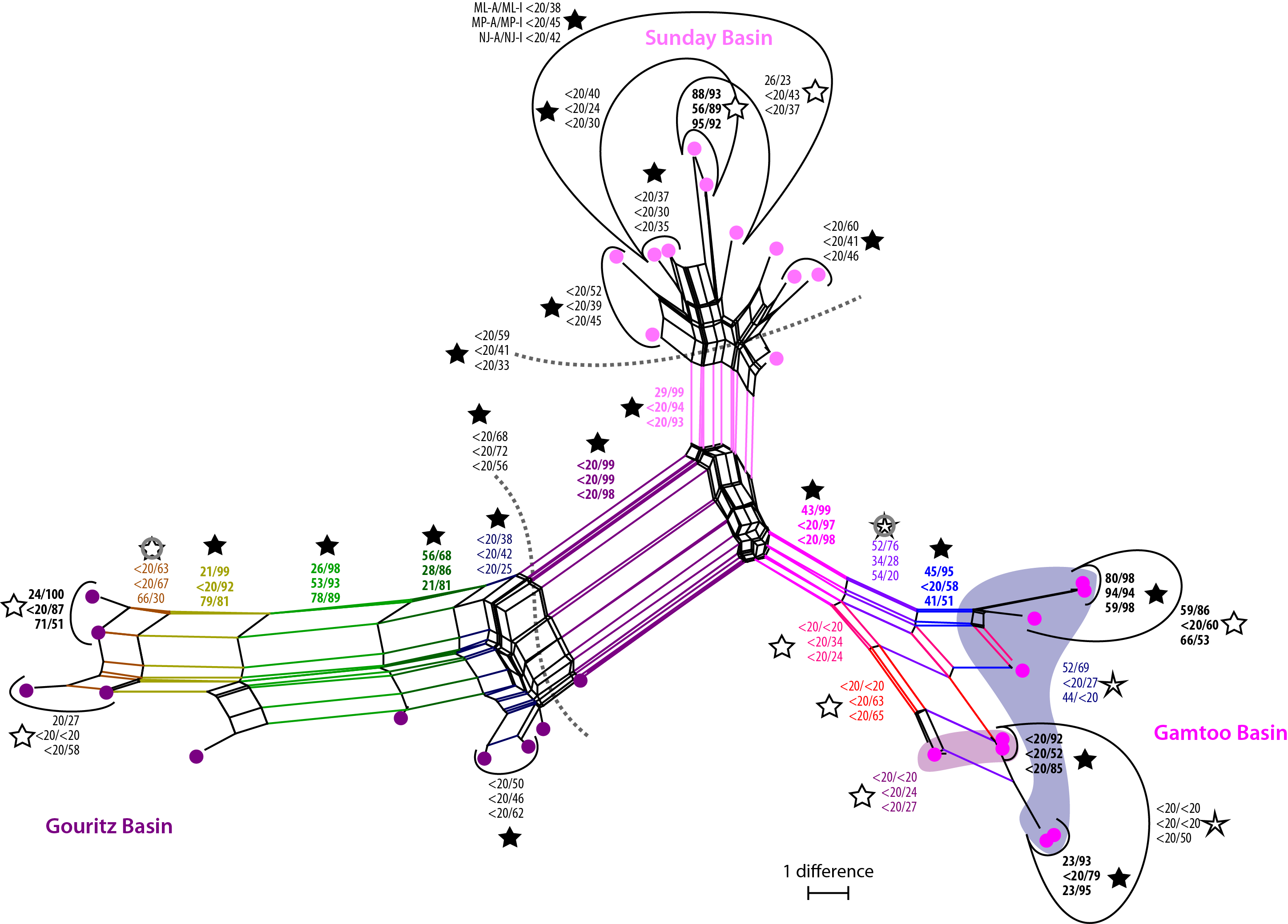 |
Surveswaran, S., M. Sun, G. W. Grimm & S. Liede-Schumann (2014). On the systematic position of
some Asian enigmatic genera of Asclepiadoideae (Apocynaceae).
Botanical Journal of the Linnean Society, 174, S. 601-619.
— ESA (Electronic Supplementary Archive) mit Datenmatrizen
und sämtlichen Analyseresultaten (RAxML, GARLI, MrBayes).
|  |
Wanntorp, L.,
M. Grudinski, P. I. Forster, A. N. Muellner-Riehl & G. W. Grimm (2014). Reconstructing complex
evolutionary and biogeographic patterns in the wax plants Hoya, Apocynaceae).
Taxon, 63, S. 89-102.
— Archiv inkludierend dreier Supplementdateien und
Analyseresultaten (aber ohne Datenmatrizen).
—
Post @ Genealogical World of Networks über Median Networks auf Gattungsebene (inkl.
Abbildungen die während des/dank der
peer reviews/Editoren verloren gegangen sind)
|  |
Weiner, A. K. M., M. F. G. Weinkauf, A. Kurasawa, K. F. Darling, M. Kučera & G. W. Grimm
(2014). Phylogeography of the tropical planktonic foraminifera lineage Globigerinella reveals
isolation inconsistent with passive dispersal by ocean currents.
PLoS ONE, 9, e92148.
»Freier Zugang«
| 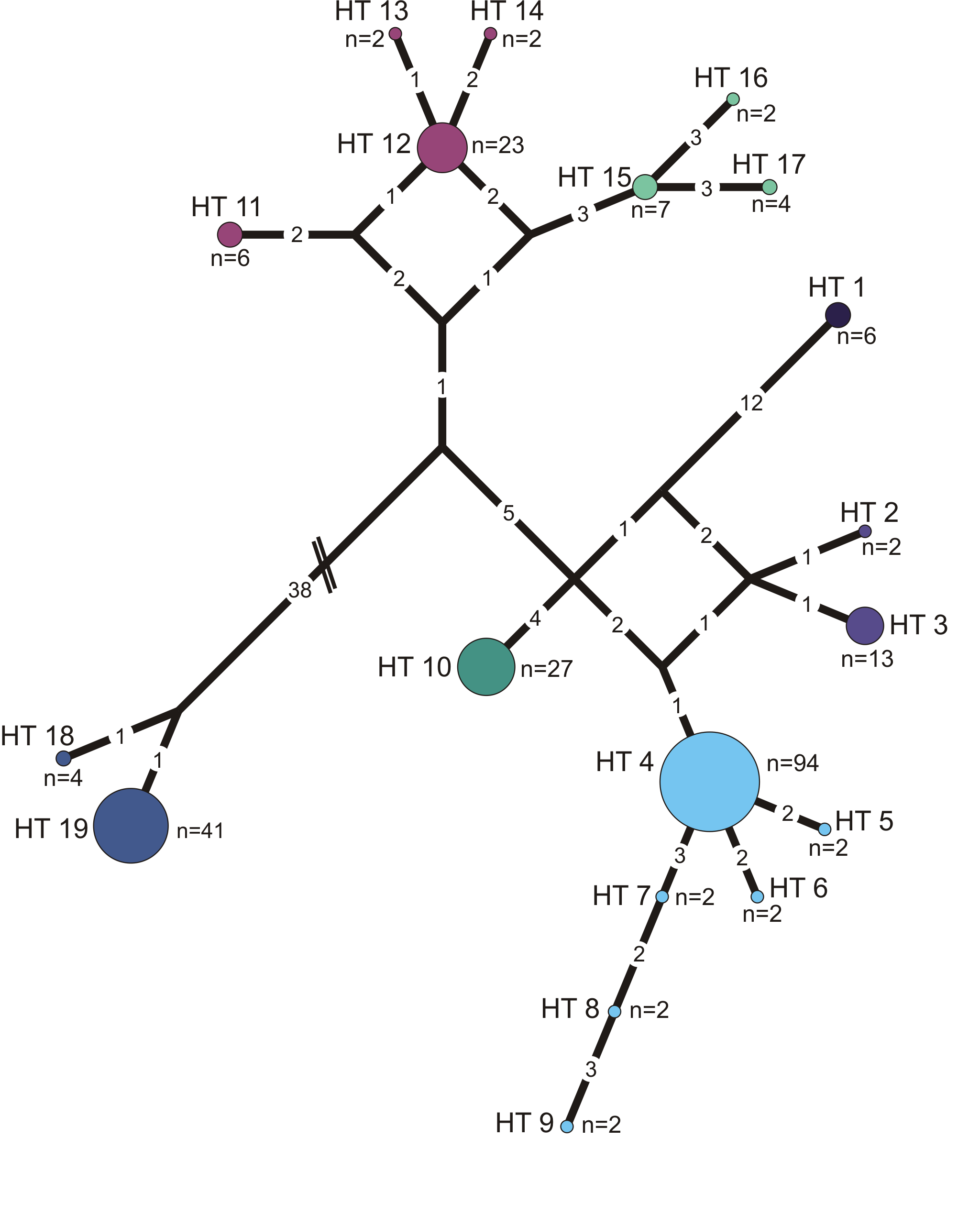 |
Denk, T., G. W. Grimm, F. Grímsson & R. Zetter
(2013). Evidence from "Köppen signatures" of fossil plant assemblages for effective heat transport of
Gulf Stream to subarctic North Atlantic during Miocene cooling.
Biogeosciences, 10, S. 7927-7942.
»Freier Zugang«
| 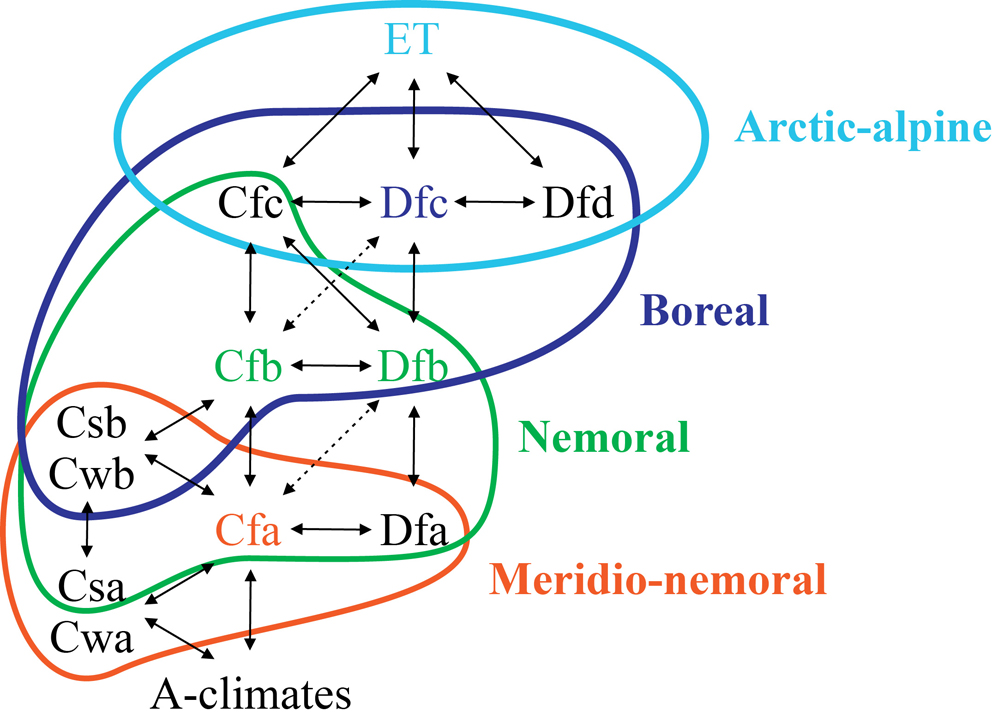 |
Grimm, G. W. & S. S. Renner (2013). Harvesting
GenBank for Betulaceae sequences to generate a new chronogram for the family.
Botanical Journal of the Linnean Society, 172, S. 465-477.
[Vorab-PDF]
— OSA (Online Supporting Archive) mit Daten und
Analyseresultaten
— Archiv mit allen SI (Supplementary Information) Dateien
| 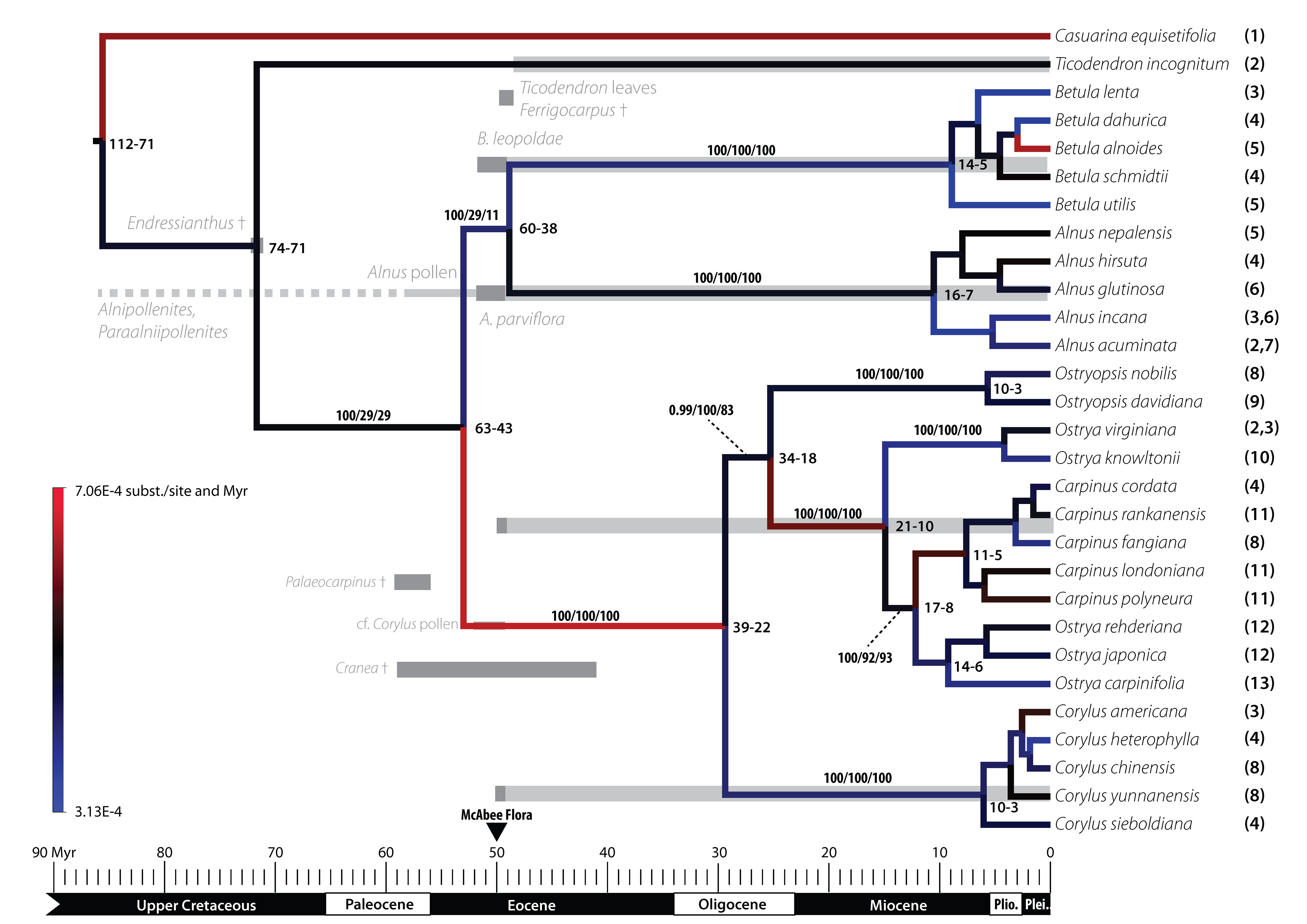 |
Denk, T., G. W. Grimm & A.-K. Röseler
(2012). When field botany meets history: taxonomy of Platanus mexicana in Mexico.
Willdenowia, 42, S. 99-115.
»Freier Zugang«
| 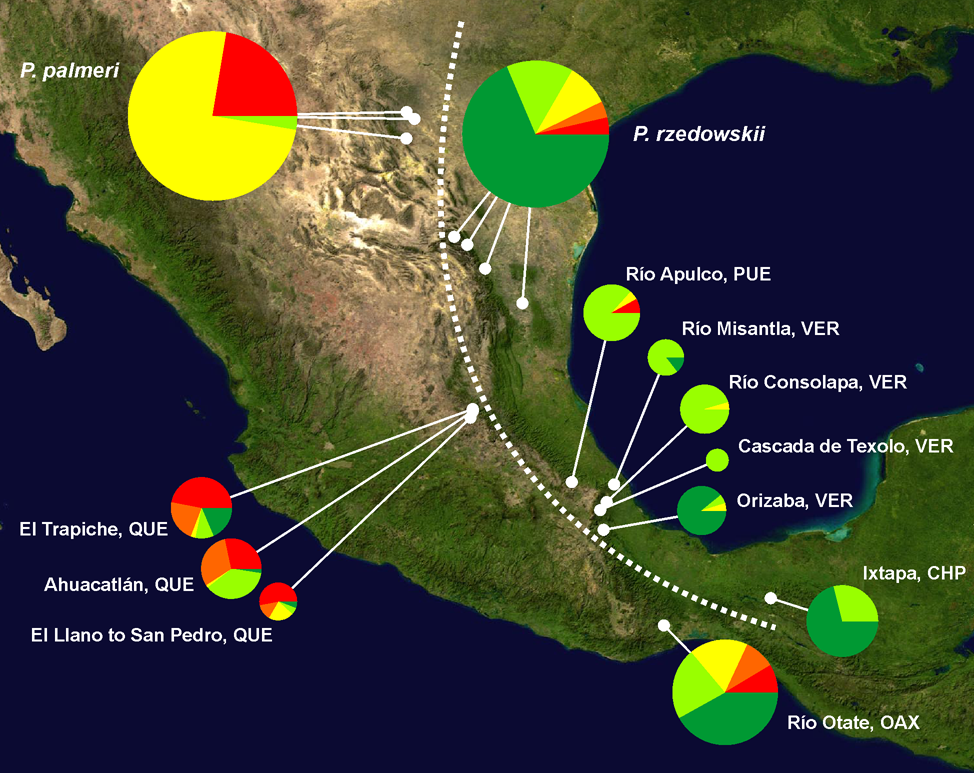 |
Grimm, G. W. & T. Denk (2012). Reliability and
resolution of the coexistence approach - a revalidation using modern-day data.
Review of Palaeobotany & Palynology, 172, S. 33-47.
— Hintergrunddaten plus GIS Dateien hier
(Archivgröße: 8 MB); oder hier ohne GIS Dateien (3 MB).
NB Hoorn et al. (2012) sahen sich, offensichtlich auf Grund einer Gutachternachfrage zu ihrer Studie, zu
einer harschen Abwatschung dieses Papers genötigt, leider ohne das notwendige Faktenwissen. Die Details dazu,
finden sich hier [in Englisch].
| 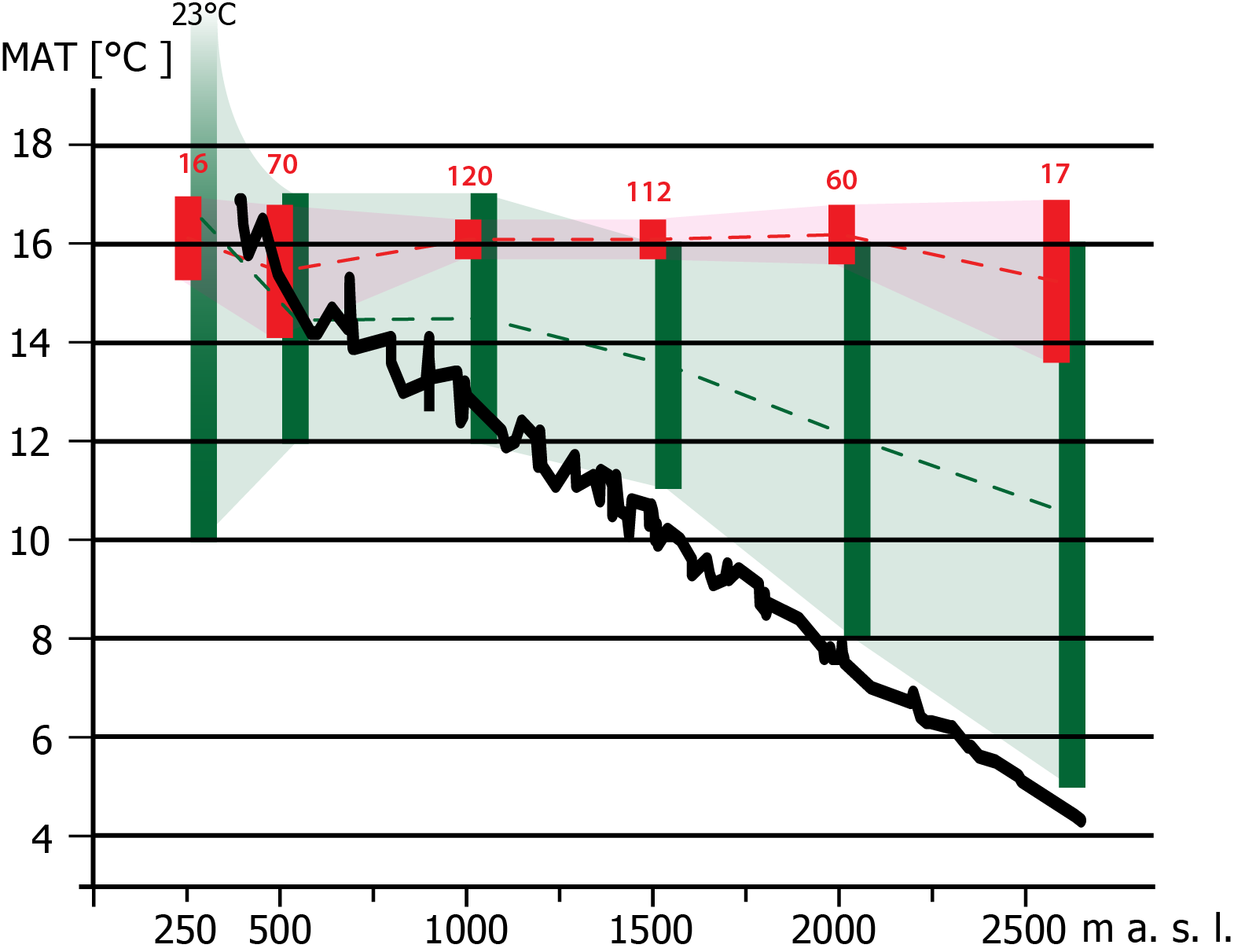 |
Schlee M., M. Göker, G. W. Grimm & V. Hemleben (2011).
Genetic patterns in the Lathyrus pannonicus complex (Fabaceae) reflect ecological differentiation
rather than biogeography and traditional subspecific division.
Botanical Journal of the Linnean Society, 165, S. 402-421.
— Umfassende Daten (ITS Matrix, Pflanzensoziologische Tabellen, etc.) finden sich im Electronic
Supplement auf der Homepage der Zeitschrift.
| 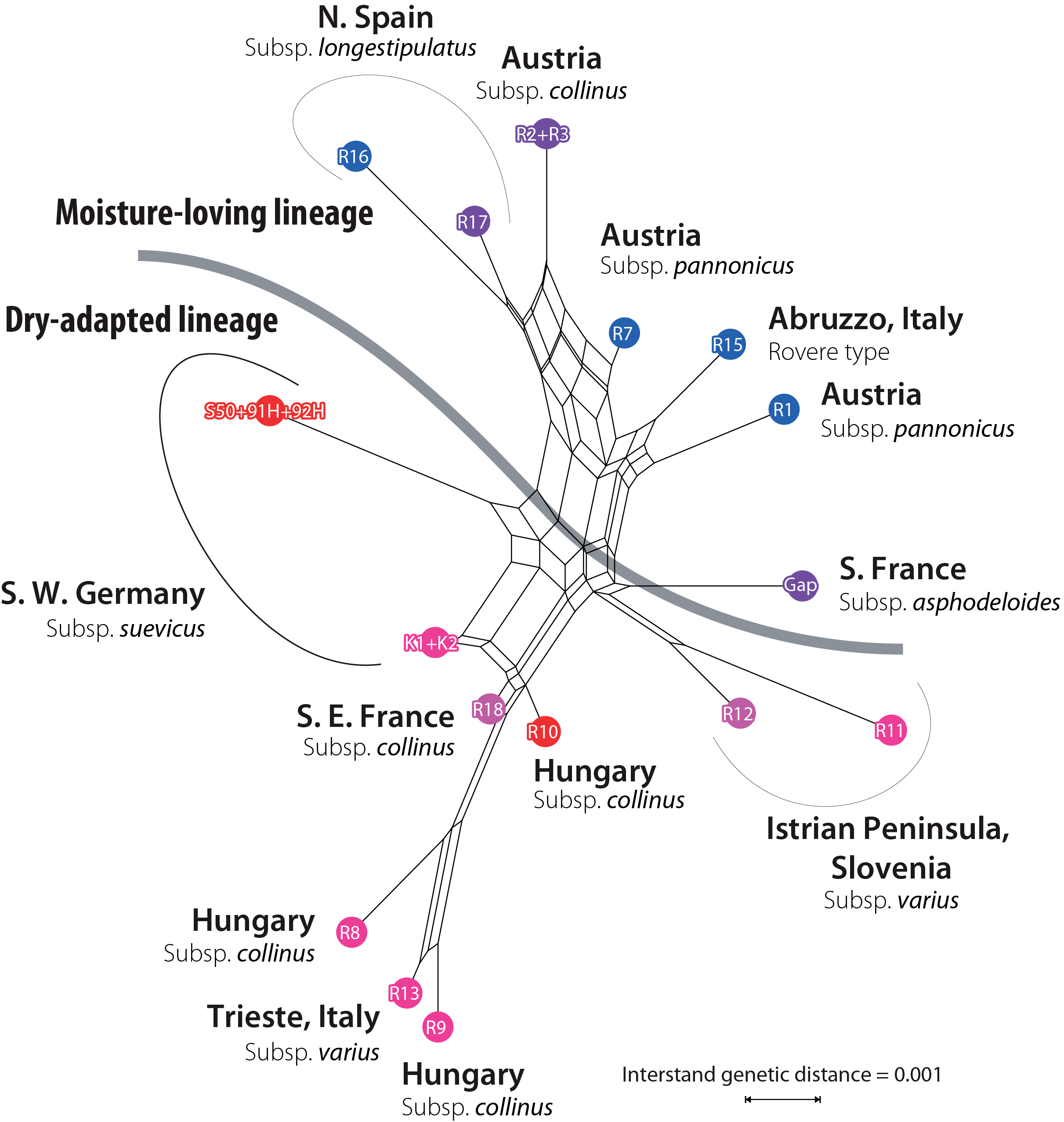 |
Denk, T. & G. W. Grimm (2010). The oaks
of western Eurasia: Traditional classifications and evidence from two nuclear markers.
Taxon, 59, S. 351-366.
— Daten und mehr gibt es hier.
| 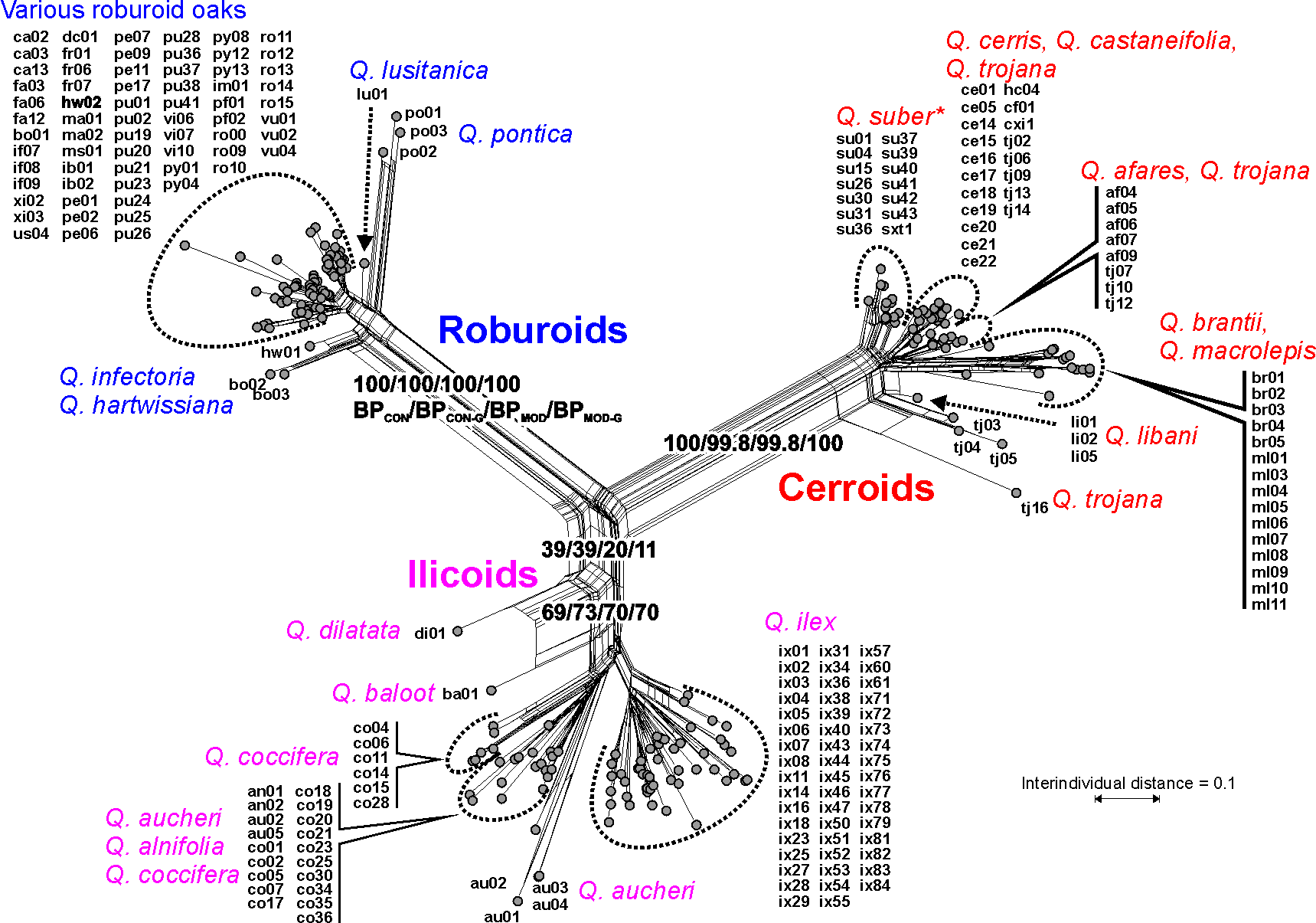 |
Göker, M., G. W. Grimm, A. F. Auch, R. Aurahs &
M. Kučera (2010). A clustering optimization strategy for molecular taxonomy and its
application to planktonic foraminifera SSU rDNA.
Evolutionary Biology. 6, S. 97-112.
»Freier Zugang«
| 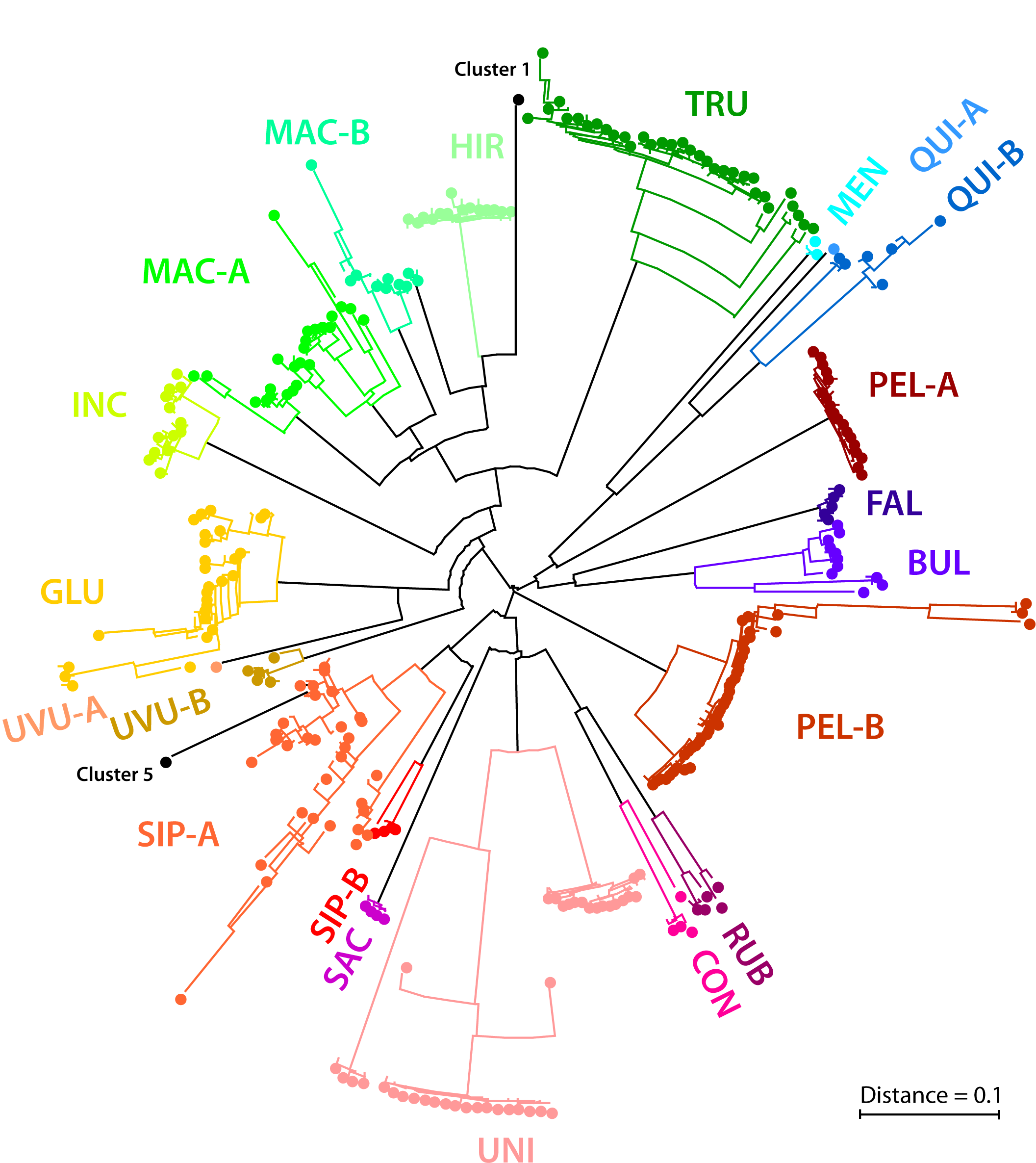 |
Grimm, G. W. & T. Denk (2010). The
reticulate origin of modern plane trees (Platanus, Platanaceae) - a nuclear marker puzzle.
Taxon, 59, S. 134-147.
— Daten und mehr gibt es hier.
| 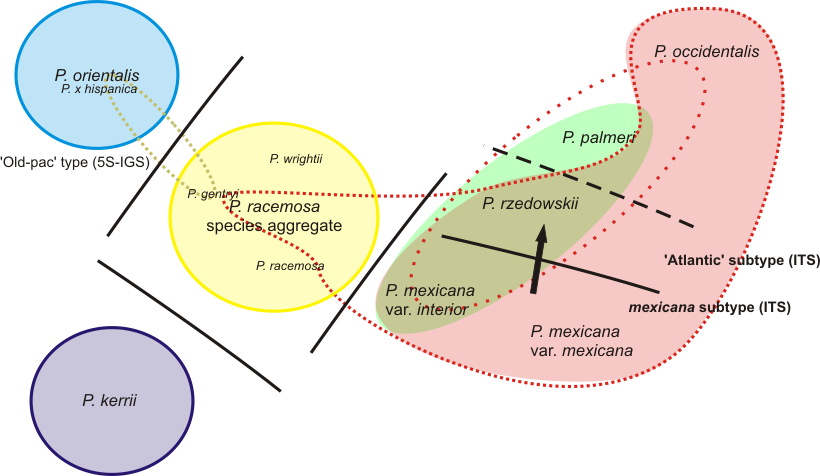 |
Schlee M., M. Göker, G. W. Grimm &
V. Hemleben(2010). Relicts within the genus complex Astragalus/Oxytropis (Fabaceae), and the
comparison of diversity by objective means.
In: J.C. Habel &
T. Assmannn (Ed.): Relict Species. Springer, Heidelberg, S. 105-118.
— Siehe auch das Poster zum Thema.
| 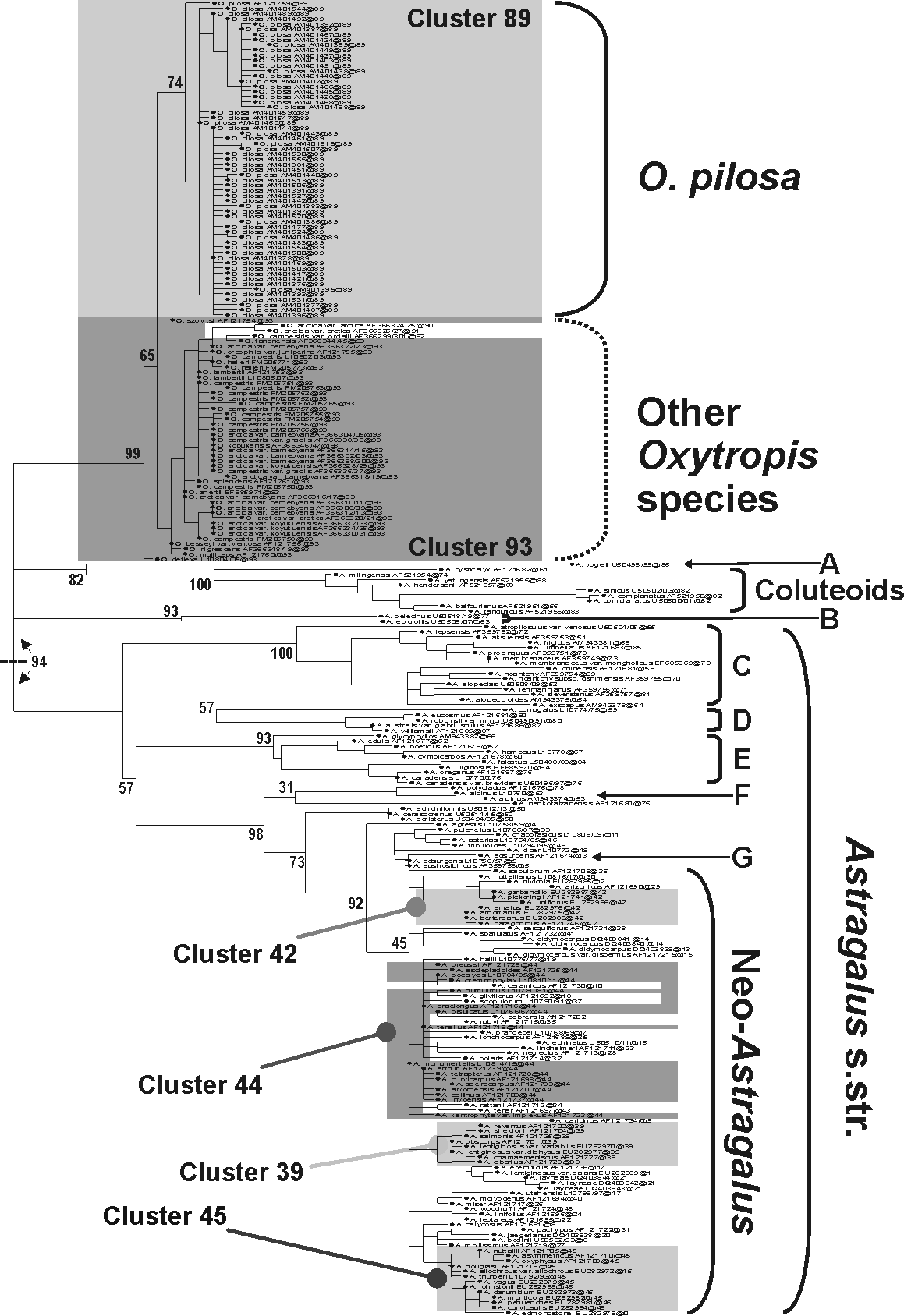 |
Stamatakis, A., M. Göker & G. W. Grimm (2010).
Maximum likelihood analysis of 3,490 rbcL sequences: Scalability of comprehensive inference versus
group-specific taxon sampling.
Evolutionary Bioinformatics, 6, S. 73-90.
»Freier Zugang«
— Alignments.
Im nexus und phylip
Format.
| 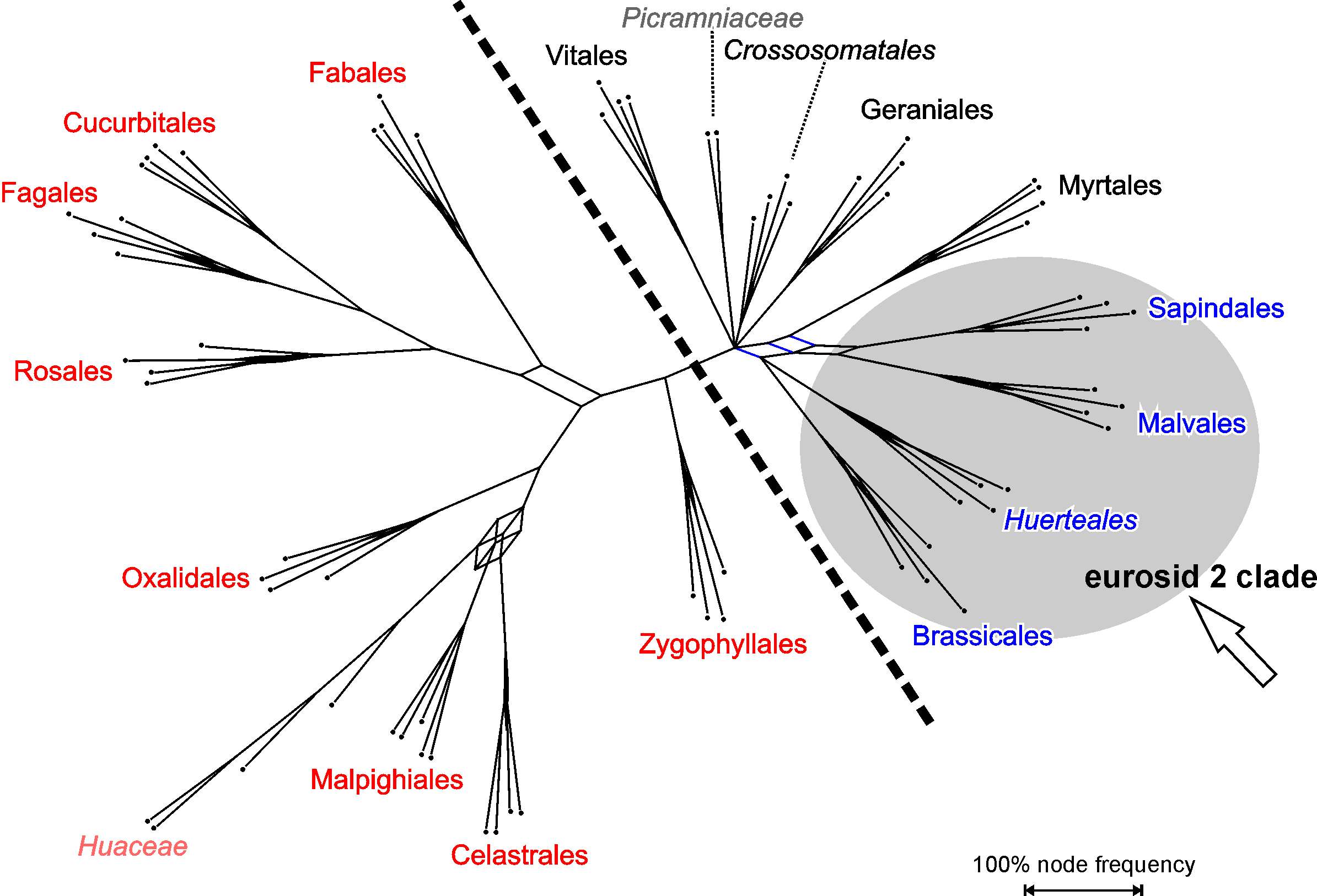 |
Aurahs, R, M. Göker, G. W. Grimm, V. Hemleben,
C. Hemleben, R. Schiebel & M. Kučera (2009). Using the multiple analysis approach to
reconstruct phylogenetic relationships among planktonic Foraminifera from highly divergent and
length-polymorphic SSU rDNA sequences.
Bioinformatics & Biology Insights 3: 155-177.
»Freier Zugang«
| 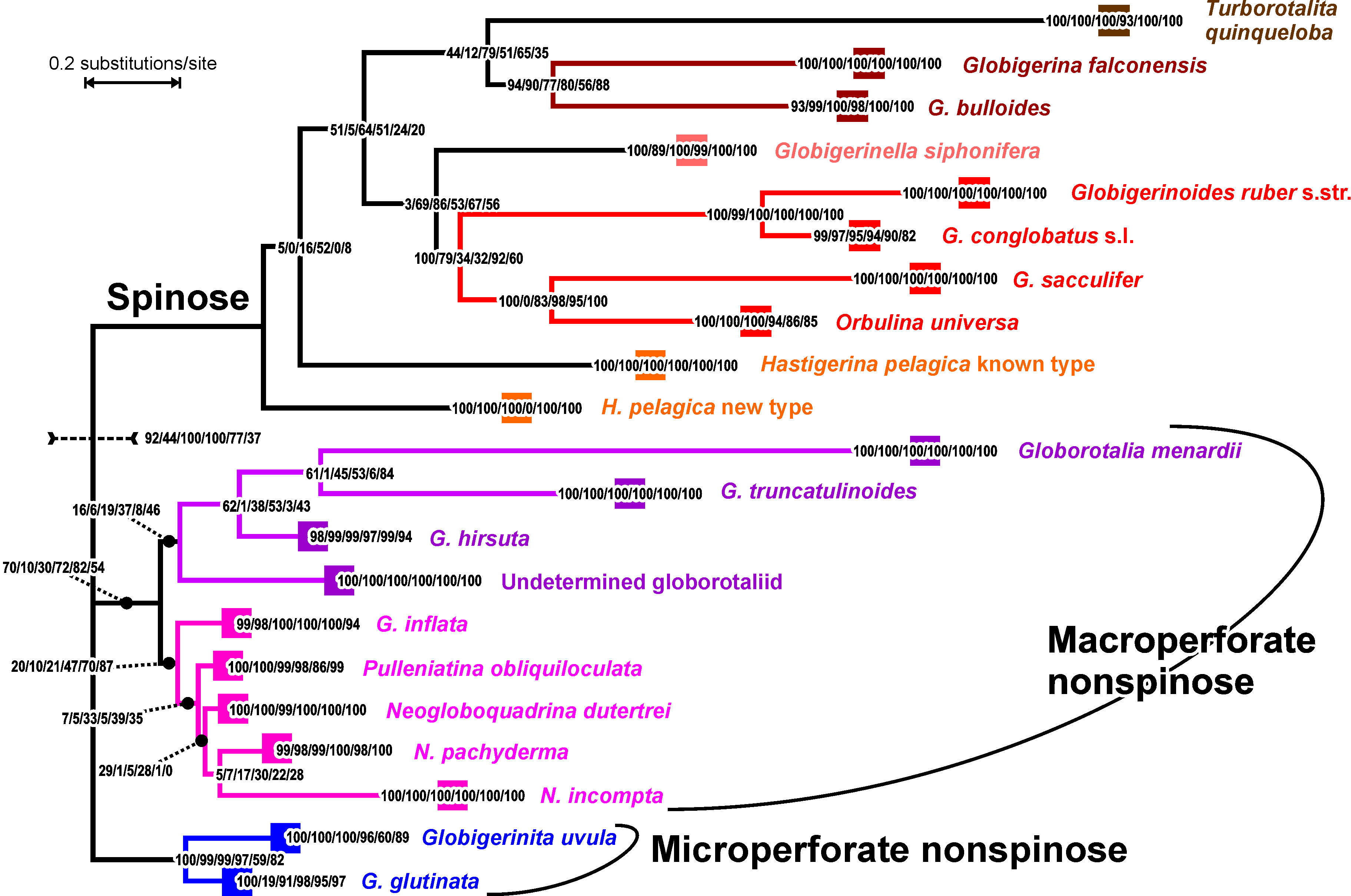 |
|
Aurahs, R., G. W. Grimm, V. Hemleben , C. Hemleben &
M. Kučera (2009).Geographic distribution patterns of cryptic genetic types in
the planktonic foraminifer Globigerinoides ruber.
Molecular Ecology, 18, S. 1692-1706.
| 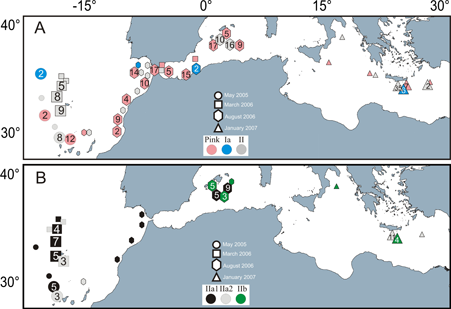 |
|
Denk, T. & G. W. Grimm (2009). Significance of pollen
characteristics for infrageneric classification and phylogeny in Quercus (Fagaceae).
International Journal of Plant Science, 170, S. 926-940.
| 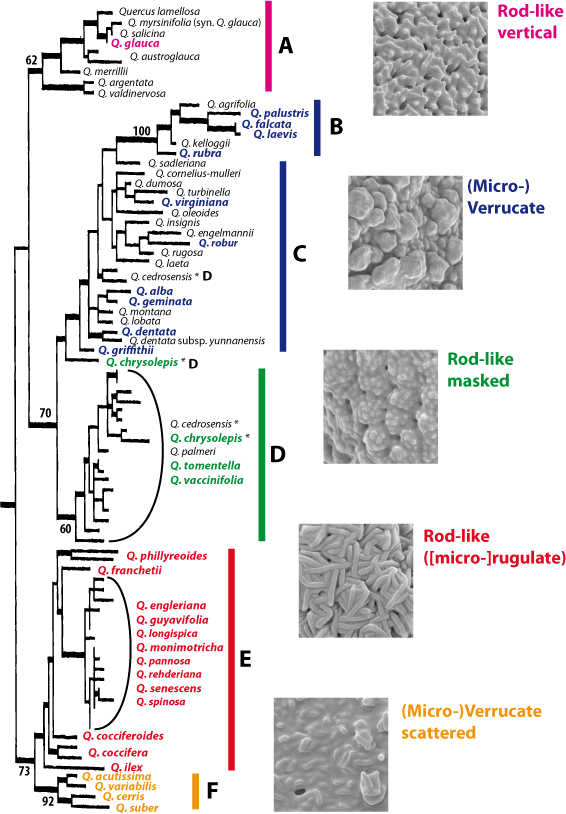 |
Denk, T. & G. W. Grimm (2009). The biogeographic
history of beech trees.
Review of Palaeobotany & Palynology 158 S. 83-100.
— Die Daten. Gebrauch
auf eigene Gefahr!
| 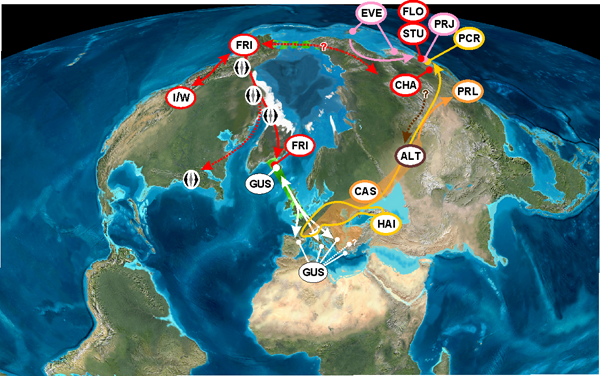 |
|
Friis, E. M., K. R. Pedersen, M. von Balthazar, G. W. Grimm &
P. R. Crane (2009) Monetianthus mirus, gen. & sp. nov., a nymphaealean flower from
the early Cretaceous of Portugal.
International Journal of Plant Sciences, 170, S. 1086-1101.
| 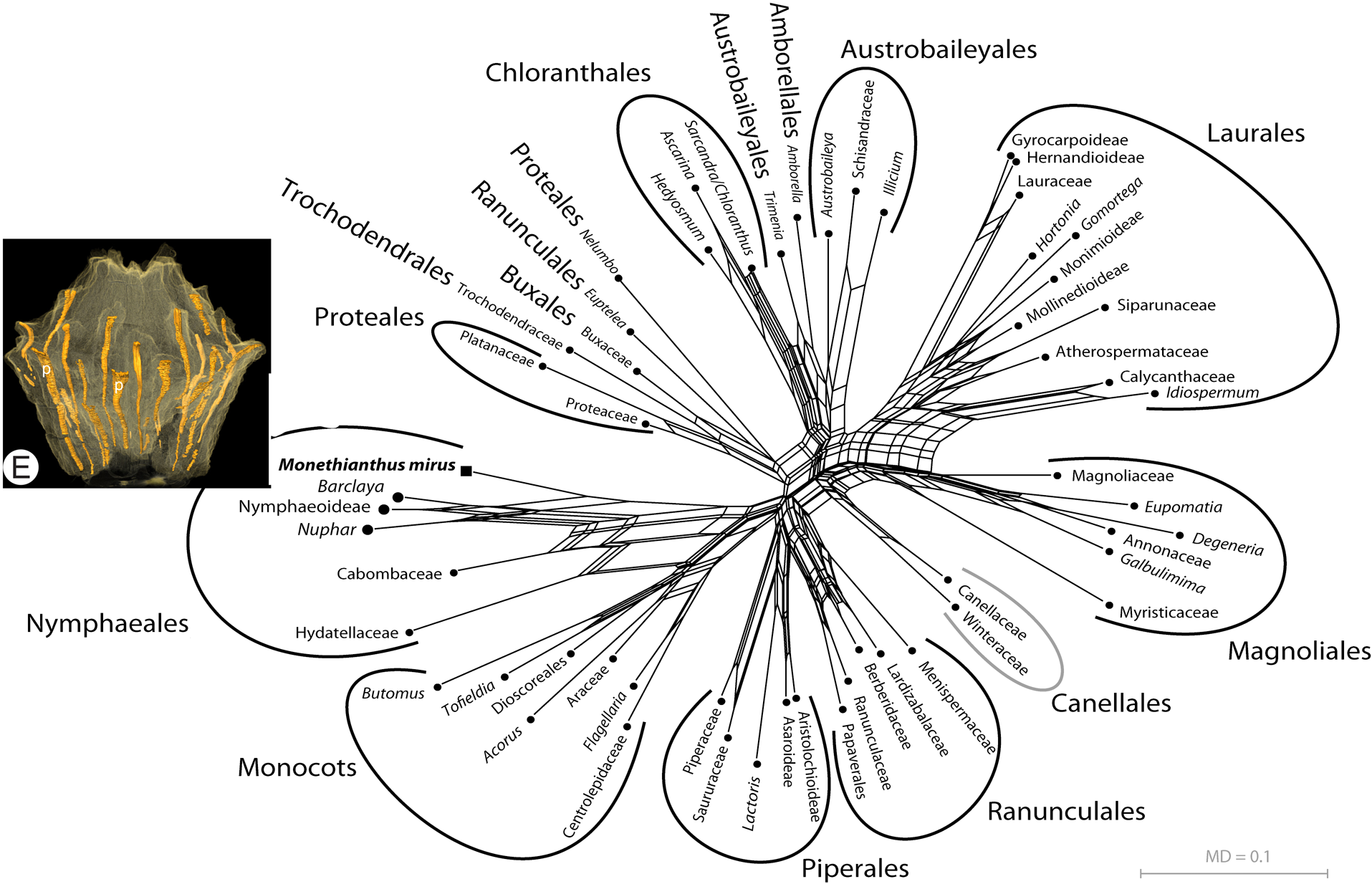 |
|
Tsuchiya, M., G. W. Grimm, P. Heinz, K. Stögerer, K. T. Ertan,
J. Collen, V. Brüchert, C. Hemleben, V. Hemleben & H. Kitazato (2009). Ribosomal DNA shows
extremely low genetic divergence in a world-wide distributed, but disjunct and highly adapted marine
protozoan (Virgulinella fragilis, Foraminiferida).
Marine Micropaleontology, 70, S. 8-19.
| 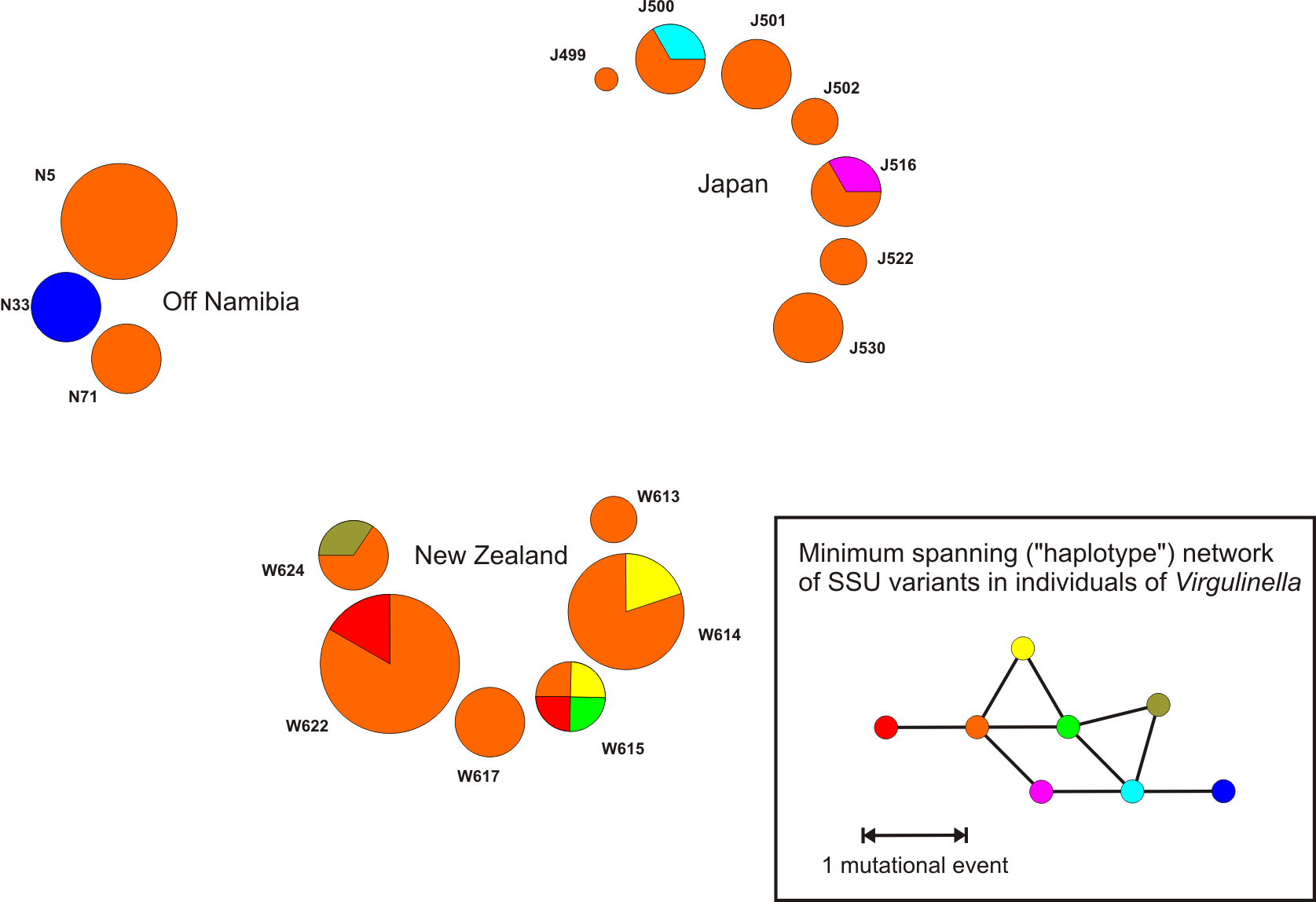 |
Göker, M. & G. W. Grimm (2008). General functions to
transform associate data to host data, and their use in phylogenetic inference from sequences with
intra-individual variability.
BMC Evolutionary Biology, 8, Nr. 86 [e-Publikation]
»Freier Zugang«
| 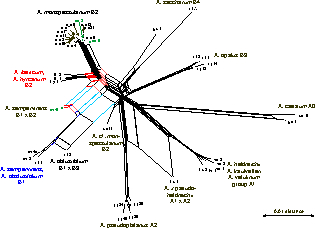 |
|
Grimm, G. W. & T. Denk (2008). ITS evolution in
Platanus: homoeologues, pseudogenes, and ancient hybridisation.
Annals of Botany, 101, S.403-419.
| 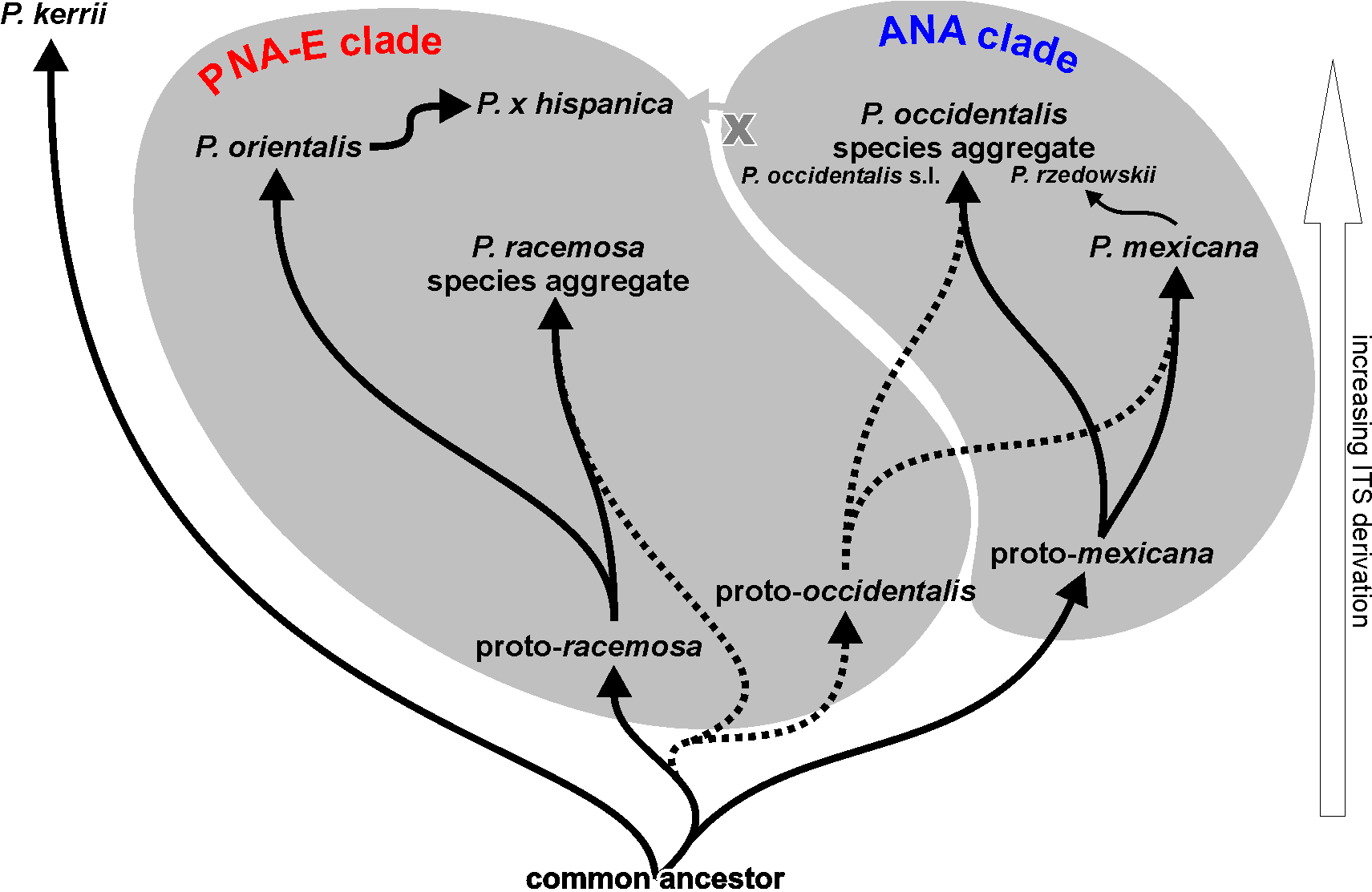 |
|
Komarova, N. Y., G. W. Grimm, V. Hemleben & R. A. Volkov
(2008). Molecular evolution of 35S rDNA and taxonomic status of Lycopersicon within
Solanum sect. Petota.
Plant Systematics & Evolution, 276, S. 59-71.
| 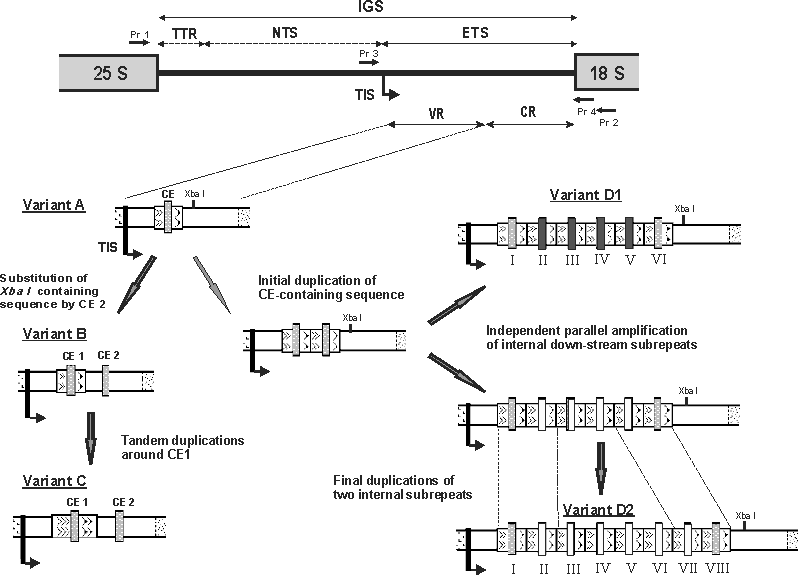 |
|
Renner, S. S., G. W. Grimm, G. M. Schneeweiss, T. F. Stuessy
& R. E. Ricklefs (2008). Rooting and dating maples (Acer) with an uncorrelated-rates
molecular clock: Implications for North American/Asian range disjunctions.
Systematic Biology, 57, S. 795-808.
| 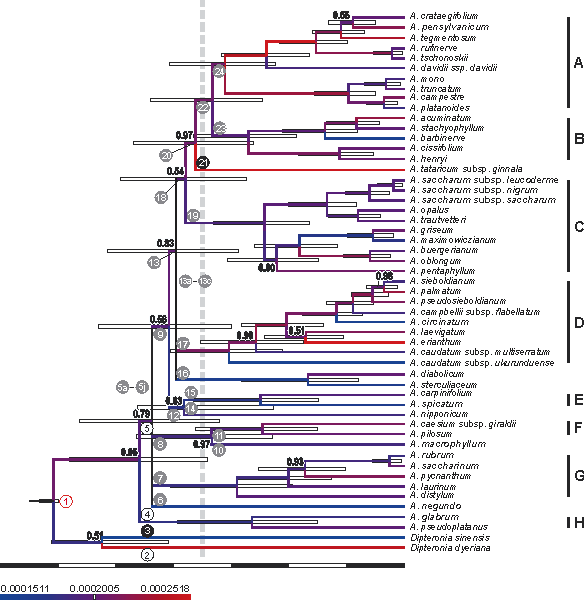 |
|
Draper, I., L. Hedenäs & G. W. Grimm (2007).
Molecular and morphological incongruence in European species of Isothecium (Bryophyta).
Molecular Phylogenetics & Evolution, 42, S.700-716.
| 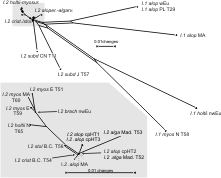 |
Friis, E. M., P. R. Crane, K. R. Pedersen, S. Bengtson,
P. C. J. Donoghue, G. W. Grimm & M. Stampanoni (2007). Phase-contrast X-ray microtomography
links Cretaceous seeds with Gnetales and Bennettitales.
Nature, 450, S.549-552.
— Siehe dazu auch diesen Post @ Res.I.P.:
What I was not allowed to show #1: A neighbour-net of seed plants.
| 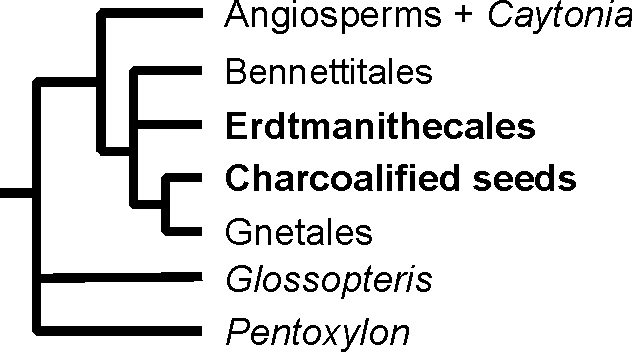 |
|
Grimm, G. W., T. Denk & V. Hemleben (2007).
Evolutionary history and systematics of Acer section Acer - a case study of low-level
phylogenetics.
Plant Systematics & Evolution, 267, S.215-253.
| 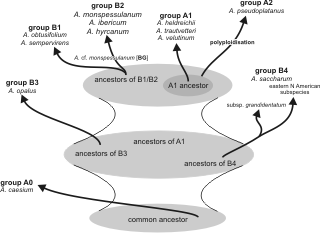 |
|
Grimm, G. W., T. Denk & V. Hemleben (2007).
Coding of intraspecific nucleotide polymorphisms: a tool to resolve reticulate evolutionary relationships
in the ITS of beech trees (Fagus L., Fagaceae).
Systematics & Biodiversity, 5 (3), S. 291-309.
[PDF] © Systematics and
Biodiversity, The Natural History Museum
| 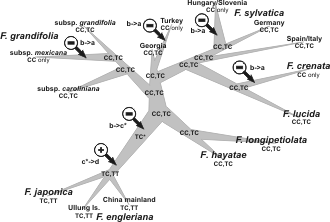 |
|
Grimm, G. W., K. Stögerer, K. T. Ertan, H. Kitazato, M. Kučera,
V. Hemleben & C. Hemleben (2007). Diversity of rDNA in Chilostomella: molecular
differentiation patterns and putative hermit types.
Marine Micropaleontology, 62, S.75-90.
| 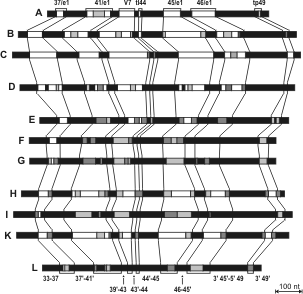 |
|
Renner, S. S., L. Beenken, G. W. Grimm, A. Kocyan &
R. E. Ricklefs (2007). The evolution of dioecy, heterodichogamy, and labile sex expression in
Acer.
Evolution, 61 (11), S.2701-2719.
| 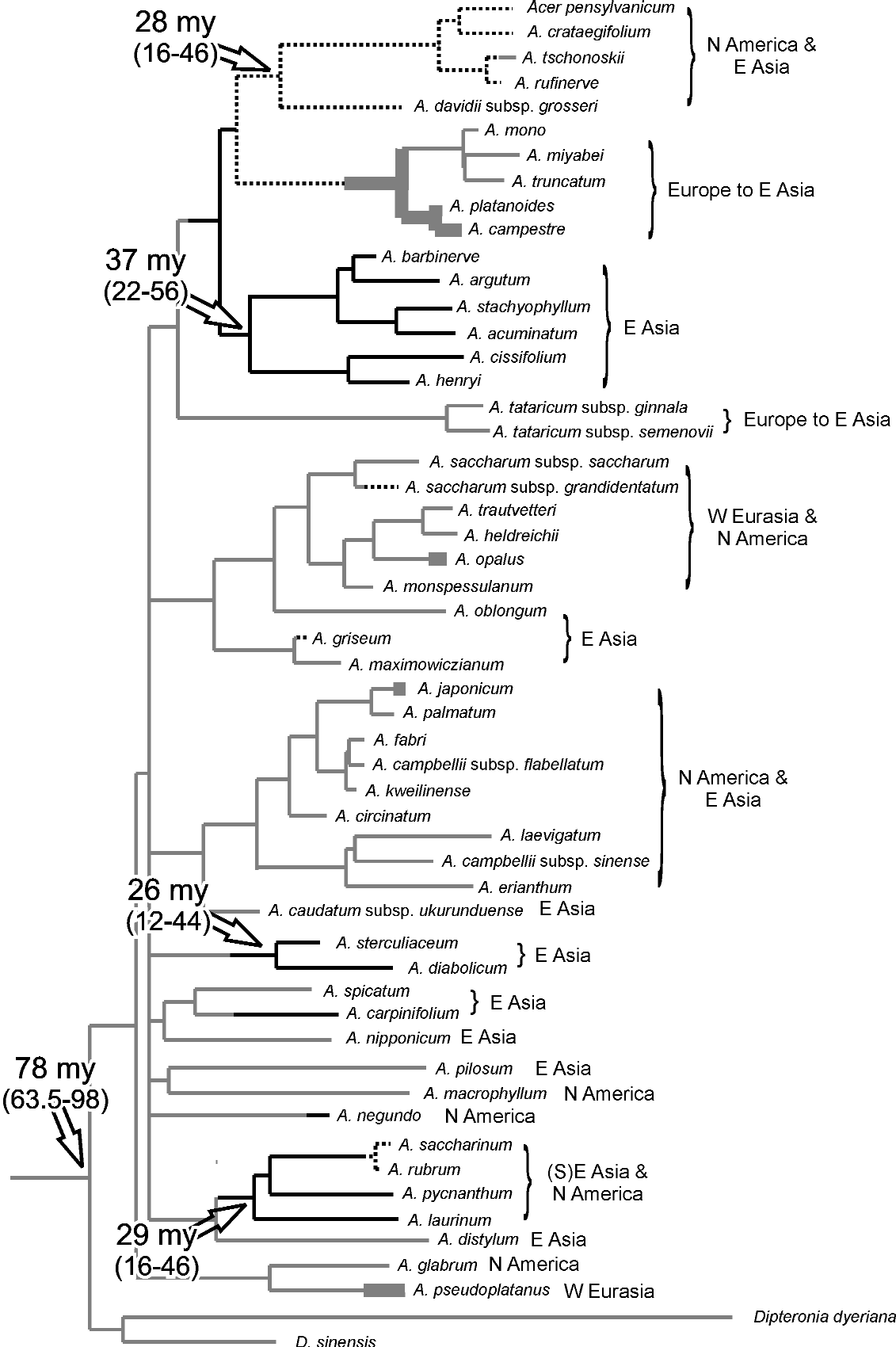 |
Grimm, G. W., S. S. Renner, A. Stamatakis & V. Hemleben
(2006). A nuclear ribosomal DNA phylogeny of Acer inferred with maximum likelihood,
splits graphs, and motif analyses of 606 sequences.
Evolutionary Bioinformatics, 2, S. 7-22. [!Seitennummern 2007 geändert, ursprünglich S. 279-294!]
»Freier Zugang«
| 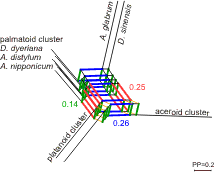 |
|
Denk, T. & G. W. Grimm (2005). Phylogeny and
biogeography of Zelkova (Ulmaceae s.str.) as inferred from leaf morphology, ITS sequence data and
the fossil record.
Botanical Journal of the Linnean Society, 147, S.129-157.
| 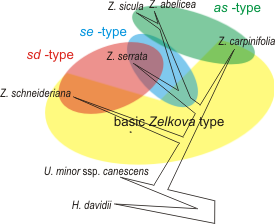 |
Denk, T., G. W. Grimm & V. Hemleben (2005). Patterns
of molecular and morphological differentiation in Fagus: implications for phylogeny.
American Journal of Botany, 92, S.1006-1016.
»Freier Zugang«
| 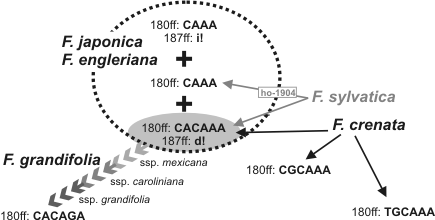 |
| Grimm, G. W., M. Schlee, N. Y. Komarova,
R. A. Volkov & V. Hemleben (2005). Low-level taxonomy and intrageneric evolutionary trends in
higher plants.
Nova Acta Leopoldina, NF 92, Band 342, S.129-145.
[Scan]
| 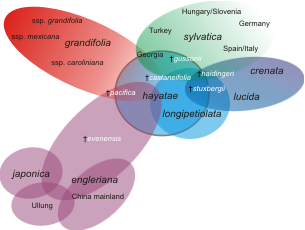 |
Grimm, G. W. (2003). Tracing the Mode and Speed of
Intrageneric evolution - A phylogenetic case study on genus Acer L.(Aceraceae) and genus
Fagus L. (Fagaceae) using fossil, morphological, and molecular data. Dissertation,
Eberhardt-Karls-Universität, Tübingen, 159 S. + Anhänge. http://nbn-resolving.de/urn:nbn:de:bsz:21-opus-15744 (URI)
»Freier Zugang«
| 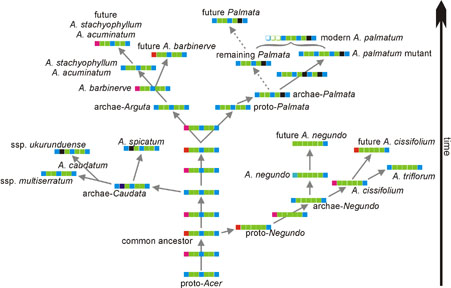 |
|
Denk, T., G. Grimm, K. Stögerer, M. Langer & V. Hemleben
(2002). The evolutionary history of Fagus in western Eurasia: Evidence from genes, morphology
and the fossil record.
Plant Systematics & Evolution, 232, S.213-236.
| 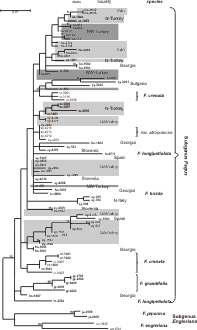 |
| Grimm, G. W. (2000). Mapping report and
geological map of the north-eastern part of the Radicondoli Basin, Radicondoli, Tuscany, Italy.
Diplom-Kartierung, Eberhard-Karls-Universität, Tübingen, 27 S. + Geol. Karte.
|  |
| Roth-Nebelsick, A., G. Grimm, V. Mosbrugger,
H. Hass & H. Kerp (2000). Morphometric analysis of Rhynia and Asteroxylon:
testing functional aspects of early land plant evolution.
Paleobiology, 26(3), S.405-418.
|  |
| Roth-Nebelsick, A., V. Mosbrugger &
G. Grimm (2000). Evolution of Water Transport Systems in Early Land Plants - A trade-off between
fabricational cost and functional performance.
In: H.-C. Spatz & T. Speck (Ed.):
Plant Biomechanics. Thieme Verlag, Stuttgart, S. 123-128.
|  |
| Grimm, G. W. (1999). Phylogenie der
Cycadales. Diplomarbeit, Eberhard-Karls-Universität, Tübingen, Germany, gedruckt 82 S. + Anhang.
| Zusammenfassung
|
| Zugang zum Volltext. |
Blogbeiträge, Kommentare, und kommentierte Abbildungen publiziert unter CC-Lizenz
Grimm, G., Beitrag vom 20.12.2021.
Kommentar auf ResearchGate zu
Grossoni et al., Flora Mediterranea, 2021,
The taxonomic interpretation of Mediterranean oaks of Quercus sect. Quercus (Fagaceae): uncertainties and diverging concepts.
Grimm, G. W., Beitrag vom 15.12.2021. Monophyletic species.
Res.I.P.
https://researchinpeace.blogspot.com/2021/12/monophyletic-species.html
Grimm, G. W., Beitrag vom 29.9.2021. A fully resolved, and perfectly
misleading, species tree
Res.I.P.
https://researchinpeace.blogspot.com/2021/09/a-fully-resolved-and-perfectly.html
Relevante Daten verfügbar via Figshare: Fagaceae collection
Grimm, G., Beitrag vom 29.1.2021.
Kommentar auf ResearchGate zu
Areces-Berazain et al., Genomics, 2021,
Genome-wide supermatrix analyses of maples (Acer, Sapindaceae) reveal recurring inter-continental migration,
mass extinction, and rapid lineage divergence.
[Link zum Tweet]
Grimm, G. W., Beitrag vom 19.10.2020. Xenoplasy.
The Genealogical World of Phylogenetic Networks (Ed.: D. Morrison).
http://phylonetworks.blogspot.fr/2020/10/xenoplasy.html
Grimm, G. W., Beitrag vom 5.10.2020. Rogue dinosaurs, an example from
the Aetosauria.
The Genealogical World of Phylogenetic Networks (Ed.: D. Morrison).
http://phylonetworks.blogspot.fr/2020/09/rogue-dinosaurs-example-from-aetosauria.html
Grimm, G. W., Beitrag vom 14.9.2020. Exploring the oak phylogeny.
The Genealogical World of Phylogenetic Networks (Ed.: D. Morrison).
http://phylonetworks.blogspot.fr/2020/09/exploring-oak-phylogeny.html
Grimm, G. W., Beitrag vom 7.9.2020. Fossils and Networks 3 – (deleting and)
adding one tip.
The Genealogical World of Phylogenetic Networks (Ed.: D. Morrison).
http://phylonetworks.blogspot.fr/2020/09/fossils-and-networks-3-deleting-and.html
Grimm, G. W., Beitrag vom 10.8.2020. Fossils and networks 2 –
deleting (and adding) one tip.
The Genealogical World of Phylogenetic Networks (Ed.: D. Morrison).
http://phylonetworks.blogspot.fr/2020/08/fossils-and-networks-2-deleting-and.html
Grimm, G. W., Beitrag vom 22.6.2020. Can we dig too deep? Signal conflict
in mitochondrial genes of land plants.
The Genealogical World of Phylogenetic Networks (Ed.: D. Morrison).
http://phylonetworks.blogspot.fr/2020/06/can-we-dig-too-deep-signal-conflict-in.html
Grimm, G. W., Beitrag vom 15.6.2020. How I would (realistically) analyze
CoV-2 (or similar) phylogenetic data.
The Genealogical World of Phylogenetic Networks (Ed.: D. Morrison).
http://phylonetworks.blogspot.fr/2020/06/how-i-would-realistically-analyze-cov-2.html
Grimm, G. W., Beitrag vom 8.6.2020. Hack and fish ... for recombination
in the SARS group.
The Genealogical World of Phylogenetic Networks (Ed.: D. Morrison).
http://phylonetworks.blogspot.fr/2020/06/hack-and-fish-for-recombination-in-sars.html
Grimm, G. W., Beitrag vom 1.6.2020. To what degree are Median-joining
networks phylogenetic?
The Genealogical World of Phylogenetic Networks (Ed.: D. Morrison).
http://phylonetworks.blogspot.fr/2020/06/to-what-degree-are-median-joining.html
Grimm, G. W., Beitrag vom 18.5.2020. Supernetworks and gene tree incongruence.
The Genealogical World of Phylogenetic Networks (Ed.: D. Morrison).
http://phylonetworks.blogspot.fr/2020/05/supernetworks-and-gene-tree-incongruence.html
Grimm, G. W., Beitrag vom 4.5.2020. Finding the CoV-2 root.
The Genealogical World of Phylogenetic Networks (Ed.: D. Morrison).
http://phylonetworks.blogspot.fr/2020/05/finding-cov-2-root.html
Grimm, G. W., Beitrag vom 20.4.2020. Using Median Networks to study SARS-CoV-2.
The Genealogical World of Phylogenetic Networks (Ed.: D. Morrison).
http://phylonetworks.blogspot.fr/2020/04/using-median-networks-to-study-sars-cov.html
Morrison, D. and G. W. Grimm,
Beitrag vom 6.4.2020. Consensus networks: cluster union or edge union?
The Genealogical World of Phylogenetic Networks.
http://phylonetworks.blogspot.fr/2020/04/consensus-networks-cluster-union-or_6.html
Grimm, G. W. and D. Morrison,
Beitrag vom 30.3.2020. Trees and viruses: the SARS group.
The Genealogical World of Phylogenetic Networks.
http://phylonetworks.blogspot.fr/2020/03/trees-and-viruses-sars-group.html
— Daten etc. verfügbar via
figshare.
Grimm, G. W., Beitrag vom 9.3.2020. Sneak peek into SplitsTree5.
The Genealogical World of Phylogenetic Networks (Ed.: D. Morrison).
http://phylonetworks.blogspot.fr/2020/03/sneak-peek-into-splitstree5.html
Grimm, G. W., Beitrag vom 17.2.2020. Large morphomatrices – trivial signal.
The Genealogical World of Phylogenetic Networks (Ed.: D. Morrison).
http://phylonetworks.blogspot.fr/2020/02/large-morphomatrices-trivial-signal.html
Grimm, G. W., Beitrag vom 10.2.2020. Fossils and networks 1 – Farris
and Felsenstein.
The Genealogical World of Phylogenetic Networks (Ed.: D. Morrison).
http://phylonetworks.blogspot.fr/2020/02/fossils-and-networks-1-farris-and.html
Grimm, G. , Beitrag vom 29.1.2020,
RAxML google group. Tips und
Tricks für die Analyse ternärer Datenmatrizen mit RAxML, und warum total evidence nicht die beste Wahl ist, mit
Referenzen, Links. [in Englisch]
Grimm, G. (2020).
Fagaceae collection. File set, Figshare, doi: 10.6084/m9.figshare.11603547.
Grimm, G. W., Beitrag vom 13.1.2020. Why we want to map
trait evolution on networks, pt. 2 – Topological ambiguity.
The Genealogical World of Phylogenetic Networks (Ed.: D. Morrison).
http://phylonetworks.blogspot.fr/2019/12/why-we-may-want-to-map-trait2.html
Grimm, G. W., Beitrag vom 6.1.2020. Why we want to map
trait evolution on networks, pt. 1 – Introduction.
The Genealogical World of Phylogenetic Networks (Ed.: D. Morrison).
http://phylonetworks.blogspot.fr/2019/12/why-we-may-want-to-map-trait-evolution.html
Grimm, G. W., Beitrag vom 23.12.2019. Evolutionary processes hidden
in Christmas clip arts.
The Genealogical World of Phylogenetic Networks (Ed.: D. Morrison).
http://phylonetworks.blogspot.fr/2019/12/evolutionary-processes-hidden-in.html
Grimm, G. W., Beitrag vom 9.12.2019. The Science of Spices by S. Farrimond
— in networks.
The Genealogical World of Phylogenetic Networks (Ed.: D. Morrison).
http://phylonetworks.blogspot.fr/2019/12/the-science-of-spice-by-s-farrimond-in.html
Grimm, G. W., Beitrag vom 2.12.2019. Trees informing networks
explaining trees.
The Genealogical World of Phylogenetic Networks (Ed.: D. Morrison).
http://phylonetworks.blogspot.fr/2019/12/trees-informing-networks-explaining.html
Grimm, G. W.. Beitrag vom 18.11.2019. Why the emperor has
no clothes on – conflict or not?
The Genealogical World of Phylogenetic Networks (Ed.: D. Morrison).
http://phylonetworks.blogspot.fr/2019/11/why-emporer-has-no-clothes-on-conflict.html
Grimm, G. W. and D. Morrison,
Beitrag vom 11.11.2019. A new playground for networks and exploratory data analysis.
The Genealogical World of Phylogenetic Networks (Ed.: D. Morrison).
http://phylonetworks.blogspot.fr/2019/11/a-new-playground-for-networks-and.html
Grimm, G. W., Beitrag vom 4.11.2019. Why the emperor has no clothes on
– a thicket of trees.
The Genealogical World of Phylogenetic Networks (Ed.: D. Morrison).
http://phylonetworks.blogspot.fr/2019/11/why-emperor-has-no-clothes-on-thicket.html
Grimm, G. W., Beitrag vom 21.10.2019. Why the emperor has no clothes on
– the mighty matK.
The Genealogical World of Phylogenetic Networks (Ed.: D. Morrison).
http://phylonetworks.blogspot.fr/2019/10/why-emperor-has-no-clothes-on-mighty.html
— verwendete (Taxon-reduziert für den Post) Datenmatrix ist publiziert via
figshare.
Grimm, G. W., Beitrag vom 18.10.2019. When dating is futile – plastome-based
chronograms for oaks.
Res.I.P.
https://researchinpeace.blogspot.com/2019/
Grimm, G., Beitrag vom 10.10.2019.
Kommentar auf ResearchGate zu
Bazhenova & Bazhenov, Paleontological Journal, 2019,
Stems of a New Osmundaceous Fern from the Middle Jurassic of Kursk Region, European Russia.
Grimm, G. W., Beitrag vom 19.9.2019. Why you never should do a single-
species plastid analysis of oaks.
Res.I.P.
https://researchinpeace.blogspot.com/2019/09/why-you-never-should-do-single-species.html
Related data can be found on Figshare
Grimm, G., Beitrag vom 16.9.2019.
Online-Kommentar zu Li et al., Frontiers in Plant Science, 2019,
Landscape features and climatic forces Shape the genetic structure and evolutionary history of an oak species (Quercus chenii)
in East China.
Morrison, D. and G. W. Grimm,
Beitrag vom 16.9.2019. A network of happiness, by ranks.
The Genealogical World of Phylogenetic Networks (Ed.: D. Morrison).
http://phylonetworks.blogspot.fr/2019/09/a-network-of-happiness-by-ranks.html
Grimm, G., Beitrag vom 17.7.2019.
Kommentar auf ResearchGate zu
Liu et al., Forests, 2019,
Complete chloroplast genome sequence and phylogenetic analysis of Quercus bawanglingensis
Huang, Li et Xing, a vulnerable oak tree in China.
Grimm, G. W., Beitrag vom 8.7.2019. Character cliques and networks –
mapping haplotypes of manual alphabets.
The Genealogical World of Phylogenetic Networks (Ed.: D. Morrison).
http://phylonetworks.blogspot.fr/2019/07/character-cliques-and-networks-mapping.html
Grimm, G. W., Beitrag vom 1.7.2019. Stacking networks based
on sign language manual alphabets.
The Genealogical World of Phylogenetic Networks (Ed.: D. Morrison).
http://phylonetworks.blogspot.fr/2019/07/stacking-networks-based-on-sign.html
Grimm, G. W., Beitrag vom 17.6.2019. Ockham's Razor applied but not used:
can we do DNA-scaffolding with seven characters?
The Genealogical World of Phylogenetic Networks (Ed.: D. Morrison).
http://phylonetworks.blogspot.fr/2019/06/ockhams-razor-applied-but-not-used-can.html
Grimm, G. W., Beitrag vom 22.4.2019. The 2nd Amendment does
more than keeping King George away.
The Genealogical World of Phylogenetic Networks (Ed.: D. Morrison).
http://phylonetworks.blogspot.fr/2019/04/the-2nd-amendment-does-more-than.html
Grimm, G. W., Beitrag vom 5.4.2019. Next-generation neighbor-nets.
The Genealogical World of Phylogenetic Networks (Ed.: D. Morrison).
http://phylonetworks.blogspot.fr/2019/04/next-generation-neighbor-nets.html
Grimm, G. W., Beitrag vom 21.3.2019. How to interpret bootstrap values.
Res.I.P.
https://researchinpeace.blogspot.com/2019/03/how-to-interpret-bootstrap-values.html
Grimm, G. W., Beitrag vom 4.3.2019. Has homoiology been neglected
in phylogenetics?
The Genealogical World of Phylogenetic Networks (Ed.: D. Morrison).
http://phylonetworks.blogspot.fr/2019/03/has-homoiology-been-neglected-in.html
Grimm, G., Beitrag vom 22.2.2019.
Kommentar auf ResearchGate
zu Suc et al., Ecologia Mediterranea, 2019, Reconstruction of Mediterranean flora, vegetation
and climate for the last 23 million years based on an extensive pollen dataset.
Grimm, G. W., Beitrag vom 18.2.2019. Can we depict the evolution of
highly conserved genes, such as the ribosomal RNA genes?
The Genealogical World of Phylogenetic Networks (Ed.: D. Morrison).
http://phylonetworks.blogspot.fr/2019/02/can-we-depict-evolution-of-highly.html
Grimm, G. W., Beitrag vom 4.2.2019. Should we bother about character
independence?
The Genealogical World of Phylogenetic Networks (Ed.: D. Morrison).
http://phylonetworks.blogspot.fr/2019/02/should-we-bother-about-character.html
Grimm, G. W., Beitrag vom 31.1.2019. There's no need to do what you can't.
A comment to Yang et al. (PeerJ, 2019) with some tips for biogeographic
analyses.
Res.I.P.
https://researchinpeace.blogspot.fr/2019/01/theres-no-need-to-do-what-you-cant.html
Grimm, G., Beitrag vom 14.1.2019.
Feedback zum Preprint von
Worth et al., PeerJ Preprint, 2019,
The complete chloroplast genome of Fagus crenata (subgenus Fagus)
and comparison with F. engleriana (subgenus Engleriana).
Grimm, G. W., Beitrag vom 14.1.2019. Phylogenetic ambiguity: data
gaps, indifference and internal conflict.
The Genealogical World of Phylogenetic Networks (Ed.: D. Morrison).
http://phylonetworks.blogspot.fr/2019/01/phylogenetic-ambiguity-data-gaps.html
Grimm, G., Beitrag vom 10.1.2019.
Kommentar auf ResearchGate zu
Ivanov & Lazarova, J. Palaeogeogr., 2019,
Past climate and vegetation in Southeast Bulgaria — a study based on the late Miocene pollen record from the Tundzha
Basin.
Grimm, G. W., Beitrag vom 24.12.2018. A jolly, holly network ... of
Christmas carols.
The Genealogical World of Phylogenetic Networks (Ed.: D. Morrison).
http://phylonetworks.blogspot.fr/2018/12/a-jolly-holly-network-of-christmas.html
Grimm, G., Beitrag vom 10.12.2018.
Kommentar auf ResearchGate zu
Altoguirre et al., Rev. Palaeobot. Palynol., 2018,
An environmental scenario for the earliest hominins in the Iberian Peninsula: Early Pleistocene palaeovegetation and palaeoclimate.
Grimm, G. W., Beitrag vom 10.12.2018. Please stop using cladograms!
The Genealogical World of Phylogenetic Networks (Ed.: D. Morrison).
http://phylonetworks.blogspot.fr/2018/12/please-stop-using-cladograms.html
List, J.-M. & G. W. Grimm, Beitrag vom 28.11.2018. How languages
lose their body parts: once more about structural data in historical linguistics.
The Genealogical World of Phylogenetic Networks (Ed.: D. Morrison).
http://phylonetworks.blogspot.fr/2018/
Daten sind auf GitHub zu finden.
Grimm, G. W., Beitrag vom 12.11.2018. More heretic bits: networks
for (more) recent matrices published in Cladistics.
The Genealogical World of Phylogenetic Networks (Ed.: D. Morrison).
http://phylonetworks.blogspot.fr/2018/11/more-heretic-bits-networks-for-more.html
Grimm, G. W., Beitrag vom 8.11.2018. Cladistics vs Phylogenetics:
What's the difference?
Res.I.P.
https://researchinpeace.blogspot.fr/2018/11/cladistics-vs-phylogenetics-whats.html
Grimm, G. W., Beitrag vom 5.11.2018. A bit of heresy: networks for
matrices used in Cladistics studies.
The Genealogical World of Phylogenetic Networks (Ed.: D. Morrison).
http://phylonetworks.blogspot.fr/2018/10/a-bit-of-heresy-networks-for-matrices.html
Grimm, G., Beitrag vom 16.10.2018. Need for a stringent classification concept, also in palynological studies.
Online Kommentar zu Lu et al., PLoS ONE, 2018, Morphological diversity of Quercus fossil pollen
in the northern South China Sea during the last glacial maximum and its paleoclimatic implication.
Grimm, G. W., Beitrag vom 15.10.2018. Jumping political parties in
Germany's state elections.
The Genealogical World of Phylogenetic Networks (Ed.: D. Morrison).
http://phylonetworks.blogspot.fr/2018/10/jumping-political-parties-in-germanys.html
Daten und NEXUS-files zur Eigenplatzierung findet man auf figshare
Grimm, G. (2018).
Collection of morphological matrices (some including extinct taxa) and related phylogenetic inferences. File set. Figshare,
doi: 10.6084/m9.figshare.7067369.
Grimm, G. W., Beitrag vom 3.9.2018. More on placing fossils using networks,
such as Eocene lantern fruits.
The Genealogical World of Phylogenetic Networks (Ed.: D. Morrison).
http://phylonetworks.blogspot.fr/2018/09/more-on-networks-for-placing-fossils.html
Grimm, G. W., Beitrag vom 6.8.2018. Trivial data, but not so trivial graphs.
The Genealogical World of Phylogenetic Networks (Ed.: D. Morrison).
http://phylonetworks.blogspot.fr/2018/08/trivial-data-but-not-so-trivial-graphs.html
Grimm, G. W. & D. Morrison, Beitrag vom 16.7.2018. A network of
World happiness.
The Genealogical World of Phylogenetic Networks (Ed.: D. Morrison).
http://phylonetworks.blogspot.fr/2018/07/a-network-of-world-happiness.html
Grimm, G. W., Beitrag vom 2.7.2018. Reticulation at its best, an example
of the oaks.
The Genealogical World of Phylogenetic Networks (Ed.: D. Morrison).
http://phylonetworks.blogspot.fr/2018/07/07/reticulation-at-its-best-example-from.html
Grimm, G. W. & T. R. Holt, Beitrag vom 18.6.2018. To boldly go
where no one has gone before – networks of moons.
The Genealogical World of Phylogenetic Networks (Ed.: D. Morrison).
http://phylonetworks.blogspot.fr/2018/06/to-boldy-go-where-no-one-has-gone.html
— Analysedateien sind auf
figshare zu finden
Grimm, G. W., Beitrag vom 11.6.2018. Want to place a fossil in a minute?
Just use neighbour-nets
The Genealogical World of Phylogenetic Networks (Ed.: D. Morrison).
http://phylonetworks.blogspot.fr/2018/06/want-to-place-fossil-in-minute-just-use.html
— Datenmatrix (Doyle & Endress' 2018 Matrix als NEXUS-File statt Bild) and Graphen (roh, graphisch-aufbereitet) sind auf
figshare zu finden
Grimm, G. W. & D. Morrison, Beitrag vom 7.5.2018. Keeping it
simple in phylogenetics.
The Genealogical World of Phylogenetic Networks
http://phylonetworks.blogspot.fr/2018/05/keeping-it-simple-in-phylogenetics.html
Grimm, G., Beitrag vom 23.4.2018.
Kommentar zu ResearchGate zu Liu et al. (2018) "Historical biogeography of Loranthaceae (Santalales): Diversification agrees
with emergence of tropical forests and radiation of songbirds" publiziert in Mol. Phylogenet. Evol.
Grimm, G. W., Beitrag vom 23.4.2018. A (wal)nut to crack –
what a network tells you that no tree can.
The Genealogical World of Phylogenetic Networks (Ed.: D. Morrison).
http://phylonetworks.blogspot.fr/2018/04/a-walnut-to-crack-what-network-tells.html
Grimm, G. W. & D. Morrison, Beitrag vom 9.4.2018. The curious
case(s) of tree-like matrices with no synapomorphies. The Genealogical World of Phylogenetic Networks.
http://phylonetworks.blogspot.fr/2018/04/the-curious-cases-of-tree-like-matrices.html
Grimm, G. W., Beitrag vom 2.4.2018. Things you can learn in a blink
about your data.
The Genealogical World of Phylogenetic Networks (Ed.: D. Morrison).
http://phylonetworks.blogspot.fr/2018/04/things-you-can-learn-in-blink-about.html
— Datenmatrices and Graphen (roh, graphisch-aufbereitet) sind auf
figshare publiziert
Grimm, G. W., Beitrag vom 19.3.2018. Comparing neighbour-nets and
PCA graphs – the example of Mediterranean oaks.
The Genealogical World of Phylogenetic Networks (Ed.: D. Morrison).
http://phylonetworks.blogspot.fr/2018/03/comparing-neighbour-nets-and-pca-graphs.html
Grimm, G. (2018)
A basic total evidence matrix for basal angiosperms — combining Soltis et al. (2011) with Doyle & Endress (2010). Fileset,
figshare doi: 10.6084/m9.figshare.5997656.v1.
Grimm, G. (2018).
Signals in the Aetosauria matrix by W. G. Parker (2016). figshare. DOI: 10.6084/m9.figshare.5956435.v2.
Grimm, G. W., Beitrag vom 8.2.2018. Visualizing U.S. gun laws.
The Genealogical World of Phylogenetic Networks (Ed.: D. Morrison).
http://phylonetworks.blogspot.fr/2018/03/visualizing-us-gun-laws.html
— Datenmatrix and Graphen (roh, bearbeitet) sind auf figshare
publiziert
Grimm, G. W. & D. Morrison, Beitrag vom 19.2.2018. We want to publish
our phylogenetic data – including networks, but where?
The Genealogical World of Phylogenetic Networks (Ed.: D. Morrison).
http://phylonetworks.blogspot.fr/2018/02/we-want-to-publish-our-phylogenetic.html
Grimm, G. , Beitrag vom 6.2.2018. Online Kommentar (max. 4000 characters möglich)
zu Yang et al. (2018) "Plastid comparative and phylogenetic analysis of the key genera in Fagaceae: highlighting the
effect of codon composition bias in phylogenetic inference." publiziert in Frontiers in Plant Science
Grimm, G. W., Beitrag vom 5.2.2018. All solved a decade ago: the asterisk branch in the Fagales phylogeny.
The Genealogical World of Phylogenetic Networks (Ed.: D. Morrison).
http://phylonetworks.blogspot.fr/2018/02/all-solved-decade-ago-asterisk-branch.html.html
Grimm, G. W., Beitrag vom 22.1.2018. Using median networks to understand the evolution of genera.
The Genealogical World of Phylogenetic Networks (Ed.: D. Morrison).
http://phylonetworks.blogspot.fr/2018/01/using-median-networks-to-understand.html
Grimm, G. W., Beitrag vom 2.1.2018. Summarizing non-trivial Bayesian tree samples for dating? Just use support consensus networks.
The Genealogical World of Phylogenetic Networks (Ed.: D. Morrison).
http://phylonetworks.blogspot.fr/2018/01/summarizing-non-trivial-bayesian-tree.html
Grimm, G. W., Beitrag vom 12.12.2017. Using consensus networks to understand poor roots.
The Genealogical World of Phylogenetic Networks (Ed.: D. Morrison).
http://phylonetworks.blogspot.fr/2017/12/using-consensus-networks-to-understand.html
Grimm, G.
2017. Over-the-edge tables and reconstructions linked to the slimmed-down paper by Wanntorp et al. (2014), published in Taxon.
figshare DOI: 10.6084/m9.figshare.5688181.v1.
List, J.-M. & G. W. Grimm, Beitrag vom 28.11.2017. And man gave names to all those animals: sheep and goats.
The Genealogical World of Phylogenetic Networks (Ed.: D. Morrison).
http://phylonetworks.blogspot.fr/2017/11/man-gave-names-to-all-those-animals.html
List, J.-M. & G. W. Grimm, Beitrag vom 23.10.2017. And man gave names to all those animals: cats and dogs.
The Genealogical World of Phylogenetic Networks (Ed.: D. Morrison).
http://phylonetworks.blogspot.fr/2017/10/man-gave-names-to-all-those-animals.html
Grimm, G. W., Beitrag vom 31.10.2017. Networks, not trees,
identify “weak spots” in phylogenetic trees.
The Genealogical World of Phylogenetic Networks (Ed.: D. Morrison).
http://phylonetworks.blogspot.fr/2017/10/networks-not-trees-identify-weak-spots.html
[Datenarchiv]
Grimm, G.
2017. Classification of mosasaurs - using networks. figshare doi:10.6084/m9.figshare.5497903.v1.
Grimm, G. W., Beitrag vom 3.10.2017. Clades, cladograms, cladistics, and why networks are inevitable.
The Genealogical World of Phylogenetic Networks (Ed.: D. Morrison).
http://phylonetworks.blogspot.fr/2017/10/clades-cladograms-cladistics-and-why.html
Grimm, G. W., Beitrag vom 12.9.2017. A network of political parties competing for the 2017 Bundestag.
The Genealogical World of Phylogenetic Networks (Ed.: D. Morrison).
http://phylonetworks.blogspot.fr/2017/09/a-network-of-political-parties.html
Grimm, G. W., Beitrag vom 1.8.2017. Stacking neighbour-nets: a real-world example.
The Genealogical World of Phylogenetic Networks (Ed.: D. Morrison).
http://phylonetworks.blogspot.fr/2017/08/stacking-neighbour-nets-real-world.html
Grimm, G.
2017. Osmundales diversity through time: stacking networks. figshare doi:10.6084/m9.figshare.5255014.v1.
Grimm, G. W., Beitrag vom 18.7.2017. Stacking neighbour-nets: ancestors and descendants.
The Genealogical World of Phylogenetic Networks (Ed.: D. Morrison).
http://phylonetworks.blogspot.fr/2017/07/stacking-neighbour-nets-ancestors-and.html
Grimm, G. , Beitrag vom 7.7.2017.
Kommentar zu Rothwell & Stockey (2016), Publikation
geteilt auf
ResearchGate
Grimm, G. W., Beitrag vom 7.7.2017. Antwort zu
"How does RAxML handle a variable
number of character states for the Mk model"
Grimm, G. W., Beitrag vom 4.7.2017. Should we infer trees on treeunlikely matrices?
The Genealogical World of Phylogenetic Networks (Ed.: D. Morrison).
http://phylonetworks.blogspot.fr/2017/07/should-we-try-to-infer-trees-on.html
Grimm, G., Beitrag vom 15.6.2017.
Kommentar(e) zu dem pre-print von Coiro et al., bioRxiv, doi: 10.1101/134262; geteilt auf RG
Grimm, G.
2017. Morphology-based neighbour-net of seed plants: quick exploratory data analysis of the matrix
of Rothwell & Stockey (2016). figshare doi:10.6084/m9.figshare.5143732.v1.
Grimm, G.
2017. Morphology-based neighbour-net of seed plants. figshare doi:10.6084/m9.figshare.5111062.v1.
Grimm, G. W. 2015. Interactive comment on “Strong winter
monsoon wind causes surface cooling over India and China in the Late Miocene” by H. Tang et al.
Climates of the Past Discussions 11, C116–C122. [Antwort auf die Antwort der Autoren zu meinem ersten Kommentar]
Grimm, G. W. 2015. Interactive comment on “Strong winter
monsoon wind causes surface cooling over India and China in the Late Miocene” by
H. Tang et al. Climates of the Past Discussions 11, C81–C86.
Grimm, G., Beiträge vom 27.11 und 9.12.2014. Kommentare bezüglich
zahlreicher falsch-benannten Sequenzen in den Genbanken, generiert für die "Barcoding" Studie von
Tripathi et al., 2013,
PLoS ONE 8:e57934
Konferenzbeiträge/Präsentationen/Workshops
2016
Grimm, G.. A life under the bridge: tales of a geologist-geneticist.
Seminarvortrag. Topics of Palaeontology III. Universität Wien, Institut für Paläontologie. Wien, Januar 2016.
Vortrag wiederholt im Seminar am Institut für Botanik, Wien, April 2016.
Grímsson, F., J. M. Bouchal, R. Zetter &
G. W. Grimm.
Evaluating the mid-Miocene paleoclimate of Lower Carinthia (Austria) based on high resolution palynological studies
from the Lavanttal Basin. Poster. EGU General Assembly, Wien, April 2016.
[Abstract]
2015
Grimm, G.. The two towers: What do genes and fossils tell us about
evolutionary history (of plants). Eingeladene Vorlesung. Third Summer School in Molecular Biophysics and System Biology.
Nove Hrady, Juli 2015.
[Abstract]
Vorlesung wiederholt an der Nelson Mandela Metropolitan University, Port Elizabeth,
November 2014.
Hipp A. L., P. Manos, J. D. McVay, J. Cavender-Bares, A. Gonzales Rodriguez,
J. Romero-Severson, M. Hahn, B. H. Brown, B. Budaitis, M. Deng, G. Grimm, E. Fitzek, R. C. Cronn, T. L. Jennings,
M. Avishai & M. C. Simeone.
A phylogeny of the world’s oaks. Vortrag. Botany 2015. Edmonton, July 2015.
[Abstract]
2014
Grímsson F., B. Højgaard , C.-C. Hofmann , C. Pott, G. Grimm,
G.R. Friðgeirsson, T. Denk & R. Zetter. Revisiting the late Paleocene Mykines macrofossil site, Faroe Islands.
Poster. 9th European Palaeobotany – Palynology Conference, Padova, August 2014.
[Abstract]
Pott C., F. Grímsson, B. Højgaard B, C.-C. Hofmann, G. Grimm,
G.R. Friðgeirsson & T. Denk.
First Ginkgo leaf fossils from the Faroe Islands.
Poster. 9th European Palaeobotany – Palynology Conference, Padova, August 2014.
[Poster]
Sanem Koç Ç, T. Denk , G. Grimm, H.T. Güner .
New palaeobotanical records for the Miocene of Turkey and their significance for the palaeobiogeography of the East
Mediterranean region.
Poster. 9th European Palaeobotany – Palynology Conference, Padova, August 2014.
[Abstract]
Zetter R, F. Grímsson, C.-C. Hofmann & G. Grimm . Paleogene
Loranthaceae pollen from West Greenland and Eurasia.
Poster. 9th European Palaeobotany – Palynology Conference, Padova, August 2014.
[Abstract]
2013
Grimm, G., A. Potts. Phylogenetic networks. Two 2-day workshops held at
Kirstenbosch Botanical Gardens, December 2013
2012
Grimm, G.. Fagus and Quercus – a tale of two unequal
sisters. Keynote. IUFRO Meeting Genetics of the Fagaceae, Bordeaux, Oktober 2012.
Grimm, G.. Phylogenetic tools in reconstructing past evolutionary
patterns. Vortrag. 31st IUBS General Assembly and Conference on Biological Sciences and Bioindustry,
Suzhou, Juli 2012.
2011
Wanntorp, L., G.W. Grimm, P.I. Forster, M. Grudinski & A. Muellner.
The genus Hoya (Apocynaceae) and its contribution to the understanding of the diversification of the Indomalesian
archipelago. Vortrag. International Botanical Conference, Melborne, Juli 2011.
2010
Grimm, G.W.. Clearing up the "thicket of life": How to include
fossils in phylogenetic reconstructions. Vortrag. 8th European Palaeobotany – Palynology Conference,
Budapest, Juli 2010. [Abstract]
Grimm, G.W. & T. Denk. The role of the North Atlantic Land
Bridge for Neogene transatlantic plant migration: Morphological, molecular and fossil evidence.
Vortrag. 8th European Palaeobotany – Palynology Conference, Budapest, Juli 2010.
[Abstract]
2009
Schlee, M., M. Göker, G.W. Grimm & V. Hemleben. Molecular phylogeny
and species definition within species rich Astragalus/Oxytropis complex (Fabaceae).
Jahrestagung der Dt. Botanischen Gesellschaft, Leipzig, September 2009.
[Poster]
Denk, T. & G.W. Grimm. Phylogenetics and the Palaeobotanical
Revolution. Jahrestagung der Dt. Paläontologischen Gesellschaft, Bonn, Oktober 2009.
2008
Renner, S.S. & G.W. Grimm. Estimating the ages of extant Gnetales.
8. Konferenz der International Organisation of Palaeobotany, Bonn, August/September 2008.
[Abstract]
2007
Schlee, M., G. Grimm, W. Sauer & V. Hemleben. Broad data from nrDNA
spacers fill the gap between population studies and phylogenetics - A case study of Lathyrus and
Oxytropis (Fabaceae). Popbio 2007, Basel, Mai 2007.
[Abstract]
Aurahs, R., G. Grimm, V. Hemleben, C. Hemleben & M. Kučera.
Genetic types of Globigerinoides ruber in the Eastern Atlantic and the Mediterranean Sea.
Poster und Abstract. The Foraminiferal and Nanofossil Groups joint Spring Meeting 2007, Angers, Juni 2007.
Renner, S.S., G. W. Grimm, G. M. Schneeweiß, T. F. Stuessy & Rooting and
dating maples via Bayesian evolutionary analyses: Implications for Asian/North American range disjunctions.
Botany & Plant Biology 2007 Joint Congress, Chicago, Juli 2007.
[Abstract]
Grimm, G.W. & T. Denk. ITS evolution in Platanus:
Homoeologues, pseudogenes, and ancient hybridisation. Vortrag. ESEB XI Kongress, Uppsala, August 2007.
[Abstract]
Grimm, G., T. Denk & V. Hemleben. Farewell to dichotomous models of
phylogeny: Reconstructing patterns of low-level evolution in maples.
Poster. Tagung der Dt. Botanischen Gesellschaft, Hamburg, September 2007.
[Abstract]
Hemleben, V, N. Komarova, G. Grimm & R. Volkov. Origin and taxonomic
status of Lycopersicon: Evidence from the evolution of the rDNA 5' external transcribed spacer.
Tagung der Dt. Botanischen Gesellschaft, Hamburg, September 2007.
[Abstract]
Schlee, M., M. Göker, G. Grimm, W. Sauer & V. Hemleben. Ecological
adaptation leading to speciation in Lathyrus: Combining nuclear spacer data and phytosociologic surveys
using phylogenetic networks. Tagung der Dt. Botanischen Gesellschaft, Hamburg, September 2007.
[Abstract]
2006
Grimm, G. W., D. Sprenger, C. Hemleben & V. Hemleben. Molecular
evolution of the foraminiferal SSU rDNA: prospects and pitfalls. FORAMS 2006, Natal, September 2006.
[Abstract]
Hemleben, V., G. W. Grimm, H. Kitazato & C. Hemleben. Diversity of
rDNA in Chilostomella: molecular differentiation pattern and putative hermit types.
FORAMS 2006, Natal, September 2006. [Abstract]
2005
Denk, T., G. W. Grimm & M.V. Tekleva. Morphology, genes, and fossils
to infer evolution in Platanaceae. Vortrag. XVII. Internationaler Botanischer Kongress, Wien, Juli 2005.
Schlee, M., G. W. Grimm & V. Hemleben. Molecular defined migration
pathways of rare species of the genera Lathyrus and Oxytropis (Fabaceae). Poster.
XVII. Internationaler Botanischer Kongress, Wien, Juli 2005.
2004
Grimm, G.W. & V. Hemleben. Low-level taxonomy and intrageneric
evolutionary trends in higher plants. Eingeladener Vortrag.
Symposion "From plant taxonomy to molecular systematics" der Deutschen Akademie der Naturforscher Leopoldina,
Reichelsheim, Juni 2004.
Grimm, G.W., M. Schlee & V. Hemleben. Ancient and recent
hybridisation - the ITS as tool to reconstruct reticulate evolution. Vortrag und Abstract.
Tagung der Deutschen Botanischen Gesellschaft. Braunschweig, August 2004.
2002
Grimm, G.W. & V. Hemleben (2002). Tracing
the molecular evolution and phylogenetic relationships of maples (genus Acer, Aceraceae).
Poster. Tagung der Deutschen Botanischen
Gesellschaft. Freiburg i. Br., September 2002.
2001
Grimm, G.W., T. Denk, K. Stögerer, M. Langer & V. Hemleben (2001).
Species differentiation in Fagus (Fagaceae): Evidence from nuclear ribosomal DNA (ITS1,ITS2), morphometric
analyses, and palaeobotanical data. Poster und Abstract.
15. Internationales Symposium der Deutschen Botanischen Gesellschaft, Sektion Biodiversität und Evolutionsbiologie.
Bochum, September 2001.
2000
Grimm, G.W.. Cladistic analyses of fossil and recent Cycadales based
on morphological and molecular data. Vortrag.
6.Konferenz der International Organization of Paleobotany (IOPC-VI). Qinhuangdao, August 2000.
Stand: Juni 2025















































































